Higgs boson
description: elementary particle transmitting the Higgs field giving particles mass
106 results
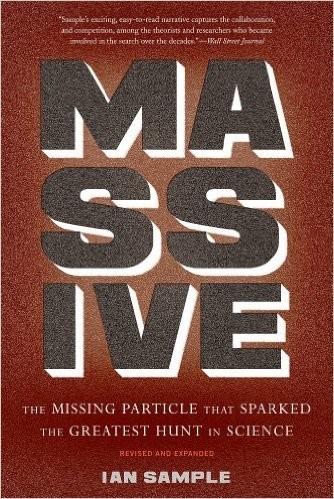
Massive: The Missing Particle That Sparked the Greatest Hunt in Science
by
Ian Sample
Published 1 Jan 2010
The paper, written by John Ellis, Mary Gaillard, and Dimitri Nanopoulos at CERN, opened on a cautionary note. “The situation with regard to Higgs bosons is unsatisfactory. First it should be stressed that they may well not exist,” the scientists wrote. They ended with an apology to the experimentalists working on the collider for having no idea what the mass of the Higgs boson was. The paper went on to anticipate the technical difficulties in finding the Higgs particle at all and concluded: “For these reasons we do not want to encourage big experimental searches for the Higgs boson, but we do feel that people performing experiments vulnerable to the Higgs boson should know how it may turn up.” The paper could not have been more cautious, but it gave scientists their first clues about how to hunt for the Higgs particle.
…
What it had not produced—as far as anyone could tell—was any real evidence of a Higgs boson. One afternoon, Miller left his office at the lab and climbed aboard a shuttle bus that had pulled up to take people to Geneva airport. As he sat waiting, the bus filled up with science journalists who were on a visit to find out what physicists at the laboratory were doing. Before long, he fell into conversation with them. “They said they had been to see this fellow, John Ellis, who had been trying to explain to them what the Higgs boson was,” Miller recalls. “They hadn’t understood a word of it.” Exasperated, the journalists begged Miller to explain the Higgs boson in the simplest language he could find.
…
A complicating factor is that at LEP the Higgs boson would never turn up alone. It would usually be made alongside a Z particle, which also decays into a spray of other particles. To find the Higgs boson, you would have to spot the tracks that all these particles made in a detector, and then work backward to see if any of them came from the elusive beast. There’s more to finding the Higgs particle than just waiting for the telltale signature of streaks and swirls to show up. With every Higgs hunt there is an added frustration. Other particles made in the machine can produce signals that look just like the Higgs boson. For example, as soon as LEP reached an energy of 182 GeV, which happened late in 1997, each collision was sufficiently energetic to produce two Z particles.
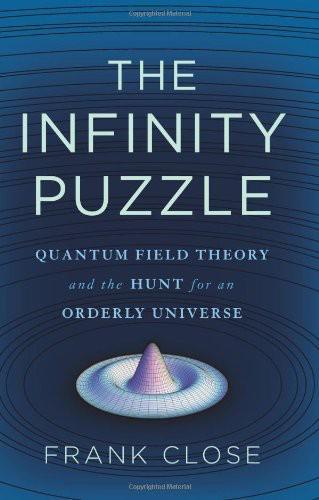
The Infinity Puzzle
by
Frank Close
Published 29 Nov 2011
As the dawn heralds the sunrise, so these quantum effects preview phenomena that lie beyond the current energy horizon. Excitement mounted when it was realized that here, possibly, were the first signs of the Higgs Boson. It began to look as if the requirements for producing the Higgs Boson in the laboratory were probably tantalizingly just out of the reach of LEP but achievable at the LHC. There is one further feature of these results, which touches on the Infinity Puzzle of electroweak interaction and the role of the Higgs Boson. This concerns the mass of the electron. The Higgs Boson made its entrance as The Mechanism for giving masses to the W and Z. The idea that leptons and quarks also acquire their masses through this mechanism was suggested in Weinberg’s seminal 1967 paper, but in principle the mass mechanism for fermions is independent of what happens with gauge bosons.
…
Chapter 9 “the boson that has been named after me,” a.k.a. the hig gs boson How Peter Higgs—and many others—discover the “Higgs Mechanism” for creating mass. The Higgs Boson—why it is now so important for particle physicists, why it is named after him, and how to become famous in three weeks. “ G osh! Big’s no way to describe it, though it’s important in theory [5,5].” The Higgs Boson is so famous that its anagram appears in Nick Kemmer’s favorite crossword: the Guardian.1 Ask why CERN in Geneva is building the Large Hadron Collider (LHC), costing some $10 billion,2 and the stock answer will be “to discover the Higgs Boson.” Yet who is Higgs? With such an expensive boson named after him, were it to be found, the popular wisdom is that a Nobel Prize would surely follow.
…
The BBC Web site promoted the version that the “Higgs Boson” was “proposed in 1964 by physicists Peter Higgs, François Englert and Robert Brout.”6 It is indeed true that Brout and Englert beat Higgs into print by just two weeks and were recognized in 2004 when they and Higgs shared the Wolf Prize, widely re- “The Boson That Has Been Named After Me,” a.k.a. the Higgs Boson 153 garded as the most prestigious award after the Nobel itself; however, as we shall see, although they did introduce the concept of the Higgs Field, there is no explicit mention of any massive “Higgs Boson” in their paper.7 In 2010 the J.
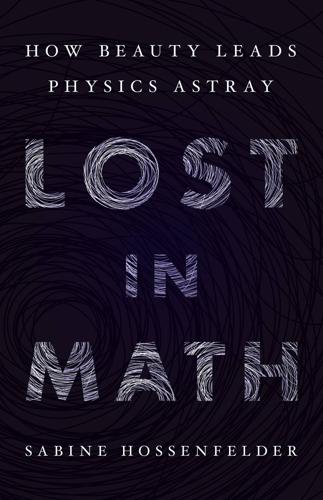
Lost in Math: How Beauty Leads Physics Astray
by
Sabine Hossenfelder
Published 11 Jun 2018
There are many excellent books about the standard model and particle accelerators that go into more detail than is necessary for my purposes. Just to mention two recent ones: Carroll S. 2013. The particle at the end of the universe: how the hunt for the Higgs boson leads us to the edge of a new world. New York: Dutton; Moffat J. 2014. Cracking the particle code of the universe: the hunt for the Higgs boson. Oxford, UK: Oxford University Press. 2. Eberhart O et al. 2012. “Impact of a Higgs boson at a mass of 126 GeV on the standard model with three and four fermion generations.” Phys Rev Lett. 109:241802. arXiv:1209.1101 [hep-ph]. Appendix B: The Trouble with Naturalness 1.
…
The development of the standard model began in the 1960s and was largely completed by the late 1970s. Besides the fermions and gauge bosons, there is only one more particle in the standard model: the Higgs boson, which gives masses to the other elementary particles.2 The standard model works without the Higgs; it just doesn’t describe reality, because then all the particles are massless. Sheldon Glashow therefore once charmingly referred to the Higgs as the “flush toilet” of the standard model—it was invented for a purpose, not because it’s pretty.3 The Higgs boson, proposed independently by several researchers in the early 1960s, was the last fundamental particle to be discovered (in 2012), but it was not the last particle to be predicted.
…
Indeed, with suitable units, any dimensionful number can be made to be 1. The speed of light, for example, is equal to 1 in units of light-years per year. So when physicists fret about numbers, it’s only the ones without units that are worrisome, such as the ratio of the mass of the Higgs boson to the mass of the electron, which comes out to be approximately 250,000:1. The conundrum with the mass of the Higgs boson, which we discussed earlier, isn’t that the mass itself is small, since such a statement depends on the units involved and is therefore meaningless. The Higgs mass is 1.25 × 1011 eV, which looks large, but that’s the same as 2.22 × 10−21 gram, which looks tiny.

Neutrino Hunters: The Thrilling Chase for a Ghostly Particle to Unlock the Secrets of the Universe
by
Ray Jayawardhana
Published 10 Dec 2013
Giuseppe Franco Bassani and Council of the Italian Physical Society (Società Italiana di Fisica and Springer, 2006). 161 “how difficult it is”: This and other Giorgio Gratta quotes are from a telephone interview conducted by the author on March 19, 2012. 161 CUORE: Description of the use of lead from a sunken ship is based on Nicola Nosengo’s report “Roman Ingots to Shield Particle Detector,” Nature News, April 15, 2010, www.nature.com/news/2010/100415/full/news.2010.186.html; and Edwin Cartlidge’s article “Ancient Romans Join Neutrino Hunt,” Physics World, April 23, 2010, http://physicsworld.com/cws/article/news/2010/apr/23/ancient-romans-join-neutrino-hunt. 162 EXO-200: Sources include www.symmetrymagazine.org/article/february-2010/exo-takes-clean-to-an-extreme and an interview with Giorgio Gratta. 163 Hans Klapdor-Kleingrothaus: Description of his results and interpretation is based on the author’s interviews with Hitoshi Murayama, Giorgio Gratta, and Karsten Heeger, and on other sources including Edwin Cartlidge, “Double Trouble for Beta Decay,” Physics World, July 2004, p. 8; see also March 2002, p. 5—online at http://physicsworld.com/cws/article/news/2002/feb/11/rare-decay-claim-stirs-controversy; and “Neutrino Physics: Beta Test,” also by Cartlidge in Nature, July 12, 2012, pp. 160–62, online at www.nature.com/news/neutrino-physics-beta-test-1.10988. 164 “Since it is such a profound”: This and other Karsten Heeger quotes are from a telephone interview conducted by the author on March 16, 2012. 8. SEEDS OF A REVOLUTION 168 Chasing the Higgs boson: For accessible accounts, see Sean Carroll, The Particle at the End of the Universe: How the Hunt for the Higgs Boson Leads Us to the Edge of a New World (New York: Dutton, 2012); and Dennis Overbye, “Chasing the Higgs Boson,” The New York Times, March 5, 2012, online at www.nytimes.com/2013/03/05/science/chasing-the-higgs-boson-how-2-teams-of-rivals-at-CERN-searched-for-physics-most-elusive-particle.html; for historical background, see also Ray Jayawardhana, “Something for Nothing,” in Times Higher Education Supplement, August 7, 1992, p. 15. 170 “It’s certainly been”: Peter Higgs quotes are from a press conference at the University of Edinburgh, July 6, 2012; video available online at www.ed.ac.uk/news/all-news/120704-higgs July 6, 2012. 170 “But it is a pity”: Stephen Hawking quote is taken from Paul Rincon, “Higgs Boson- Like Particle Discovery Claimed at LHC,” on the BBC News website, July 4, 2012, www.bbc.co.uk/news/world-18702455. 170 firmed up the Higgs detection: See the CERN press release “New Results Indicate That Particle Discovered at CERN is a Higgs Boson,” March 14, 2013, online at http://press.web.cern.ch/press-releases/2013/03/new-results-indicate-particle-discovered-cern-higgs-boson. 170 “Higgs is the last”: All Steven Weinberg quotes in this chapter are from a telephone interview conducted by the author on August 10, 2012. 171 “The zero mass”: All Georg Raffelt quotes are from a telephone interview conducted by the author on March 21, 2012. 171 “Zero we could”: This André de Gouvêa quote is from a telephone inter-view conducted by the author on March 20, 2012. 172 KATRIN: See the project website at www.katrin.kit.edu. 174 In fact, one of the best: See, for example, Signe Riemer–Sørensen et al., “WiggleZ Dark Energy Survey: Cosmological Neutrino Mass Constraint from Blue High-Redshift Galaxies,” Physical Review D 85, no. 8 (2012), online at http://arxiv.org/abs/1112.4940. 174 Licia Verde: Quotes from an e-mail interview conducted by the author on March 30, 2013, also informed this section. 174 relic neutrinos: See, for example, Andreas Ringwald, “Prospects for the direct detection of the cosmic neutrino background,” http://arxiv.org/abs/0901.1529. 175 Even geophysicists are: Description of conflicting ages derived by Charles Darwin and William Thomson is based, in part, on “Fusion” at Nobelprize.org (2012), online at www.nobelprize.org/nobel_prizes/physics/articles/fusion/sun_1.html; also see Thomas Hayden, “What Darwin Didn’t Know,” Smithsonian, February 2009. 176 “Emboldened by the remarkable”: Lawrence Krauss quotes are from his article “Why I Love Neutrinos,” Scientific American, June 2010. 177 geoneutrinos: Discussion of geoneutrinos and the Earth’s internal heat is based on several sources, including Lawrence M.
…
SEEDS OF A REVOLUTION 168 Chasing the Higgs boson: For accessible accounts, see Sean Carroll, The Particle at the End of the Universe: How the Hunt for the Higgs Boson Leads Us to the Edge of a New World (New York: Dutton, 2012); and Dennis Overbye, “Chasing the Higgs Boson,” The New York Times, March 5, 2012, online at www.nytimes.com/2013/03/05/science/chasing-the-higgs-boson-how-2-teams-of-rivals-at-CERN-searched-for-physics-most-elusive-particle.html; for historical background, see also Ray Jayawardhana, “Something for Nothing,” in Times Higher Education Supplement, August 7, 1992, p. 15. 170 “It’s certainly been”: Peter Higgs quotes are from a press conference at the University of Edinburgh, July 6, 2012; video available online at www.ed.ac.uk/news/all-news/120704-higgs July 6, 2012. 170 “But it is a pity”: Stephen Hawking quote is taken from Paul Rincon, “Higgs Boson- Like Particle Discovery Claimed at LHC,” on the BBC News website, July 4, 2012, www.bbc.co.uk/news/world-18702455. 170 firmed up the Higgs detection: See the CERN press release “New Results Indicate That Particle Discovered at CERN is a Higgs Boson,” March 14, 2013, online at http://press.web.cern.ch/press-releases/2013/03/new-results-indicate-particle-discovered-cern-higgs-boson. 170 “Higgs is the last”: All Steven Weinberg quotes in this chapter are from a telephone interview conducted by the author on August 10, 2012. 171 “The zero mass”: All Georg Raffelt quotes are from a telephone interview conducted by the author on March 21, 2012. 171 “Zero we could”: This André de Gouvêa quote is from a telephone inter-view conducted by the author on March 20, 2012. 172 KATRIN: See the project website at www.katrin.kit.edu. 174 In fact, one of the best: See, for example, Signe Riemer–Sørensen et al., “WiggleZ Dark Energy Survey: Cosmological Neutrino Mass Constraint from Blue High-Redshift Galaxies,” Physical Review D 85, no. 8 (2012), online at http://arxiv.org/abs/1112.4940. 174 Licia Verde: Quotes from an e-mail interview conducted by the author on March 30, 2013, also informed this section. 174 relic neutrinos: See, for example, Andreas Ringwald, “Prospects for the direct detection of the cosmic neutrino background,” http://arxiv.org/abs/0901.1529. 175 Even geophysicists are: Description of conflicting ages derived by Charles Darwin and William Thomson is based, in part, on “Fusion” at Nobelprize.org (2012), online at www.nobelprize.org/nobel_prizes/physics/articles/fusion/sun_1.html; also see Thomas Hayden, “What Darwin Didn’t Know,” Smithsonian, February 2009. 176 “Emboldened by the remarkable”: Lawrence Krauss quotes are from his article “Why I Love Neutrinos,” Scientific American, June 2010. 177 geoneutrinos: Discussion of geoneutrinos and the Earth’s internal heat is based on several sources, including Lawrence M.
…
The most direct way to test whether the Higgs field exists and to determine its properties is to detect the particle associated with it. In quantum mechanics we think of the Higgs boson as a vibration in the Higgs field. If there were no field, there would not be any vibrations, so detecting a particle would prove the corresponding field’s existence. To create a vibration in the field, you have to disturb it, much as you would disturb a pond if you dropped a pebble into it. Scientists hoped that if they collided particles with enough energy in a particle accelerator, that would create a strong enough perturbation in the Higgs field to observe the Higgs boson. Unfortunately, the Higgs field theory provided little guidance to experimentalists: it did not specify the mass of the Higgs boson, so they did not know how energetic the collisions would have to be for it be detectable.

Collider
by
Paul Halpern
Published 3 Aug 2009
Richard Hahn, Otto Haidt, Dieter Hawking, Stephen Hawking radiation heavy hydrogen Heisenberg, Werner helium hermeticity Hernandez, Paul Herschel, William Hertz, Heinrich hierarchy problem Higgs, Peter Higgs boson CERN particle detector research on description of Higgs’s work with Large Hadron Collider (LHC) search for lepton collider in search for nickname of “God particle” for original reception to first publication of research by Higgs on possibility of multiple Higgs particles Standard Model prediction of Higgs field. See Higgs boson Higgs mechanism Higgs particle. See Higgs boson high-temperature superconductivity Hoddeson, Lillian hot dark matter Hoyle, Fred Hubble, Edwin Hughes, James hydrogen IBM induction inflation infrared radiation inner detector Interacting Storage Rings (ISR) intermediate vector bosons International Linear Collider (ILC) inverse-square laws ionization, for tracking charged particles ISABELLE collider Ising, Gustav isotopes Jackson, J.
…
That’s similar to the high-temperature case for Higgs bosons. However, suppose the first house appears in the southwest corner of one of the tracts. The neighboring houses, required to be a specific distance from others, would have to do the same. Eventually, all of the tracts would be occupied with houses on their southwest corners—breaking their original symmetry because of a single, arbitrary, local decision. If the first house had been built in the northeast corner instead, perhaps that would have set the overall trend as well. Similarly, the phase choice of a Higgs boson locally sets the overall phase globally.
…
Its designation as the Standard Model is a recognition of its extraordinary importance. According to theoretical predictions, a remnant of the original Higgs field ought to be leftover and detectable. Surprisingly, despite several decades of experimental investigations at that energy, the Higgs boson has yet to be found. Through the LHC, the physics community hopes at long last to identify the Higgs boson and establish the Standard Model on debt-free grounds. LHC researchers are fully aware that the Standard Model could prove to be incomplete. Too many mysteries remain about inequities in the universe for the Standard Model to be the be-all and end-all, anyway.
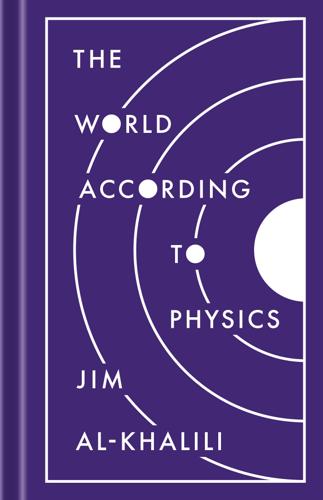
The World According to Physics
by
Jim Al-Khalili
Published 10 Mar 2020
But, above all else, it was billed as the accelerator that would find the Higgs boson, and it duly did—surely, a resounding success and a justification for the huge cost of the project. But since then, there has been mounting frustration that nothing more has been discovered—both from scientists in other disciplines envious of the funding that CERN receives, and from theoretical physicists impatient for confirmation of their latest predictions. And what of the Higgs discovery itself? What new insights has it given us about the nature of matter? It’s worth noting that the Higgs boson is merely the particle manifestation (excitation) of the more fundamental Higgs field—yet another quantum field that pervades all space and an important ingredient of the Standard Model, because the way other particles move through the Higgs field is what gives them their mass.
…
Many physicists today feel that we might potentially be on the verge of another revolution in physics as big as that seen a century ago with the birth of relativity and quantum mechanics. I am not suggesting that we are about to discover some fundamental new phenomenon, like X-rays or radioactivity, but there may yet be a need for another Einstein to break the current deadlock. The Large Hadron Collider has not yet followed up on its 2012 success in detecting the Higgs boson, and thereby confirming the existence of the Higgs field (which I will discuss later); many physicists were hoping for the discovery of other new particles by now, which would help resolve long-standing mysteries. And we still don’t understand the nature of the dark matter holding galaxies together or the dark energy that is ripping the universe apart; nor do we have answers to fundamental questions like why there is more matter than antimatter; why the properties of the universe are so finely tuned to allow for stars and planets, and life, to exist; whether there is a multiverse; or whether there was anything before the Big Bang that created the universe we see.
…
This is why Stephen Hawking never won a Nobel Prize for his work in the mid-1970s on the way black holes radiate energy, a phenomenon known as Hawking radiation: the Nobel is only awarded to theories or discoveries that have been confirmed experimentally. Likewise, Peter Higgs and others who made a similar prediction had to wait half a century for the existence of the Higgs boson to be confirmed at the Large Hadron Collider. It is also the reason why physics as a scientific discipline only began to make truly impressive advances once the tools and instruments necessary to test theories—through observation, experimentation, and quantitative measurement—had been invented.
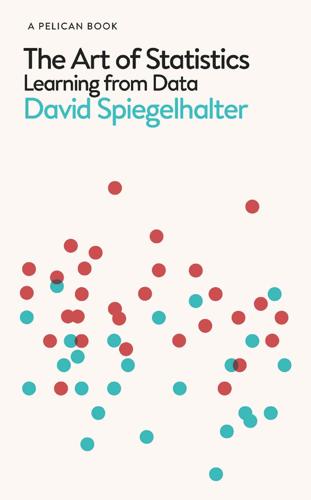
The Art of Statistics: Learning From Data
by
David Spiegelhalter
Published 14 Oct 2019
This means that the overall chance of approving a drug, that in truth has no benefit at all, is 0.05 × 0.05 = 0.0025, or 1 in 400. 5. Does the Higgs boson exist? Throughout the twentieth century, physicists developed a ‘standard model’ intended to explain the forces operating at a subatomic level. One piece of the model remained an unproved theory: the ‘Higgs field’ of energy which permeates the universe, and gives mass to particles such as electrons through its own fundamental particle, the so-called Higgs boson. When researchers at CERN finally reported the discovery of the Higgs boson in 2012, it was announced as a ‘five-sigma’ result.5 But few people would have realized this was an expression of statistical significance.
…
Are mothers’ heights associated with their sons’ heights, once the fathers’ heights are taken into account? Does the Higgs boson exist? This list shows that very different kinds of question can be asked, ranging from the transient to the eternal: Homicides and the Poisson distribution: a general rule that is not of great interest to the public, but helps to answer whether there has been a change in underlying rates. Changing unemployment: a specific question concerning a particular time and place. Statins: a scientific statement, but specific to a group. Mothers’ heights: possibly of general scientific interest. Higgs boson: could change the basic ideas of the physical laws of the universe.
…
Mothers’ heights have no effect on sons’ heights, once fathers’ heights are taken into account. The Higgs boson does not exist. The null hypothesis is what we are willing to assume is the case until proven otherwise. It is relentlessly negative, denying all progress and change. But this does not mean that we actually believe the null hypothesis is literally true: it should be clear that none of the hypotheses listed above could plausibly be precisely correct (except possibly the non-existence of the Higgs boson). So we can never claim that the null hypothesis has been actually proved: in the words of another great British statistician, Ronald Fisher, ‘the null hypothesis is never proved or established, but is possibly disproved, in the course of experimentation.
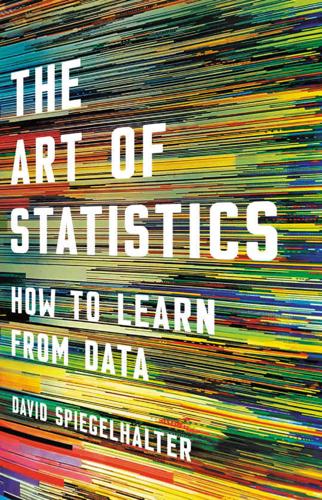
The Art of Statistics: How to Learn From Data
by
David Spiegelhalter
Published 2 Sep 2019
This means that the overall chance of approving a drug, that in truth has no benefit at all, is 0.05 × 0.05 = 0.0025, or 1 in 400. 5. Does the Higgs boson exist? Throughout the twentieth century, physicists developed a ‘standard model’ intended to explain the forces operating at a subatomic level. One piece of the model remained an unproved theory: the ‘Higgs field’ of energy which permeates the universe, and gives mass to particles such as electrons through its own fundamental particle, the so-called Higgs boson. When researchers at CERN finally reported the discovery of the Higgs boson in 2012, it was announced as a ‘five-sigma’ result.5 But few people would have realized this was an expression of statistical significance.
…
Suppose, based on theoretical grounds alone, we judged it 50:50 whether the Higgs boson existed, corresponding to prior odds of 1. The data discussed in the last chapter gave a P-value of around 1/3,500,000, and this can be converted to a maximum Bayes factor of around 80,000 in favour of the Higgs boson, which is very strong evidence even according to legal usage. * Table 11.3 Kass and Raftery’s scale for interpretation of Bayes factors in favour of a hypothesis.8 When combined with prior odds of 1, this turns into posterior odds of 80,000 to 1 for the existence of the Higgs boson, or a probability of 0.99999. But neither the legal nor scientific community generally approve of this kind of analysis, even if it can be used for Richard III.
…
Are mothers’ heights associated with their sons’ heights, once the fathers’ heights are taken into account? 5. Does the Higgs boson exist? This list shows that very different kinds of question can be asked, ranging from the transient to the eternal: 1. Homicides and the Poisson distribution: a general rule that is not of great interest to the public, but helps to answer whether there has been a change in underlying rates. 2. Changing unemployment: a specific question concerning a particular time and place. 3. Statins: a scientific statement, but specific to a group. 4. Mothers’ heights: possibly of general scientific interest. 5. Higgs boson: could change the basic ideas of the physical laws of the universe.
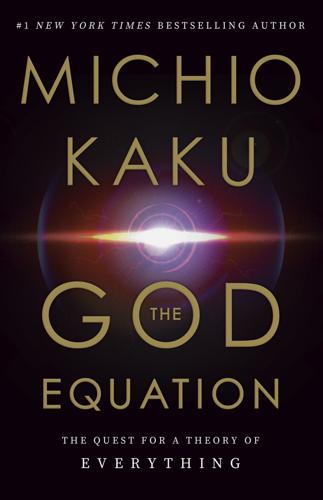
The God Equation: The Quest for a Theory of Everything
by
Michio Kaku
Published 5 Apr 2021
What set it in motion? Why did the universe expand at all? Guth then took some inspiration from the Standard Model. In the quantum theory, you start with a symmetry, and then you break it with the Higgs boson to get the universe that we see all around us. Similarly, Guth then theorized that maybe there was a new type of Higgs boson (called the inflaton) that made inflation possible. As with the original Higgs boson, the universe started out in the false vacuum that gave us the era of rapid inflation. But then quantum bubbles occurred within the inflaton field. Inside the bubble, the true vacuum emerged, where the inflation had stopped.
…
This new theory was christened quantum chromodynamics (QCD), and today this represents the best-known representation of the strong nuclear force. Higgs Boson—The God particle So gradually, a new theory was emerging from all this chaos, called the Standard Model. The confusion surrounding the zoo of subatomic particles was lifting. The Yang-Mills field (called the gluon) held the quarks together in the neutron and proton, and another Yang-Mills field (called the W and Z particles) described the interaction between electrons and neutrinos. But what prevented final acceptance of the Standard Model was the lack of the final piece of the jigsaw puzzle of particles, called the Higgs boson, or sometimes the God particle.
…
The most glaring problem is that, for all the flattering press extolling the beauty and complexity of the theory, we have no solid, testable evidence. Once, it was hoped that the Large Hadron Collider (LHC) outside Geneva, Switzerland, the biggest particle accelerator in history, would find concrete evidence for the final theory, but this has remained elusive. The LHC was able to find the Higgs boson (or the God particle), but this particle was only a tiny missing piece of the final theory. Although ambitious proposals have been made for an even more powerful successor to the LHC, there is no guarantee that these costly machines will find anything at all. No one knows for certain at what energy we will find new subatomic particles that could verify the theory.
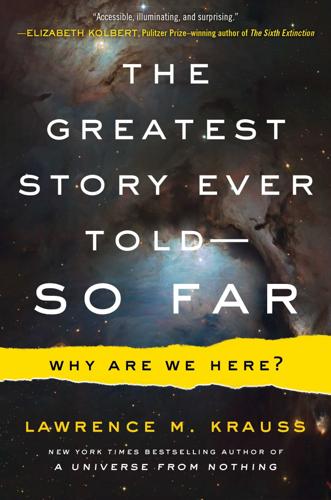
The Greatest Story Ever Told--So Far
by
Lawrence M. Krauss
Published 21 Mar 2017
For the theory to work, there must be two Higgs bosons, not just one. Moreover, one would expect to begin to see the new supersymmetric particles if one built an accelerator such as the LHC, which could probe for new physics near the electroweak scale. Finally, in what looked for a while like a rather damning constraint, the lightest Higgs in the theory could not be too heavy or the mechanism wouldn’t work. As searches for the Higgs continued without yielding any results, accelerators began to push closer and closer to the theoretical upper limit on the mass of the lightest Higgs boson in supersymmetric theories.
…
R., 207 Hall, Lawrence, 213 Han, Moo-Young, 233 Hegel, Georg Wilhelm Friedrich, 80 Heisenberg, Werner, 84–86, 127 background of, 84–85 exchange of particles in nucleus and, 140–41 on his discovery of quantum mechanics, 84, 85–86 impact of discoveries of, 95, 151 isotopic spin and, 169 Yukawa’s work with research of, 142–43, 144 Heisenberg uncertainty principle, 104, 105, 141 classical worldview of nature versus, 91 measurement of electron trajectories and, 100 observer effect confused with, 90 properties of quantum systems and, 86–90 Higgs, Peter, 203–7, 231, 271 background of, 203–4 Glashow on research of, 207, 254, 276 Higgs boson publication of, 206, 207 quarks and, 204 spontaneous symmetry and, 205–7, 214 Higgs boson doubts about existence of, 255, 270 first publication on, 206 forcing emergence of, 256–57 gauge symmetry and, 217, 254, 255 inflation and, 294–95 mass estimation for, 254–55 naming of, 207 quantum mechanical properties of, 283 reaction to discovery of, 274 Standard Model and, 282–83, 288, 297 supercollider for research on, 259, 262–63, 270, 271, 272–73, 275, 284, 285, 287 supersymmetric scale of, 283–85 weak interactions with, 217–18 Z particle and, 220 Higgs condensate, 217–18 Higgs field, 248, 254, 256, 275–76, 284, 291 Higgs mechanism, 211, 215, 218, 232 high-temperature superconductors, 194–95 Hilbert, David, 170 Hitchens, Christopher, 305 Hooke, Robert, 22, 24 Huygens, Christiaan, 22 I Iliopoulos, John, 234 intensity interferometer, 72 Introduction to Theoretical Physics (Planck), 142 isotopic spin gauge symmetry and, 173, 175, 176 Heisenberg’s invention of, 169 nuclear reactions and conservation of, 171, 172, 173 quark decay and, 234 J Jeans, Sir James, 80 Joliot-Curie, Irène and Frédéric, 116–18, 119 Jordan, Pascual, 85 K Kamiokande water detector, Japan, 280, 281 Kendall, Henry, 232–33 Keynes, John Maynard, 20–21 Kibble, Tom, 207 Klein, Abraham, 204, 205 L Landau, Lev, 235–36, 237, 240 Large Electron-Positron (LEP) Collider, CERN, 262–63 Large Hadron Collider (LHC), CERN, 263–74 characteristics of, 264–67 dark matter research at, 286–87 design and construction of, 263–64, 269–70 detectors used at, 267–69 Higgs discovery at, 271–73, 274, 285 particle research using data collection at, 61, 269–71, 275, 299 supersymmetric partners research at, 285 Laser Interferometer Gravitational-Wave Observatory (LIGO), Washington and Louisiana, 293 Lattes, Cesare, 148 Law of Inertia, 48 law of motion (Newton), 48, 72–73, 245 law of radiation (Planck), 78–81, 89, 115 Lederman, Leon, 160, 161 Lee, Ben, 204, 205 Lee, Tsung-Dao background of, 153–54 parity doubling concept of, 157, 158–59, 160, 161, 168 Yang’s collaborations with, 153–54 Lenard, Philipp, 80 Le Verrier, Urbain, 94 Lewis, C.
…
A practiced and skilled writer, he succeeds in making the physics ‘as simple as possible but no simpler.’ I don’t know a better book on this subject.” —Martin Rees, author of Just Six Numbers “It is an exhilarating experience to be led through this fascinating story, from Galileo to the Standard Model and the Higgs boson and beyond, with lucid detail and insight, illuminating vividly not only the achievements themselves but also the joy of creative thought and discovery, enriched with vignettes of the remarkable individuals who paved the way. It amply demonstrates that the discovery that ‘nature really follows the simple and elegant rules intuited by the twentieth- and twenty-first-century versions of Plato’s philosophers’ is one of the most astonishing achievements of the human intellect.”
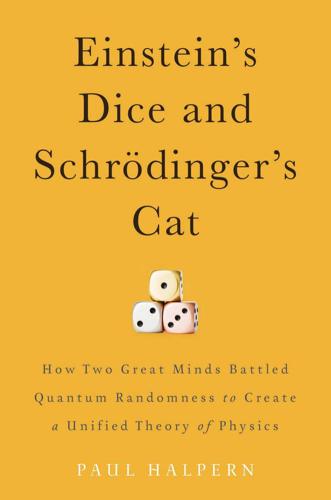
Einstein's Dice and Schrödinger's Cat: How Two Great Minds Battled Quantum Randomness to Create a Unified Theory of Physics
by
Paul Halpern
Published 13 Apr 2015
Peter Higgs, one of the recipients of the 2013 Nobel Prize in physics, has become a rare contemporary example of a well-known, accomplished theorist. Yet his name recognition hardly rivals Einstein’s. The particle named after him, the Higgs boson, has come to be known colloquially as the “God particle.” When it was discovered in 2012, much of his press coverage was shared with a divine being. (To India’s dismay, its native son Satyendra Bose hardly got any mention.) Triumph of the Standard Model The discovery of the Higgs boson has supplied the last missing puzzle piece of the standard model of particle physics—the closest thing we have today to a unified field theory. The standard model includes a unified explanation of electromagnetism and the weak interaction, in tandem known as the electroweak interaction.
…
These included the presence of a weak neutral current (weak interaction between particles of like charge), the existence of the W+, W-, and Z0 exchange bosons at certain masses, and the actuality of the Higgs boson. Over the course of the 1970s and 1980s, particle accelerator experiments at CERN (European Organization for Nuclear Research), near Geneva, Switzerland, verified each of those predictions except for the last. Finally, the Higgs boson was confirmed through particle collision data collected at CERN’s Large Hadron Collider. 227 Einstein’s Dice and Schrödinger’s Cat Along with electroweak unification, the standard model also includes a theoretical description of the strong interaction that involves exchange particles called gluons.
…
Although it was never incorporated into general relativity, Weyl’s gauge idea was later applied to a different domain, particle physics, where it found much success. In the modern concept, instead of actual space, the gauge factor pertains to a kind of abstract space. Contemporary interest in the Higgs boson—essential for explaining the rest mass of certain particles—owes much to Weyl’s gauge concept. Adventures in the Fifth Dimension Yet another Göttingen graduate, Finnish physicist Gunnar Nordström, had proposed his own unified theory in 1914. It was remarkable because it was the first theory to include a fifth dimension, supplementing the three dimensions of space and the dimension of time.

Calling Bullshit: The Art of Scepticism in a Data-Driven World
by
Jevin D. West
and
Carl T. Bergstrom
Published 3 Aug 2020
For example, in 2012 scientists using the Large Hadron Collider in Geneva reported exciting results that supported the existence of the Higgs boson, an elementary particle that had long been predicted but never observed directly. Reporting on the story, National Geographic wrote that scientists “are more than 99 percent certain they’ve discovered the Higgs boson, aka the God particle—or at least a brand-new particle exactly where they expected the Higgs to be.” What National Geographic should have reported is that the p-value for the experiment was 0.01. The results obtained with the Large Hadron Collider would have had a 1 percent probability of appearing by chance even if there had been such a thing as a Higgs boson. This does not mean that scientists were 99 percent sure that the Higgs boson was real.
…
This does not mean that scientists were 99 percent sure that the Higgs boson was real. In the case of the Higgs boson, there were already good reasons to expect that the Higgs boson would exist, and its existence was subsequently confirmed. But this is not always the case.*6 The important thing to remember is that a very unlikely hypothesis remains unlikely even after someone obtains experimental results with a very low p-value. P-HACKING AND PUBLICATION BIAS Purely as a matter of convention, we often use a p-value of 0.05 as a cutoff for saying that a result is statistically significant.*7 In other words, a result is statistically significant when p < 0.05, i.e., when it would have less than 5 percent probability of arising due to chance alone.
…
Vivian-Griffiths, J. Boivin, A. Williams, L. Bott et al. “Exaggerations and Caveats in Press Releases and Health-Related Science News.” PLOS One 11 (2016): e0168217. Than, Ker. “ ‘God Particle’ Found? ‘Historic Milestone’ from Higgs Boson Hunters.” National Geographic. July 4, 2012. https://news.nationalgeographic.com/news/2012/07/120704-god-particle-higgs-boson-new-cern-science/. Turner, E. H., A. M. Matthews, E. Linardatos, R. A. Tell, and R. Rosenthal. “Selective Publication of Antidepressant Trials and Its Influence on Apparent Efficacy.” The New England Journal of Medicine 358 (2008): 252–60.

The Myth of Artificial Intelligence: Why Computers Can't Think the Way We Do
by
Erik J. Larson
Published 5 Apr 2021
But this concern aside, it is the shallow logic behind such approaches that spell deeper trouble for the institution of science. HIGGS BOSON In 2012, scientists discovered a long-missing piece of the standard model of physics, the Higgs boson. The discovery of Higgs boson is often attributed to an impressive piece of technology, the massive Large Hadron Collider (LHC) straddling the French-Swiss border. The LHC is seventeen miles of tubing constituting the world’s largest supercollider. Scientists used the LHC to design an experiment specifically testing for the existence of a particle accounting for mass in the universe, dubbed the “Higgs boson” after Peter Higgs, the scientist who first predicted its existence.
…
Scientists used the LHC to design an experiment specifically testing for the existence of a particle accounting for mass in the universe, dubbed the “Higgs boson” after Peter Higgs, the scientist who first predicted its existence. The result of the high-energy experiment using the LHC seemed to confirm Higgs’s theory about the existence of the particle (it was officially confirmed in 2013). But the case of the Higgs boson also illustrates the perverse tendency to downplay theory and champion computational methods that buttress wishful thinking about big data and AI. It’s true that supercomputing resources are necessary to make sense of the mountain of data generated by the supercollider. In 2012, the collider generated about twenty-five petabytes a year; by 2018 the number had doubled, equivalent to about fifteen million high-definition movies.
…
In 2012, the collider generated about twenty-five petabytes a year; by 2018 the number had doubled, equivalent to about fifteen million high-definition movies. There is no doubt that big data analytics and the computing resources necessary for processing such volumes of data give physicists a set of powerful tools for exploring the subatomic world. But the story of the Higgs boson, often touted as an example of Big Science success (and it was), is also a triumph of theoretical insight. Higgs’s case is particularly impressive as a case for theory, not for big data per se. Peter Higgs actually discovered the particle in 1964; the LHC then confirmed its existence. This is a case study in the proper use of technology to supplant human insight.
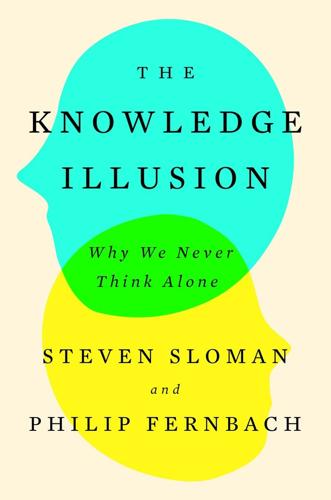
The Knowledge Illusion
by
Steven Sloman
Published 10 Feb 2017
Knowledge is so sophisticated at the cutting edge of science that huge teams are required to make progress. If you’re a fundamental physicist, the discovery of the Higgs boson in 2012 was a big deal, even earthshaking. The discovery helped physicists settle on the most fundamental theory yet of how the physical world works. Who made the discovery? It is tempting to give credit to Peter Higgs and François Englert, who won the Nobel Prize in Physics in 2013 for their contributions to the effort. But the truth is that the Higgs boson would never have been discovered without the efforts of thousands of physicists, engineers, and students from almost forty countries.
…
But the truth is that the Higgs boson would never have been discovered without the efforts of thousands of physicists, engineers, and students from almost forty countries. Nearly 3,000 people are authors on the key physics papers that led up to the discovery, not to mention all the workers who built and ran the $6.4 billion CERN supercollider in which the observations of the Higgs boson were made. No single individual was capable of even a fraction of the complex, specialized tasks required to do the work. The know-how was distributed among thousands of people. Psychological research has shown that people naturally divide up cognitive labor, often without thinking about it. Imagine you’re cooking up a special dinner with a friend. You’re a great cook, but your friend is the wine expert, an amateur sommelier.
…
See also team efforts vs. individuality ability to work well together, 210–14 contribution of individuals example, 122 individuals as contributors to a team, 206–14 polarization of views after discussion, 173–75 g score, 204–07 Haidt, Jonathan, 181–82 hairpin example of complexity, 34 Hartline, Haldan, 43–44 Haugeland, John, 86 Heider, Fritz, 64 Higgs boson example of the power of teamwork, 119 highway lines example of optic flow, 99 history attempts to create a uniform ideology, 174–75 and the importance of context, 9 simplified to increase understanding, 200–01 hive mind collaboration, 5–6, 128, 244–46 horseshoe crabs (Limulus polyphemus), 42–45 hunting for food, 108–10, 113 hyperthymesia, 38–40, 47–48, 96 ice hockey example of individuals as contributors to a team, 212–13 ideological purity, 174–75 ignorance consequences of exposing, 192 costs and benefits of, 258–59 course at Columbia University, 221 driving ability example, 257–58 inevitability of, 257 reducing through financial education, 240–41 illusion of comprehension, 217–18, 261 Illusion of Explanatory Depth (IoED) bicycle example, 23–24 CRT (Cognitive Reflection Test), 80–84 policy position example, 175–81 shattering the, 192 zipper example, 21–23 Ilyuk, Veronika, 164 Indian independence movement, 196–97 individuality vs. team efforts, 17–18, 118–21, 212 ability to work well together, 210–14 area of expertise example, 120 balance of complementary skills, having a, 207–14 Higgs boson example, 119 team effect of an individual’s online research, 137–38 wine expert example, 120 individuals as contributors to a team, 206–14 as decision-makers, 241 as the face of political movements, 196–97 as heroes in philosophy, 198 as heroes in science, 198–200 idolized in the entertainment industry, 197–98 as substitutes for complicated entities, 197 information distribution via block chain technology, 150 information overload.
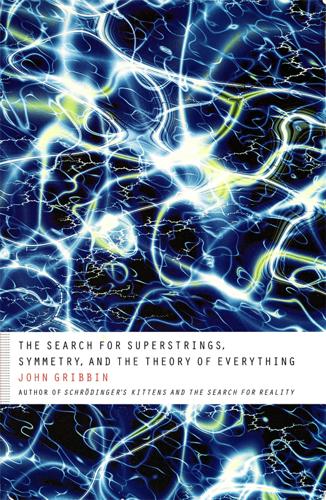
The Search for Superstrings, Symmetry, and the Theory of Everything
by
John Gribbin
Published 29 Nov 2009
The effect of all this on the vector bosons is dramatic. There are four scalar Higgs bosons required by the field theory, and as we already know the basic Yang-Mills approach gives three massless vector bosons. When the two elements are put together, three of the Higgs bosons and the three vector bosons merge with one another—in the graphic terminology used by Abdus Salam, the vector bosons each ‘eat’ one of the Higgs particles. And when this happens the vector bosons gain both mass and a spin corresponding to the spin carried by the Higgs bosons. Instead of having three massless vector bosons and four Higgs particles, the theory predicts that there should be three observable vector bosons which each have a definite mass, plus one scalar Higgs boson, which also has a large mass but whose precise mass cannot be predicted by the theory.
…
Instead of having three massless vector bosons and four Higgs particles, the theory predicts that there should be three observable vector bosons which each have a definite mass, plus one scalar Higgs boson, which also has a large mass but whose precise mass cannot be predicted by the theory. The Higgs field breaks the underlying symmetry in just the right way to fit in with what we observe. At the cost of one extra undetected particle, mass appears naturally in all the variations on the Yang-Mills approach. Higgs himself had been working in the context of the strong field. But his ideas were soon taken over into the developing electroweak theory. First off the mark was Steven Weinberg, in 1967.

Human Frontiers: The Future of Big Ideas in an Age of Small Thinking
by
Michael Bhaskar
Published 2 Nov 2021
Across disciplines there was a decreased tendency to award prizes for recent work compared with previous decades. Nielsen and Collison cite two modern examples as indicative: the discovery of gravitational waves and the Higgs boson. While both are fantastic, compare them to their originating theories. In 1915 Einstein's theory of general relativity ‘radically changed our understanding of space, time, mass, energy, and gravity’.33 Instead gravitational waves corroborate it; we are still confirming the predictions of a century ago. Likewise, the Higgs boson fits into a pattern of particle discovery that, in the twentieth century, populated a hitherto undreamt-of array of particles, from neutrons to antimatter.
…
Likewise, the Higgs boson fits into a pattern of particle discovery that, in the twentieth century, populated a hitherto undreamt-of array of particles, from neutrons to antimatter. In 2013 just two people, Peter Higgs and François Englert, won the Nobel Prize for the discovery of the Higgs boson. Yet 3000 people were named as authors on the key papers that went into finding it. CERN spent some $6 billion building the Large Hadron Collider, a major infrastructure with thousands more workers, builders, engineers and support staff. One or two people are hardly responsible for the discovery; all that activity is built atop fairly old predictions from individual minds. Expenditure, numbers of PhDs and publications have all grown between ten- and a hundredfold; yet scientific progress and significant discoveries, in the eyes of its most important contemporary exponents, haven't.
…
In the last decade the number of papers in the Nature Index with more than one thousand named authors increased from none to well over a hundred, while Web of Science records more than a thousand papers with over a thousand authors published in just the years 2014–2018.36 Again and again, the pattern of the Higgs boson is repeated: what took an individual or small team to begin requires thousands to finish. The structure of DNA was discovered by essentially three people: Watson, Crick and Franklin. When it came to one of the undoubted breakthroughs of recent times, the sequencing of the human genome, it took thirteen years, multiple global teams working with and against each other and, conservatively, thousands if not tens of thousands of highly trained scientists.

The Burning Answer: The Solar Revolution: A Quest for Sustainable Power
by
Keith Barnham
Published 7 May 2015
Then, when a really expensive, higher energy machine was needed to produce the now famous Higgs boson particle, the pendulum of physics swung yet again. A tunnel was dug in Texas, the first magnets were installed and my old friend Tom Dombeck tested them. Then the US decided that their machine would be too expensive. They joined forces with CERN to build a world machine in Geneva. Working together, the world’s physicists achieved their extremely difficult objective. The words ‘needle’ and ‘haystack’ are appropriate. The Higgs boson was discovered and the two theorists who predicted it, the Belgian François Englert and the Englishman Peter Higgs, shared the 2013 Nobel Prize in Physics.
…
The Higgs boson was discovered and the two theorists who predicted it, the Belgian François Englert and the Englishman Peter Higgs, shared the 2013 Nobel Prize in Physics. The Higgs boson, or God Particle as the press likes to call it, is an infinitely heavier, and very much more elusive, version of the super-hero of our story: the photon. By contrast, our photons are ubiquitous. Nature has provided us with an over-abundance of them. She has already discovered ways they can convert atmospheric carbon dioxide to carbohydrate fuel. World-wide, scientists have made great strides in developing carbon dioxide absorbers and the artificial leaf. In my mind, the technological challenge of using the photons falling on a rooftop to produce solar fuels is less than that of discovering the Higgs boson.
…
In my mind, the technological challenge of using the photons falling on a rooftop to produce solar fuels is less than that of discovering the Higgs boson. I also believe that the threat of global warming is such that we need to accelerate our efforts to exploit solar technologies and to develop solar fuels. An international organisation, including China, to research and promote solar energy would help. Such a laboratory was first suggested by Joseph Rotblat in 1979, the same year in which Mathison made the predictions in Chapter 11. Rotblat was the nuclear physicist who left the Manhattan Project as soon as it became clear that Germany was not developing a nuclear weapon.
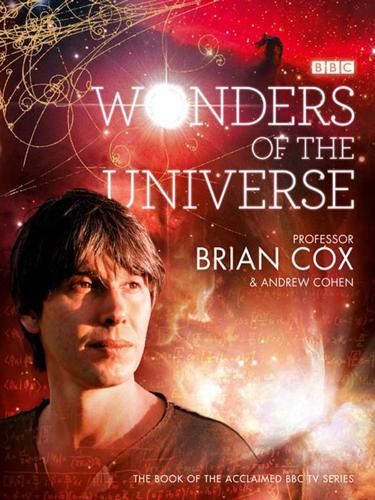
Wonders of the Universe
by
Brian Cox
and
Andrew Cohen
Published 12 Jul 2011
Our description of last of the four, the Weak Nuclear Force, resides in the Standard Model of particle physics. This theory, a product of the 1970s, unifies the description of the Weak Nuclear Force with Quantum Electrodynamics, although there is a missing piece of the theory known as the Higgs Boson that is currently being searched for at the Large Hadron Collider at CERN in Geneva. Until the Higgs Boson, or whatever does its job, is found, we cannot claim to have a working description of the Weak Nuclear Force and its relationship with electromagnetism. However despite the long pedigree and beautiful accuracy and elegance of Einstein’s theory of gravity, it is known to be incomplete.
…
Further investigation showed that each nucleus was composed of protons and neutrons and that each proton was composed of up and down quarks. We have now reached what is believed to be the smallest particles possible – scientists have now discovered that all matter is composed of 9 particles and 4 forces, plus the hypothetical Higgs Boson. The search for the basic building blocks of matter has used matter colliders, which can produce the very high energies that are required to recreate the temperatures in the early Universe, when these sub-atomic particles originally existed. Nathalie Lees © HarperCollins TIMELINE OF THE UNIVERSE: THE BIG BANG TO THE PRESENT The history of the Universe can be split into several phases, according to the physical conditions that existed at the time.
…
144–5, 184–5 zodiacal light and 164–5 GRB 090423 (star) 227, 229, 229 Great Rift Valley, Tanzania 46, 46, 47, 47 Greece, ancient 19, 38, 79, 83 Greenland 146, 146–7 Grisson, Gus 175 H H D 93129A (star) 75 H E 1523-0901 (star) 27 Hawker Hunter 42–3 Helix Nebula 124, 124 Herschel 36 (star) 29–30 Herschel Space Observatory Telescope 134, 135 Herschel, Sir John 120 Herschel, William 124 Hewish, Anthony 177, 182 Higgs Boson 12, 107 Himalayas 80, 92, 92, 93, 93 Hindu religion 8, 80–1 Homo Habilis 47, 48, 48 Hooke, Robert 32, 34 Hoyle, Sir Fred 177 Hubble Telescope 25, 50–5, 51, 52, 60–1, 64–5, 71, 85, 120, 142, 176, 180, 190, 231 Hubble Ultra Deep Field 54, 54, 55, 56, 59, 227 Hubble, Edwin 52, 60, 62, 149 Hubble’s Law 60, 63, 64–5 human ancestors 47, 48, 48 Huygens, Christiaan 32, 34, 41, 209 hydrogen bomb 115, 116 hypernova 31 Hypothesis of Light (Newton) 34 I IC 4406 (star) 124, 124 inflation 71, 106 infrared 68, 69 Infrared Telescope, UK’s (UKIRT) 227 Innes, Robert 98 Isaac Newton Telescope, La Palma, Canary Islands 12 J Jansky, Karl 168 Johanson, Donald 47 Joule, James 214–15 Jovian clock 40–1 Jupiter 40, 41, 41, 45, 164, 165, 174 K Karnak Temple, Luxor 17, 17, 18, 18, 19 Kathmandu, Nepal 80–1 Kepler, Johannes 19, 32, 38, 151 Kirchhoff, Gustav 98, 99 Kohoutek 4-55 (planetary nebula) 125, 125 Kolmanskop, Namibia 216–21, 216–17, 218, 219, 220 L Lagoon Nebula 29, 29 Large Hadron Collider (LHC) 12, 78, 79, 79, 107 Leakey, Louis 47 Leakey, Mary 47 Lenard, Andrew 180–1 Lescarbault 186 Leucippus 79, 91 Lewala, Zacharias 216 LGM–1 177, 182 Liberty Bell 7 175 light 11 a star is born 29–31 as an electromagnetic wave 34, 35, 36, 37, 59, 60, 64, 68, 69, 101, 191 barrier 43 birth of the universe and 66–75 connection with past 16, 31, 44, 45, 48–9, 52, 71 ‘corpuscles’ 34 cosmic clock and 39, 40–1 dawn of time and 46–7 diffraction of 34 finding Andromeda 48–9 first sight 72–5 Hubble Telescope and see Hubble Telescope infrared 68, 69 made up of a spectrum of colours 98–9 mapping the Milky Way galaxy 26–7 measuring/observing movement in, ancient 19–21 messengers from across the ocean of space 36–7 microwaves 68, 69, 70–1 galactic neighbourhood 24–5 our place in the universe 22–3 picturing the past 70–1 radio waves and 68–9, 84 rainbows 56–9 redshift see redshift speed of 37, 38–43 story of 16–31 the shape of our galaxy 28 time travel 44–65 visible 68–9 what is?
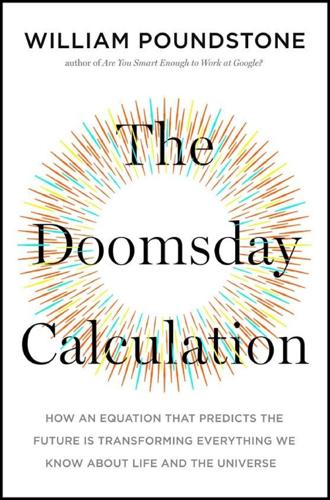
The Doomsday Calculation: How an Equation That Predicts the Future Is Transforming Everything We Know About Life and the Universe
by
William Poundstone
Published 3 Jun 2019
Pandora’s Box Buried in the mountainside near Geneva, CERN’s Large Hadron Collider (LHC) is the most powerful particle accelerator ever built. It is a circular vacuum tunnel in which magnets accelerate protons to nearly the speed of light. The protons smash into one another head-on, producing bursts of other particles. High among the LHC’s goals was to discover whether the Higgs boson exists. But the collider’s inauguration in late 2008–2009 was marred by a series of unfortunate events. One was unwelcome publicity. A handful of bloggers talked up speculation that the LHC’s unprecedentedly powerful collisions might create micro–black holes. Smaller than an atom, these hypothetical points of mass would fall through solid rock like it was air.
…
For the game to work—to save the world, that is—CERN’s leadership would have to agree to abide by the drawn card. It couldn’t be a bluff. The LHC cost $4.75 billion to build, paid by a politically complex consortium of European nations. Not surprisingly, CERN passed on the card game. The last thing they needed was any more doomsday media. On July 4, 2012, the LHC announced it had found a Higgs boson, which the media called the “God particle.” The LHC card experiment is one of the more colorful examples of an attempt to understand the nature of quantum reality. At issue is the “many worlds interpretation,” identified in the popular imagination with parallel universes. Many worlds has, however, become a serious scientific question, and self-sampling plays a role in ideas for testing it.
…
But if the Joker came up, that would constitute a near-miracle that would be impossible to shrug off. It would provide strong evidence for many worlds or backward causality or something way outside the scope of today’s understanding. Nielsen and Ninomiya suggested that such a finding would be even more important than discovering the Higgs boson. “A Postmodern Fanatical Religious Cult” Goethe’s 1774 novel The Sorrows of Young Werther presented such a tragically beautiful vision of self-destruction by pistol that it caused copycat suicides. Its spell lasted for centuries. The translation of the novel into Hebrew was blamed for a spate of suicides in the Zionist Palestine of the 1930s.
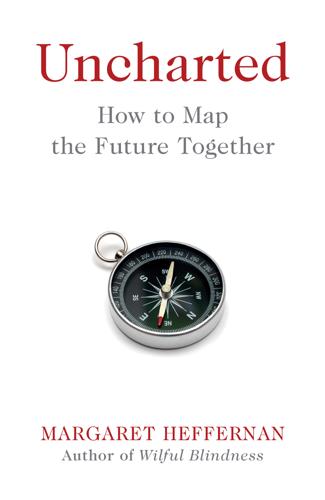
Uncharted: How to Map the Future
by
Margaret Heffernan
Published 20 Feb 2020
Great discoveries do come from scientists with a string of breakthroughs to their name, but they also come from newbies and overlooked veterans. There is no correlation between the impact of a discovery and its timing within a scientist’s career.18 What looks like a strong hypothesis – such as the Higgs boson – may take decades to validate. In the meantime, do you categorise Peter Higgs as a visionary or a flop? Mendel would never have been selected for his promise – he studied physics, not biology, missed much of his childhood education through illness and regularly failed exams. The Nobel laureate Kary Mullis, the inventor of polymerase chain reaction (PCR) that accelerated decoding the genome, was a self-described surfer pothead whose best idea came during a night-time drive to his beach shack.
…
As director general between 1994 and 1998, Christopher Llewellyn-Smith led one of the most ambitious phases of CERN’s existence: the funding of the Large Hadron Collider. In 1983, the W and Z bosons had been discovered at CERN – a discovery for which Carlo Rubbia and his colleague Simon van der Meer were awarded the Nobel Prize. This proved the existence of bosons (a particle, named after scientists Bose and Einstein) and spurred the hunt for the Higgs boson, as first proposed by Peter Higgs in 1964. But the collider that had found W and Z wasn’t up to the next task and a new collider – bigger, of course, and far more complex – was expected to cost $3 billion, more than had ever been spent on a single machine at CERN. In leading what he expected to be a huge battle, Llewellyn-Smith dispensed with the large bureaucracy he had inherited and instead created a small team to help him master the intricacy of raising such vast funds.
…
SUSY stands for SUperSYmmetry, a theory that might explain some peculiarities of particle physics’ standard model, which describes our current understanding of the universe. Researchers tell me it’s a nice theory; it should be true. But eighty years of work have failed to find any evidence that it is, and the scientists working at CERN know they could be dead before anyone finds out for sure. There was some hope that finding the Higgs boson would rule SUSY in or out; it did neither. The scientists who devoted their lives to this work can’t go back now and start on something different. But the longevity of the work is central to the motivation of those who take part in it. The work has meaning, because it’s audacious and because it connects this generation with all the generations of scientists on whom their research builds.
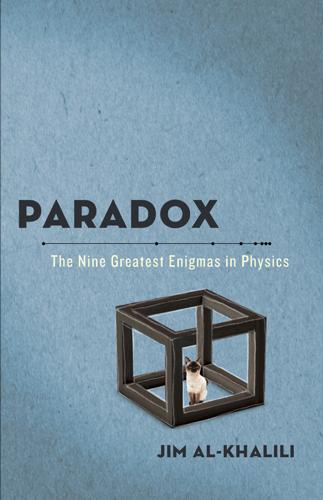
Paradox: The Nine Greatest Enigmas in Physics
by
Jim Al-Khalili
Published 22 Oct 2012
At the time of writing there are two as yet unresolved puzzles in particle physics that made headlines around the world in 2011; both are being addressed by experiments carried out at the particle accelerator in CERN, Geneva. The first is whether particles can travel faster than the speed of light; the second is whether the illusive Higgs boson, the elementary particle that gives substance to the Universe, actually exists. In both cases, results to date have been inconclusive, and in both cases further experimental work is required. In an effort to endow this book with reasonable longevity I will stick my neck out and offer a prediction about how these two issues will be resolved. The Higgs boson will be confirmed to exist in the summer of 2012; and subatomic particles called neutrinos will be found to travel at just under the speed of light.
…
The Higgs boson will be confirmed to exist in the summer of 2012; and subatomic particles called neutrinos will be found to travel at just under the speed of light. However, please do not hold it against me if I turn out to be wrong on one or both counts! Of the two announcements—the controversial news that some neutrinos can travel faster than the speed of light and the tentative discovery of the Higgs boson—the first one fits much more neatly into our definition of a scientific paradox. The story so far is that a joint collaboration between two European labs, CERN in Switzerland and Gran Sasso in central Italy, has measured the speed at which a beam of neutrinos can cover the 454 miles between the two labs traveling underground through solid rock, which they can do as though it were empty space because they hardly ever interact with anything.

Whistleblower: My Journey to Silicon Valley and Fight for Justice at Uber
by
Susan Fowler
Published 18 Feb 2020
I’ll never forget the moment I walked into the basement of the David Rittenhouse Laboratory for my interview. The hallways were lined with gigantic posters, including a picture of the ATLAS detector (an enormous particle detector at the Large Hadron Collider at CERN that particle physicists all around the world were using to search for the Higgs boson and supersymmetric particles), and a large detailed sketch of the ATLAS detector’s cross section, showing all of its electrical components and how they worked together. Taped to the walls were news clippings about famous particle physics discoveries, jokes about bosons and string theory, and photographs of professors and graduate students standing around pieces of the ATLAS detector.
…
After I’d been working on instrumentation for a year, I wanted to give analysis a try. The leader of the experimental particle physics group offered me a project: rewriting an algorithm that would comb through some ATLAS data and determine the percentage of electrons that looked like photons in one of the searches for the Higgs boson. I’d never written a line of code in my life, and my code was pretty awful in the beginning. I didn’t let myself get discouraged, though, because I knew from experience that I could pick anything up if I worked hard enough at it. I started working through free online coding classes at night, learning first the basics and then the intricacies of Python and C++.
…
Over the last three years, I’d worked my way up from being a transfer student who had never taken a real math or physics course in her life to being on track to pursue a physics PhD and become a career physicist. I’d designed electronics for the ATLAS and CMS detectors, worked on a redesign of the electronics that powered the Roberts Proton Therapy Center at the Hospital of the University of Pennsylvania, and worked on a search for the Higgs boson and two types of supersymmetric particles at the LHC. As I prepared to apply for PhD programs that fall, I felt confident. I had good grades in my graduate courses, and I knew I wouldn’t have a problem getting great letters of recommendation from professors in the department. I was so close to my dream that it already felt like a reality.
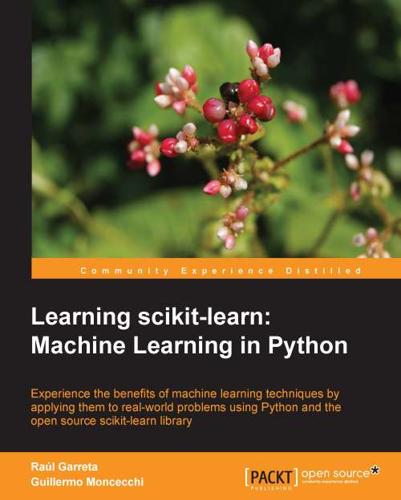
Learning Scikit-Learn: Machine Learning in Python
by
Raúl Garreta
and
Guillermo Moncecchi
Published 14 Sep 2013
As a member of the ATLAS collaboration, he has been a part of the search team for the Higgs boson using high energy proton-proton collisions at CERN's Large Hadron Collider (LHC) in Geneva, Switzerland. In his free time, he enjoys contributing to open source scientific software, including scikit-learn. He has developed a significant interest toward Machine learning, to the benefit of his research where he has employed many of the concepts and techniques introduced in this book to improve the identification of tau leptons in the ATLAS detector, and later to extract the small signature of the Higgs boson from the vast amount of LHC collision data.
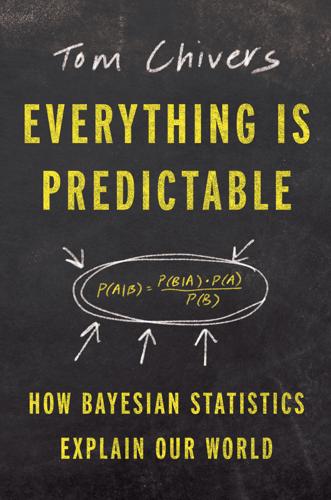
Everything Is Predictable: How Bayesian Statistics Explain Our World
by
Tom Chivers
Published 6 May 2024
We should all be able to look at the outcome of some experiment, or some observational study of the chest measurements of Scottish soldiers, or whatever, and agree on what it says. What the Bayesian model seems to say is that whether something is true or not depends on how strongly I believed it before. So if we carry out a study on homeopathy or the Higgs boson and find some positive result, then you might think that result very likely to be real, and I might not, and we might both be correct to do so—if our prior probabilities were sufficiently different. There’s something soft and squishy about the idea that probability is ultimately subjective and personal, rather than something real, out in the world.
…
My prior is low that it’s going to yield something of value, so I’m not going to do it. As a scientist—as a human being—I use it to pick topics. But my evaluation of the data is not based on my priors.” Instead, he says, once you’ve got the data, you let the p-values stand for themselves. “You don’t believe in the Higgs boson because you had a prior, you saw data and you updated it,” he says. “They did two five-sigma tests [each equivalent to p-values of about 0.0000003]. Either the result is true, or we live in the only one out of 11 million universes where we got this level of data by fluke.” Instead of relying on priors, he says, we should be working to get better data—raising our standard for what counts as statistically significant, say.
…
I am tempted, therefore, to say, “Of course this debate is highly charged, lots of emotions running high, but both sides make good points!” It’s obviously true that frequentist methods are perfectly good in lots of scenarios—Lakens is right that it would have been pointless including prior probabilities on the search for the Higgs boson, for instance, when you’re dealing with p-values that you’d only see one time in 11 million or something if there wasn’t a Higgs to find. DNA sequencing in biology—genome-wide association studies looking at the entire length of the genome in hundreds of thousands of people, and comparing them with phenotypic outcomes like diseases, height, intelligence, whatever—might not need Bayes either.

Animals
by
Emma Jane Unsworth
Published 2 May 2014
And once you started with meaning, well, you got a taste for it. In Los Nachos, Guinness in hand, my dad said: ‘Lately I’ve had this feeling that as a species we’re on the brink of something; something that redefines everything. Like when they discovered the world was round instead of flat.’ ‘They’re closing in on the God particle …’ He grimaced. ‘The Higgs boson, you mean. Maybe it’s that at the back of my mind. Although it doesn’t feel that specific, it’s more a general feeling of …’ ‘Vertigo?’ He looked at me. Swigged his pint and grimaced again. Mel said he had mouth ulcers. ‘Yes.’ We ferried the drinks to the rest of them and then went back over to the bar, just the two of us.
…
‘Grant me the serenity to accept the things I cannot change, the courage to change the things I can, and the wisdom to know the difference.’ Her eyes blared as she smirked. I cursed myself. Church was school and I was damned like always. I thought of my dad, who saved everything; conversations included. ‘Here’s one for you,’ I said. ‘Higgs boson walks into a church. Priest says, Thank God you’re here, we can’t have Mass without you!’ The vicar laughed. She had lovely teeth. NEAR-DEATH IN A SUBTERRANEAN BAR Back at Jean’s I sat on the end of the sofa near the door so I could get in and out without disturbing anyone. The house was full, with a queue halfway down the stairs for the bathroom, and smalltalksmalltalk everywhere.
…
I called back and he answered before it even rang. ‘Laura – did you get my message?’ ‘Yes. When –?’ ‘Can you believe it?’ ‘Uh –’ ‘They’re being cautious, saying it’s just Higgs-like, but that’s scientists for you –’ I shook my head to clear it. ‘Dad, what are you talking about?’ A pause. ‘The Higgs boson.’ I burst out laughing. Then I remembered myself and stopped. ‘No way.’ ‘Way, love. Way.’ ‘Look, Dad, can I call you back in a bit?’ I got up – Excuse me, sorry, sorry, sorry – and walked down the carriage and then through the next carriage and the next carriage until I reached the shop. I picked up a paper and bottle of water.
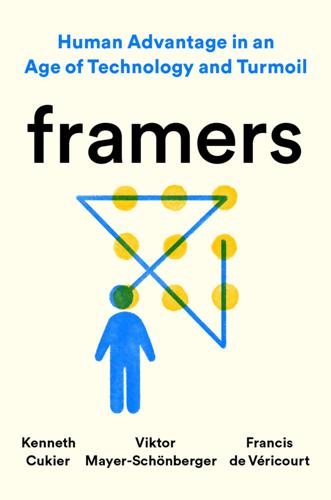
Framers: Human Advantage in an Age of Technology and Turmoil
by
Kenneth Cukier
,
Viktor Mayer-Schönberger
and
Francis de Véricourt
Published 10 May 2021
In 1846 scholars predicted the existence of an eighth planet, Neptune, based on their model of planetary motion and data gathered from observing Uranus, its planetary neighbor. When astronomers pointed their telescopes to Neptune’s presumed position, they found it—exactly as predicted by the mental model. Or take the Higgs boson, a tiny elementary particle. In the 1960s physicists using the frames of quantum and particle physics predicted its existence. But it took fifty years and the Large Hadron Collider, which cost $10 billion to build, to gather sufficient data and prove them right. Thanks to their frame, they foresaw what they would discover.
…
On the New York Times’s retraction of its 1920 article: Bjorn Carey, “New York Times to NASA: You’re Right, Rockets DO Work in Space,” Popular Science, July 20, 2009, https://www.popsci.com/military-aviation-amp-space/article/2009-07/new-york-times-nasa-youre-right-rockets-do-work-space/. On the Higgs boson: Sabine Hossenfelder, “The Uncertain Future of Particle Physics,” New York Times, January 23, 2019, https://www.nytimes.com/2019/01/23/opinion/particle-physics-large-hadron-collider.html. On black holes, see: Jonathan Amos, “Dancing Gargantuan Black Holes Perform on Cue,” BBC News, April 29, 2020, https://www.bbc.com/news/science-environment-52464250.
…
See abstraction and generalization “global optimum,” 166–167, 243 Google, 194 Google DeepMind, 17–18 Gopnik, Alison, 80–82 Graham, Martha, 102, 103 Great Depression, 50 Green Eggs and Ham (Seuss), 101–102 Griezmann, Antoine, 77–78 groupthink, 89, 162, 234 Grove, Andy, 167, 194 Habeler, Peter, 123–126, 127 Habermas, Jürgen, 195–196 Hahn, Otto, 132–133 halicin, process of finding, 2–3 Hansen, James, 75 Harari, Yuval Noah, 20, 79, 205 Harvard Business Review, 156, 240 Hedges, Chris, 135 Henry, Joseph, 73 Heytea shops, 202–203 Higgs boson, 35 Hillary, Sir Edmund, 123 Hofstadter, Douglas, 230 Homo Deus (Harari), 20 homophily, framing and tendency toward, 89, 162, 234 Huang, Cheng-Zhi Anna, 118–119 Huang, Jen-Hsun, 194 human cognition. See also entries beginning with cognitive adhering to well-honed mental models as default of, 127, 179, 207 agility of mind, 215–218 causality as foundation of, 12 of children, 80–82 counterfactuals as form of evolution of, 93–94 counterfactuals as natural to, 77 creating model of world as main purpose of, 226 defining characteristics of, 211 dimensions of, 13 dissonance of reframing, 140 as essence of humanness, 180 fundamental nature of framing to, 5 homogeneity of, as death of counterfactuals, 207 hyper-rationalists and ultra-emotionalists and uniqueness of, 18 importance of pluralism to, 181 mental models as fundamental to, 5, 11, 25, 26, 208 mental models reduce load on, by focusing, 11–12 mutability and, 106–107 preference for processing efficiently, 110 restrictions on, 175–176 science and understanding, 206 as simulation of reality, 26 social structure’s belief in validity of dominant mental model and, 179 terrrorists’ consistency, 213 human progress, 19–21 Hume, David, 68 hyper-rationalists scientific management theory, 17 technology as answer to problems, 15–16, 69, 210–211 IBM, 182 IKEA, 129–130 imagination advantages and disadvantages of lively, 38 agility of mind and, 218 AI lacks, 119 constraints and, 47, 220 counterfactuals and, 76, 79, 90 enabled by frames, 26, 33 literature and, 82–85 tolerance and, 192–193 values and, 39 immigration, 191–194 implicit knowledge and counterfactuals, 90–91 information, free flow of, 215 “insight problems,” 152 instinct, 16–17, 69 Internet Protocol, 132 inventions, changing frames for, 10 irrationality and humanness, 16 Israel, 97–100, 101, 107, 115 Jobs, Steve, 149, 150–151, 159, 194 Johnson-Laird, Philip, 226 Joy, Bill, 165 Kaepernick, Colin, 6 Kahneman, Daniel, 10, 90 Kamprad, Ingvar, 129 Kaplan, Craig, 152 Kay, Alan, 158–159, 241 Kennedy, John F., 89–90, 234 Kim, W.

On the Future: Prospects for Humanity
by
Martin J. Rees
Published 14 Oct 2018
(In one survey, only a third of Americans could find Britain!) This is an indictment of our education system and culture in general—I don’t think scientists have a special reason to moan. Indeed, I’m gratified and surprised that so many people are interested in dinosaurs, Saturn’s moons, and the Higgs boson—all blazingly irrelevant to our day-to-day lives—and that these topics feature so frequently in the popular media. Moreover, quite apart from their practical use, these ideas should be part of our common culture. More than that, science is the one culture that’s truly global: protons, proteins, and Pythagoras are the same from China to Peru.
…
See also global warming Greenland’s ice cap, 42 Greenpeace, 24 hacking: of automobile systems, 94–95; burgeoning security measures and, 219; of financial institutions, 20 Hadfield, Chris, 140 Handel (robot), 88 Hassabis, Demis, 86, 106 Hawking, Stephen, 150 health: now improved for most people, 6; technological optimism about, 26 health care: global inequality and, 220; internet and, 84, 220 hedge funds, automated data analysis for, 102 Higgs boson, 214 high-temperature superconductivity, 191 high-voltage direct current (HVDC) grids, 50 Hinton, Geoff, 85 horsepox virus, synthesis of, 73 Hoyle, Fred, 185 Human Longevity (start-up company), 80 human research subjects, 221 hydrogen storage, 49, 51 hypercomputers, of a posthuman intelligence, 169–70 Ibrahim, Mo, 28–29 immigration.
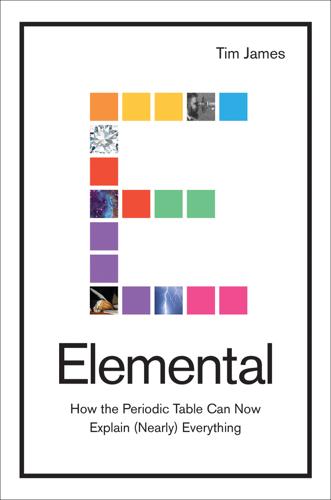
Elemental: How the Periodic Table Can Now Explain Everything
by
Tim James
Published 26 Mar 2019
The resulting framework, called quantum field theory, predicts a buffet of particles, all of which have been found, so the approach is definitely along the right track. Electrons turn out to be fundamental, as do photons, the particles that make up light. There are lots of others with names like neutrinos, gluons, and Higgs bosons, but protons and neutrons are not on the list. It turns out that protons and neutrons themselves are not fundamental but can be thought of as three particles that are. A proton can’t be split in half but it can be described as being made up of thirds. Murray Gell-Mann named these particles quarks (pronounced “kworks” not “kwarks”).
…
Index 3M ability absolute zero acids actinium adenosine triphosphate (ATP) age-related diseases air al-Sufi, Abd al-Rahman alchemy alkahest allotropes alloys alpha particles alpha decay aluminum aluminum oxide Amagat, Émile American Chemical Society americum ammonia amperes amygdalin ancient Egypt ancient Greece Andromeda constellation anti-bacterials anti-neutrinos antimony argon argyria Aristotle arsenic astatine astrochemistry atomic bonds Atomic Energy Authority atomic hypothesis atomic sponge atoms electrical and elemental differences instability interior large non-metals nucleus orbital arrangement origins and proton numbers and the Schrödinger wave equation splitting and star formation of unstable substances uranium ATP see adenosine triphosphate azidoazide azide Babbage’s difference engine Banana Equivalent Dose (BED) barium Becquerel, Henri bell metal berkelium beryllium beta radiation beta decay big bang biology bismuth black holes, super-massive bohrium bone Boomerang Nebula borax crystals boron bosons bottom-up approaches botulinum toxin Boyle, Robert brain Brandt, Hennig bridges bromine bronze Bronze Age Brownian motion Bunsen, Robert cadmium cesium caffeine calcium californium calxes cancer carbon conductivity and diamonds as fuel and graphite of human DNA and making elements and nitroglycerine and sugar carbon charcoal carbon dioxide (CO2) carbon monoxide catfish causation Cavendish, Henry Celsius scale centigrade cerium Chadwick, James chalk charcoal charge Charles’s law chemical bonds chemical reactions chemicals classification see also specific chemicals chemotherapy child mortality figures China chloride chlorination chlorine chlorine gas chlorine trifluoride (CIF3) cholera Chow Tai Fook Enterprises chromic acid chromium climate change, human-made Clostridium botulinum coal cobalt Cold Atom Laboratory Cold War compounds conductors copernicium copper corrosive resistance corundum cosmic rays crematoria critical mass crust crystals see also specific crystals Curie, Marie and Pierre curium current cyanide cytochrome c oxidase Dalton, John darmstadtium Davy, Humphry de Haan, John Democritus density deoxy ribonucleic acid (DNA) “dephlogisticated air” diamond dimethyl cadmium diphosphane (P2H4) Döbereiner, Johann Donkin, Bryan dubnium dynamite dysprosium E = mc2 Earth earths Edison, Thomas Einstein, Albert einsteinium electric chair electric current electric shocks electrical atoms electrical conductivity electrical fields electrical resistance electricity electron orbitals (electron clouds) and chemical reactions effect of increasing numbers of protons on and electricity large and mercury and metals predicting the position of electron sea electrons and acids and carbon charge and chemical reactions and electricity and fluorine and molecular orbitals movement and new element formation of non-metals and the periodic table predicting the position of and the Schrödinger wave equation and static electricity substructure and turning neutrons into protons and W- bosons wavy movement elements abundant and atoms changing one into another classification construction of artificial new cyclical pattern discovery Empedocles on formation in stars hidden most crucial to human development most expensive naming poisonous and the Schrödinger wave equation and the shape of the periodic table see also specific elements elixir of life Empedocles energy erbium essences ether europium execution explosives Fahrenheit scale fat, body fermium Feshbach resonance fire fireworks fission “flammable air” flammable substances Flamsteed, John flavor flerovium fluidity fluoride fluorine fluoroantimonic acid food force fields fossil fuels francium Fraunhofer, Joseph von fructose fundamental particles fusion gadolinium galaxies galinstan gallium gamma rays gases compression inert noble Geiger, Hans Geiger counter Geim, Andre germanium glass global warming glucose glucuronic acid gluons God gods Godzilla gold gold-foil experiments graphene graphite gravity Gray, Stephen Group 17/Group 18 gunmetal gunpowder Gutenberg, Johannes H (Hamiltonian) Haber, Fritz hafnium Haigh, John George hardness hassium hat industry heart heat see also fire heat sensors helium and lasers liquid non-reactivity and the periodic table helium hydride Heraclitus Hertz, Heinrich Higgs bosons holmium Hubble telescope human body chemical formula electrical conductivity Hurricane, Omar hydrochloric acid hydrogen and acid of human DNA and nitroglycerine and the periodic table and plastic and sugar and water hydrogen bomb hydrogen chloride (HCl) hyperdiamond hypochlorous acid (HOCL) i numbers IBM indium infectious diseases insulators International Space Station (ISS) International Union of Pure and Applied Chemistry (IUPAC) iodine ions iridium Irifune, Tetsuo iron Iron Age Ka ket vector (|>) Klapötke, Thomas Krebs, Hans krypton lanthanum lattices Lavoisier, Antoine lawrencium lead Lecoq, Paul-Émile lethal dose (LD50) life expectancy LifeGem light blue and electrons infrared red splitting lightbulbs lightning liquids lithium Litvinenko, Alexander livermorium living things logarithms, laws of lugduname lutetium McMillan, Edwin magic acid “magic numbers” magnesium magnetic fields magnetism malleability mammograms manganese Manhattan Project mantle Marsden, Ernest medicine Meitner, Lise meitnerium Mendeleev, Dmitri mendelevium Menghini, Vincenzo mercury metal chemistry metal oxides metallurgy metals and calxes conductivity definition heavy Lavoisier on opacity reactivity meteorites methane (CH4) microwaves Milky Way Mohs value molecular orbitals molecules molybdenum money mortality rates moscovium musical theory, Western National Helium Reserve National Ignition Facility Nazis neodymium neon neptunium neutrinos neutrons and forging new elements and nuclear decay and nuclear stability and quarks substructure turning into protons uranium Newlands, John Newton, Sir Isaac nickel Niépce, Joseph “Nicéphore” nihonium niobium nitrogen nitroglycerine Nobel, Alfred Nobel Prizes nobelium non-metals non-reactivity Novoselov, Kostya nuclear explosions, of stars nuclear reactors nuclear weapons nuclear-plants, fusion-based nucleus (atomic) and chemical reactions decay and electricity and electron orbitals and forging new elements fusing and the Schrödinger wave equation stability substructure unstable nature uranium octaves oganesson ohms Oppenheimer, Robert osmium oxalic acid oxides oxygen and carbon and crystals discovery and element generation and fluorine of human DNA and metals and nitroglycerine and respiration and sugar and water ozone palladium panacea Paracelcus principle partial differential (∂) particle theory particles, speed pathogens Pauling, Linus Payne-Gaposchkin, Cecilia perchloric acid periodic table architectural simplicity and carbon completion and Empedocles groups and Lavoisier and Mendeleev and Newlands and quantum mechanics and Risenfeld and Seaborg shape and silicon and White periods perpetual motion machines pH scale philosopher’s stone phlogiston phosphane (PH3) phosphorus photography photons pitch (asphalt) pKalow scale Planck’s constant (ħ) planetary formation plant life plastic platinum Plum-Pudding Hypothesis, The plumbing plutonium poison polonium polymer chemistry potassium potassium uranyl sulfate potassium-40 potenz power stations praseodynium Priestly, John printing press prisms promethium protactinium protons and acids charge and making new elements and nuclear decay and nuclear stability and quarks repulsion rogue and the Schrödinger wave equation substructure uranium psi (Ψ) pyrolusite Pythagorean order quantum field theory quantum leaps quantum theory quarks radiation exposure measurement poisoning sickness radiograms radium radon rainbows rat studies reactivity relativy theory, special resiniferatoxin resistance respiration rhenium rhodium Richter scale roentgenium Romans Royal Navy Royal Society rubber rubidium Russia rust ruthenium Rutherford, Ernest rutherfordium salt (sodium chloride) Salvarsan samarium sapphire scandium scanning tunneling microscope Scheele, Carl Scheelite (calcium tungstate) Schrödinger, Erwin Schrödinger wave equation generalized time-dependent version Schulze, Johann science Scoville Heat Units (SHUs) Seaborg, Glenn seaborgium Second World War selenium semi-conductors senses shells Shockley, William siemens per meter sieverts silicon silver silver fulminate silver nitrate silver screen smelting Smith, Mike smoke-detectors smoking Sörensen, Sören sodium sodium chloride sodium-potassium solar systems solder solids space spectroscopy spiciness spontaneous human combustion stability Stahl, Georg stardust stars death formation super-giant static electricity steel Stone Age stop-motion films strontium sucrose sugar sulfate sulfur sulfuric acid Sun suns superacids supernovas sweet syphilis tantalum technetium teflon Telford’s suspension bridge tellurium tennessine terbium terne tetrahedral arrays Thales thallium theobromine thermometers Thomson, Joseph John “J.

The Knowledge Machine: How Irrationality Created Modern Science
by
Michael Strevens
Published 12 Oct 2020
In some cases, scientists who may have quite opposing theoretical perspectives and ambitions come together to form a temporary community sharing an experimental purpose and capable, because of its size and unity, of doing things beyond the means of a single research group. Of the scientists who searched for the top quark at Fermilab near Chicago in the 1990s or the Higgs boson at the Large Hadron Collider near Geneva in the 2010s, some were hoping to confirm the predictions of physics’ Standard Model—which implies that these particles exist—while others were hoping to overturn the Standard Model (“I hate the Standard Model,” said one to me), and others still were agnostic.
…
A simple mathematical formula would take the raw data as input and supply as output, without any human interference or evaluation, a judgment as to whether or not a scientific claim was credible enough to be published—whether it would be acceptable to assert in scientific print that smoking causes cancer, that the Higgs boson exists, that human activity is causing global warming. Neither of these promises has been entirely fulfilled. Even the most objective statistical techniques leave some choices up to the scientist, and these choices, it has become increasingly clear, can be gamed to illuminate the data from the most favorable (or publishable) angle.
…
D., 76 fossil record, 175–77 four innovations that made modern science, 119 fractals, 210, 216–17, 217, 236 frame-dragging effect, 34, 36 fraud in science, 47–48, 59 Fürbringer, Max, 220 Galápagos Islands, 35 Galilei, Galileo and beauty, 227 and empirical inquiry, 243, 244 heresy conviction, 316n and mathematical foundation of physics, 194 and nature of light, 290 and planetary motion, 106 Galison, Peter, 154 gases, 143 Gawande, Atul, 59, 61–62 Gell-Mann, Murray, 146, 229–36, 265, 273 generalization, See inductive reasoning general theory of relativity, 34–35, 41–42, 49, 111–12, 155–61 See also eclipse expedition (Eddington) Genesis (biblical book), 276 “Genetic Studies of Genius,” 36 genius, IQ and, 36, 297n “Geological Age of Reptiles, The” (Mantell), 175 geology, 74–81, 175–83 geometrical transformations, 221–27, 223 “germs,” spontaneous generation and, 51, 82 Giere, Ronald, 296n Gilbert, Elizabeth, 66–67 Glaisher, James, 169–70 Glaser, Donald, 228 glass pane experiment, 94–95 God; See also religion account of creation of humanity in Genesis, 276 in Cartesian natural philosophy, 205–6 and Cartesian philosophy of knowledge, 270–71 in Cartesian physics, 133 Newton and, 187, 188 Newton’s Anglican ordination crisis, 250–52 and Oration on the Dignity of Man, 269–70 and Scoresby’s snowflake images, 169 and theory of special creation, 28 and Whewell’s History of the Inductive Sciences, 178–82 in Whewell’s theories, 176–78 gold, 185 golem, science as, 285–88 Golgi, Camillo, 153–55, 161–62 Gopnik, Alison, 265 Gould, Stephen Jay on diversion of science and humanities, 274–75 extrascientific interests, 265 on science and religion as nonoverlapping areas of inquiry, 207 on “science wars,” 263 Grand Design, The (Hawking and Mlodinow), 260 Grant, Peter and Rosemary, 35, 36 gravitational bending angle, 112 gravity Aristotelian physics, 27–28, 133–34 Cartesian physics, 131–33 development of theories of, 27–28, 136–7 Einsteinian physics, See general theory of relativity Newtonian physics, 27–28, 40, 68, 111, 136–40, 188, 195 Gravity Probe B experiment, 34, 34–36, 114 Great Method Debate, 6, 13–86; See also methodism/methodists; subjectivity and Baconian convergence, 112 iron rule and, 8 Thomas Kuhn and, 22–33, 31, 36, 38–40, 46–47, 57, 85–86 lack of consensus about nature of, 5 Karl Popper and, 13–22, 38–40 and radical subjectivism, 63 and single-minded focus on data collection, 33–37 The Structure of Scientific Revolutions and, 23–24 subjectivity and, 85 Great War (World War I), 14 Greece, ancient, 1, 2, 142–43, 242 Greek astronomical system, 26–27 Greek natural philosophers, 5 Greek philosophy, 117 Greene, Brian, 235 Greenwich Observatory (England), 69, 69 Grosseteste, Robert, 117 growth, laws of, 225–26 Guillemin, Roger, 33–34, 60–63, 61, 99 gyroscopes, 34, 36 hackberry trees, 37 hadrons, 230 Haeckel, Ernst, 47–48 Halley, Edmond, 141 Hanging, The (Callot), 247 harmony, 209; See also beauty Harris, Geoffrey, 21 Harvey, William, 312n Hawking, Stephen, 173, 260 heat, physics of Bacon and, 107–8 and Kelvin’s estimate of earth’s age, 76–77 kinetic vs. caloric theory, 90–94 “heat rays,” 92, 94, 95 Hedgehog, the Fox, and the Magister’s Pox, The (Gould), 275 Heilbron, John, 151 Hellmann, Gustav, 170–71 Helmholtz, Hermann von, 301n Heraclitus, 2, 117 heresy, 250, 316n Herschel, John, 173, 174, 219, 236 Higgs boson, 101 historical question about science, the, See science, late arrival of History of the Inductive Sciences (Whewell), 178–82 Hitler, Adolf, 13 Hobbes, Thomas, 243, 316n Holy Roman Empire, 129 Holy Trinity, 250–52, 316n Homage to Newton (Pittoni painting), 141, 142 Homo erectus, 223, 240 Homo neanderthalensis, 240 Hooke, Robert, 168–69, 169 Hradčany Castle (Prague), 245 Human Genome Project, 181 humanism, 269–77 human nature, suppression in scientific method, 8–9 Hume, David, 16–18, 21, 140 Hurricane Sandy, 278–79, 289 Huxley, Thomas, 76–78 Huygens, Christiaan, 194 Hydrozoa, 221 hypothalamus, 33, 99, 296n, 304n hypotheses (generally) Bacon and, 109–10 in IPCC reports, 288 Newton and, 137, 191, 311n–312n Ibn Sīnā, 117 idols (Baconian concept), 107, 109, 187, 192 inductive reasoning (induction), 15–18, 21–22 industry-sponsored research, 52–53, 84 infrared radiation, 92 innovations that made modern science, 119 Inquisition, 316n Institute for Theoretical Physics (Copenhagen), 145 Intergovernmental Panel on Climate Change (IPCC), 288–89 interpretation of evidence logical impossibility of finding objective rule for, 79–82 subjectivity of, 57–58, 62–65, 79–82, 92–93, 288–89 IQ tests, 36, 297n iron rule of explanation, 8, 93–104 aesthetics and, 208–38, 237 and Aristotle’s approach to inquiry, 203–4 and Baconian convergence, 112–14, 116–17 “Capulet” and “Montague” (hypothetical matchup of two scientists), 89–96, 103 and critical spirits, 281–82 defined, 293 difficulty of teaching, 258–59 dissemination of, 257–60 Eddington and, 160 elements of, 96–97, 103 as essential ingredient for thriving science, 283 establishment of rules, 100–101 exclusion of nonempirical considerations from, 180–82 exclusion of philosophy from, 118, 207–8 exclusion of religion from, 204–7 explanatory relativism and, 128–29 first modern scientists’ relationship to, 265–67 as game, 100–102, 128–29, 164–65, 181–82, 203 indifference to metaphysics of causal principles, 147 Kuhn’s rules of science vs., 304n methodological innovations encompassed by, 117–19 and methods outlined in Principia, 137, 191, 248–49 moral strategy for teaching, 258–59 negative clause, 118–19, 195 Newton and, 142, 191–92, 245, 273 Newton’s law of universal gravitation and, 188 Newton’s outlining of essential aspects, 137–38 objectivity and, 118, 162 principle of total evidence and, 315n procedural consensus and, 117–18 quantum mechanics and, 147, 150, 151 rigid specifications for public announcements, 118 scientific argument vs. private reasoning in, 163–64, 181, 235, 238, 249–51, 264–66, 273 and Scientific Revolution, 243 scientific vs. unscientific reasons, 181 and seventeenth century natural philosophy, 192–94 and shallow conception of explanation, 142, 195 simplemindedness and, 259–60 as sine qua non of modern science, 202 sterilization and, See “sterilization” of scientific argument string theory and, 284–85 supremacy of observation in, 173–97 and tedium of empirical work, 256 and theoretical cohorts, 139–40 and Tychonic principle, 116 Whewell and, 180, 191, 205 irrationality and “golem” model of science, 287 of iron rule, 9, 201–8, 237–38 and science education, 256–57 and Scientific Revolution, 242 and teaching of iron rule to Atlanteans, 258 Jahren, Hope, 37, 255 James I (king of England), 105 Jesus Christ, 187, 250–52 Jupiter (planet), 106 Kamlah, Andreas, 296n Kant, Immanuel, 136 Keller, Alexander, 300n Kelvin, Lord (William Thomson), 74–79, 81–85, 181 Kennefick, Daniel, 298n Kepler, Johannes, 27, 106, 193 Keynes, John Maynard, 188, 212, 214 kinetic theory of heat, 90–92, 94, 108, 109 Krauss, Lawrence, 261 Kuhn, Thomas, 6, 31 and Aristotle’s physics, 123–24 belief in science’s power to create new knowledge, 32–33 birth and early years, 22–23 commonalities with Popper, 38–40 on Copernicanism, 27 and Copernican revolution, 26–27 and crisis, 28 and dogmatism, 258 and Eddington’s eclipse expedition, 46–47 errors in paradigm concept, 46–47, 238, 298n extraphilosophical claims, 40 and history of gravity, 137 and iron rule of explanation, 102, 103 on motivation, 38, 116, 203, 282 and objectivity, 85–86 and partisans, 57 on prevailing paradigm as sole worldview of science, 289 recommendations for healthy science, 282–83 on relation of experimental inquiry to paradigm, 36 on rules of science, 304n Lab Girl (Jahren), 255 Laboratory Life (Latour and Woolgar), 61 Lakatos, Imre, 30 lambda (subatomic particle), 228, 230 Language of God, The (Collins), 181 Large Hadron Collider, 81 latitudinarianism, 75 Latour, Bruno, 60–63, 68 “law of higgledy-piggledy,” 219, 236 Lawrence, D.
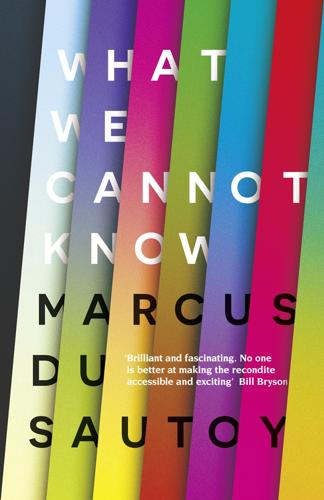
What We Cannot Know: Explorations at the Edge of Knowledge
by
Marcus Du Sautoy
Published 18 May 2016
I remember reading as a kid that we were in for a big crunch, but now it seems that we have a completely different future waiting for us. The particle colliders like the Large Hadron Collider at CERN (the European Organization for Nuclear Research in Switzerland) have allowed us to penetrate the inner workings of matter itself, revealing new particles – like the top quark discovered in 1994 and the Higgs boson discovered in 2012 – that were bits of speculative mathematics when I was reading my New Scientist at school. And since the early Nineties the fMRI scanner has allowed us to look inside the brain and discover things that in the Seventies were frankly not even considered part of the remit of scientists.
…
Eddington announced his experimental evidence confirming Einstein’s ideas on 6 November 1919. Within days, newspaper headlines across the world trumpeted the great achievement: ‘EINSTEIN THEORY TRIUMPHS: Stars Not Where They Seemed To Be, but Nobody Need Worry’ announced the New York Times; ‘Revolution in Science’ declared the London Times. Although we’re quite used to Higgs bosons or gravitational waves hitting the headlines, this was probably the first time in history that a scientific achievement was given such public exposure. Heralded by journalists as the new Newton, the obscure 40-year-old Einstein shot to international fame. If you are finding all this warping of space and time bending your brain, don’t despair.
…
There are some amazingly ambitious projects afoot which aim to produce an analysis of the wiring of a human brain such that it can be simulated on a computer. The Human Brain Project, the brainchild of Henry Markram, aims within ten years to produce a working model of the human brain that can be uploaded onto a supercomputer. ‘It’s going to be the Higgs boson of the brain, a Noah’s archive of the mind,’ declared Markram. He was rewarded with a billion-euro grant from the European Commission to realize his vision. But when this is done, would these simulations be conscious? To my surprise, Koch didn’t think so. ‘Let’s suppose that Henry Markram’s brain project pans out and we have this perfect digital simulation of the human brain.
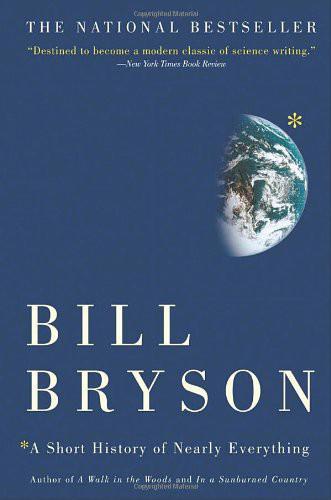
A Short History of Nearly Everything
by
Bill Bryson
Published 5 May 2003
That's why they were called atom smashers. It wasn't science at its subtlest, but it was generally effective. As physicists built bigger and more ambitious machines, they began to find or postulate particles or particle families seemingly without number: muons, pions, hyperons, mesons, K-mesons, Higgs bosons, intermediate vector bosons, baryons, tachyons. Even physicists began to grow a little uncomfortable. “Young man,” Enrico Fermi replied when a student asked him the name of a particular particle, “if I could remember the names of these particles, I would have been a botanist.” Today accelerators have names that sound like something Flash Gordon would use in battle: the Super Proton Synchrotron, the Large Electron-Positron Collider, the Large Hadron Collider, the Relativistic Heavy Ion Collider.
…
(One suspects that it was not altogether coincidental that these terms were first applied in California during the age of psychedelia.) Eventually out of all this emerged what is called the Standard Model, which is essentially a sort of parts kit for the subatomic world. The Standard Model consists of six quarks, six leptons, five known bosons and a postulated sixth, the Higgs boson (named for a Scottish scientist, Peter Higgs), plus three of the four physical forces: the strong and weak nuclear forces and electromagnetism. The arrangement essentially is that among the basic building blocks of matter are quarks; these are held together by particles called gluons; and together quarks and gluons form protons and neutrons, the stuff of the atom's nucleus.
…
The arrangement essentially is that among the basic building blocks of matter are quarks; these are held together by particles called gluons; and together quarks and gluons form protons and neutrons, the stuff of the atom's nucleus. Leptons are the source of electrons and neutrinos. Quarks and leptons together are called fermions. Bosons (named for the Indian physicist S. N. Bose) are particles that produce and carry forces, and include photons and gluons. The Higgs boson may or may not actually exist; it was invented simply as a way of endowing particles with mass. It is all, as you can see, just a little unwieldy, but it is the simplest model that can explain all that happens in the world of particles. Most particle physicists feel, as Leon Lederman remarked in a 1985 PBS documentary, that the Standard Model lacks elegance and simplicity.
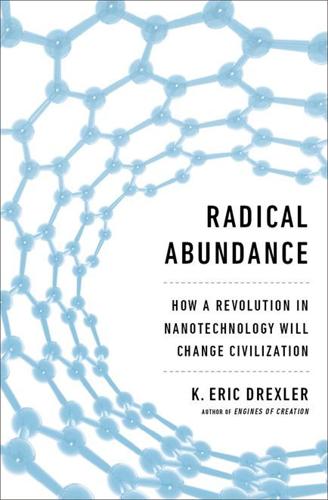
Radical Abundance: How a Revolution in Nanotechnology Will Change Civilization
by
K. Eric Drexler
Published 6 May 2013
These equations have been tested to the utmost limits of human ingenuity and budgets, to the extremes of experimental conditions and measurement accuracy.* In 2012, physicists at CERN reported the discovery of the expected Standard Model Higgs boson (or a particle as yet indistinguishable from it), an achievement that required billions of dollars of equipment and enough power to light a small city. With the Higgs boson, physicists observed the final particle predicted by the Standard Model, a crowning yet frustrating achievement. Physicists had hoped that they would find something else, a terrestrial clue to physics beyond the Standard Model.
…
See also Superlubricity Fuel cells, 165 Gasoline engine, nanoscale structure of, 62–63 General Electric, 46 Genetic engineering, 25–26, 182 Genome research, 112–113, 237 Gift economy, 256–257 Goddard, Robert, 135 Gore, Al, 31 Government funding of nanotechnology research, 32, 194–195, 198–199, 243 National Nanotechnology Initiative, 204–207, 208 Government support for industrial research and development, 46 Greenhouse gases, 171, 246, 250. See also Carbon dioxide Graphene nanostructures, 305 Gray goo, 201n, 207 Haber, Fritz, 44 Hapgood, Fred, 27 Heisenberg, Werner, 98 Higgs boson, 95 History of atomically precise fabrication, 22–25, 46, 178 of idea of atomically precise manufacturing, 24–25, 27–32, 194–211 of nanotechnology research programs, 204–210 Hoffmann, Roald, 179 Human development, atomically precise manufacturing and, 246–248 Human Genome Project, 112–113 Hunter-gatherers, agriculturalists vs., 41–42 India economic rise of, 246 nanotechnology research in, 243 Industrial civilization, crisis confronting, 245–246 Industrial equipment, APM-based production and, 228 Industrial production atomically precise manufacturing and, ix–x, xii experimental devices vs., 161 Information Revolution and, 48–49 Industrial civilization, crisis of limits, 245–246 Industrial Revolution, 39, 40, 42–47, 54 APM Revolution and, 50–51, 53, 54 metrics for progress during, 295 Infection, atomically precise manufacturing and attack on, 237–238 Information Revolution, 6–7, 39, 40, 47–49 APM Revolution and, 50–51, 53 Information technologies, atomically precise manufacturing and, 226–227 Insulating materials, thermal 228 Intel, 48 Interagency Working Group on Nanoscience, Engineering and Technology, 204 International Technology Roadmap for Semiconductors (ITRS), 215 Internet, 47, 49, 53, 224, 245 Joy, Bill, 207, 208 Kalam, Abdul, 194 Kantrowitz, Adrian, 18 Kantrowitz, Arthur, 17–19 Kawczak, Alex, 211 Kendrew, John, 24 Kennedy, John F., 20 Knowledge exploratory engineering and, 134, 137–143 scientific, 92–94 seeking vs. applying, 121–123 specialization of, 45–46 Korolev, Sergei, P., 12 Krupp, Alfred, 46 Labor, 51, 168, 170 agricultural, 41–42 atomically precise manufacturing and, 51, 170, 241, 245, 256, 282 division of, 46 industrial, 44, 51–52 information and, 51 skills, 4 Land, atomically precise manufacturing and cost of, 170 Landscape of technological potential, 89–92, 94–95, 284–285 atomically precise manufacturing and, 91, 95, 105–106, 143–144 exploratory engineering and, 131, 132, 137 limits of, 91–92 partially visible, 92, 94, 97, 101, 131 technology development and, 92, 143–144, 279 timeless, 91–92, 94, 174, 240, 284–285 Lane, Neal, 206 Lightsails, 17, 20 Limits to Growth (Meadows), 13, 246 Limits to growth, 10–11, 15–17, 41, 53, 245–246 The Logic of Scientific Discovery (Popper), 126 Lucretius, 23 Macromolecular structures, 218 systems engineering and, 187–188, 243 foldamers, 181, 183–184, 188, 296, 302 See also Protein molecules, DNA Macromolecules, folded, 296 Marconi, Guglielmo, 134 Markets, reducing competition for access to, 266–267 The Mars Project (Das Marsprojekt) (von Braun), 135 Material economic development, atomically precise manufacturing and, 246–248 Materials for atomically precise manufacturing, 144, 160–161 atomically precise manufacturing and demand for raw, 230–231 gradient of quality for, 296–298 improvement in performance of, 162–166, 228 interaction in nanoscale world, 64–65 processing, 184–185 synthesized by atomically precise manufacturing, 163–164 Medical applications, of atomically precise manufacturing, 167, 236–238, 256 diagnosis and, 237 Medvedev, Dmitry, 194 Metallic bonding, 62 Metallurgy, 45–46 Metal-organic frameworks, 298 Metals, atomically precise manufacturing and, 169 Metrics, for progress, 294–295 Microblocks, 151–152, 302–303 construction of, 152–155 Military applications of atomically precise manufacturing, 35, 236, 259–263, 284 Mining atomically precise manufacturing and, 34, 231 environmental restoration and, 233 of space resources, 15n, 16 MIT Space Habitat Study Group, 17 Molecular biology, 61–62.
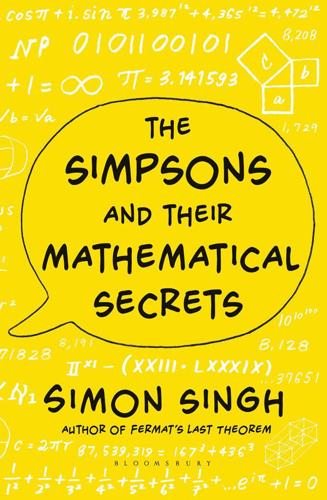
The Simpsons and Their Mathematical Secrets
by
Simon Singh
Published 29 Oct 2013
The first equation on the board is largely Schiminovich’s work, and it predicts the mass of the Higgs boson, M(H0), an elementary particle that that was first proposed in 1964. The equation is a playful combination of various fundamental parameters, namely the Planck constant, the gravitational constant, and the speed of light. If you look up these numbers and plug them into the equation,4 it predicts a mass of 775 giga-electron-volts (GeV), which is substantially higher than the 125 GeV estimate that emerged when the Higgs boson was discovered in 2012. Nevertheless, 775 GeV was not a bad guess, particularly bearing in mind that Homer is an amateur inventor and he performed this calculation fourteen years before the physicists at CERN, the European Organization for Nuclear Research, tracked down the elusive particle.

The Milky Way: An Autobiography of Our Galaxy
by
Moiya McTier
Published 14 Aug 2022
It’s so exhausting to keep up sometimes. Your physicists think, with a healthy amount of uncertainty, that most of the universe’s quantum fields are safely in their zero-energy state. All of them but—and now we’re finally back to where I wanted to start this story—the Higgs field. The Higgs field is associated with the Higgs boson, which some of your scientists call—either reverently or cheekily—the “God particle.” The Higgs field is especially interesting (to both me and your scientists) because its interactions with other fields is essentially what determines their particles’ masses. Protons, which are made of quarks, are heavier than electrons because the quark field interacts more strongly with the Higgs than the electron field does.
…
Your scientists have even attempted to make their own WIMPs in that big Swiss ring they call the Large Hadron Collider. It’s been forty years—a long time for you humans!—and your scientists still haven’t given up hope of finding the WIMPs. But their lack of success has urged them to consider other possible explanations for dark matter. Most of the particles I’ve mentioned thus far—photons, Higgs boson, quarks, but not the hypothetical WIMP—are part of your scientists’ standard model of particle physics. This model explains almost everything humans have ever observed about our universe, but there’s always been a problem with how it describes neutrinos—a strong charge-parity (CP) problem, to be exact.
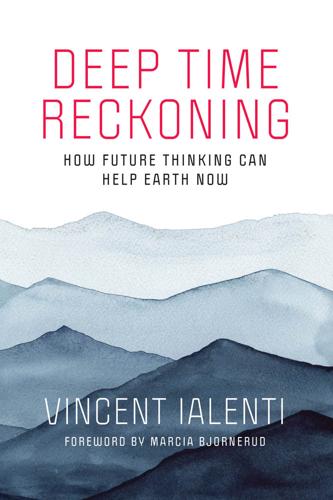
Deep Time Reckoning: How Future Thinking Can Help Earth Now
by
Vincent Ialenti
Published 22 Sep 2020
. … There are no longer any gatekeepers: the journals and op-ed pages that were once strictly edited have been drowned under the weight of self-publishable blogs (like, say, this one).53 University experts faced their own crises across the West, too. Top scientists worried they “wouldn’t be productive enough for today’s academic system.” Physicist Peter Higgs wondered whether “work like Higgs boson identification” would even be “achievable now as academics are expected to keep churning out papers.”54 Computer scientist Cyril Labbé derided the accelerating publish-or-perish “spamming war” at the heart of science.55 Benjamin Ginsburg’s 2011 The Fall of the Faculty showed how non-academic administrators increasingly seized control from scholars with PhDs.
…
Tom Nichols, “The Death of Expertise,” Tomnichols.net (blog), December 11, 2013, https://thefederalist.com/2014/01/17/the-death-of-expertise/. 54. Decca Aitkenhead, “Peter Higgs: I Wouldn’t Be Productive enough for Today’s Academic System,” Guardian, June 12, 2013, https://www.theguardian.com/science/2013/dec/06/peter-higgs-boson-academic-system. 55. Richard van Noorden, “Publishers Withdraw More than 120 Gibberish Papers,” Nature, February 24, 2014, http://www.nature.com/news/publishers-withdraw-more-than-120-gibberish-papers-1.14763. 56. R. F. Harris, Rigor Mortis: How Sloppy Science Creates Worthless Cures, Crushes Hope, and Wastes Billions (New York: Basic Books, 2017). 57.
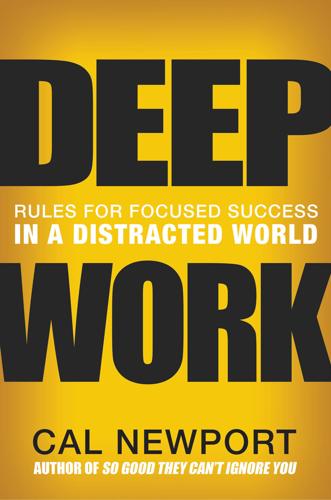
Deep Work: Rules for Focused Success in a Distracted World
by
Cal Newport
Published 5 Jan 2016
• Mark Twain information comes from: Mason Currey’s Daily Rituals. • Woody Allen information comes from Robert Weide’s 2011 documentary, Woody Allen: A Documentary. • Peter Higgs information comes from: Sample, Ian. “Peter Higgs Proves as Elusive as Higgs Boson after Nobel Success.” Guardian, October 9, 2013, http://www.theguardian.com/science/2013/oct/08/nobel-laureate-peter-higgs-boson-elusive. • J.K. Rowling information comes from: https://twitter.com/jk_rowling. • Bill Gates information comes from: Guth, Robert. “In Secret Hideaway, Bill Gates Ponders Microsoft’s Future.” Wall Street Journal, March 28, 2005, http://online.wsj.com/news/articles/SB111196625830690477

But What if We're Wrong? Thinking About the Present as if It Were the Past
by
Chuck Klosterman
Published 6 Jun 2016
Well, fine. I give up. Pour me a drink. Simulate me, don’t simulate me—it’s all equally hopeless. We’re just here, and there’s nowhere else to be. [8]Particle Fever is a 2013 documentary about the Large Hadron Collider in Switzerland. It depicts the final seven years of the five-decade search for the Higgs boson, the so-called God particle at the core of everything we believe about deep physics and the origin of existence. The film is elucidated through the words of many perceptibly brilliant people, a few of whom spend much of the movie expressing dark apprehension over what will happen if the massive $9 billion LHC does not locate the Higgs particle.
…
(film), 182 “Ethicist, The” (New York Times Magazine column), 255 Everest, Mount, 183 extraterrestrials, music for, 83–84 fact-checking, 154n false memories, 150–51 Fight Club (Palahniuk), 53 film industry, 28–30, 90, 227, 243–45 financial crisis of 2008, 41 First Amendment rights, 211–12 flawed assumptions, 93–94, 185–86 fleeting popularity, 23–24 Foer, Jonathan Safran, 47 Fomenko, Anatoly, 135 football college level, 191–93 comparative risks in other sports, 183 dangerous nature of, 179–80, 185 future of, 178–82 hypothetical scenario of its decline, 180 National Football League (NFL), 180–81, 182–83 safety modifications envisioned, 181 silo analogy, 184–85 forces fundamental vs. emergent, 4 gravity, 3–7 Fourteenth Amendment rights, 220 fox vs. hedgehog, 199–201 Franzen, Jonathan, 27, 36, 261 free speech, limitations to, 211–12 Freed, Alan, 59 freedom, 214 Freud, Sigmund, 138 Frost, Robert, 93 Fukuyama, Francis, 226–27 future, thinking about, 252–53 Galileo, 5, 100, 117–18 Gaussian curve, 22n Gazzaniga, Michael, 203n Gehry, Frank, 90 genius, recognizing, 23–24, 73 Gibbon, Edward, 207 Gillett, Charlie, 14 Gioia, Ted, 77–79 Gladwell, Malcolm, 177–79, 181 Glass, Stephen, 154n global politics, 15, 17 God and the simulation hypothesis, 124–27 Gone Girl (Flynn), 53 “good job” response to art, 188–89 Goodman, John, 174 Gore, Al, 197–98 gorillas, 255–56 GQ, 242–43 Grand Theft Auto (video game), 128 Grant, Ulysses S., 206 gravity Aristotle’s ideas about, 5, 101 author’s knowledge of, 3 evolution of ideas about, 3–7 temperature analogy, 4n greatness, 51n Greene, Brian, 3–4, 101–8, 112–14, 124–25 Gross, David, 104n Gumbel, Bryant, 185 Halley’s Comet, 136 Hannibal’s crossing of the Alps, 156–57 Harbaugh, Jim, 185 Hard Rain (album), 75 Hardcore History (podcast), 201–3 Harrison, George, 84n heliocentrism, 117 Hellman, Martin, 260 Hemingway, Ernest, 93 Hendrix, Jimi, 60 “Here Comes the Sun” (song), 84 Hero with a Thousand Faces, The (Campbell), 74n hero’s journey, 74 Hersh, Seymour, 151–53 Herzen, Alexander, 201 Hidden Reality, The (Greene), 103 Higgs boson (“God particle”), 130–31 historical figure game, 155–56 history confirming, 151, 153–57, 203–5 revisionist, 233–35 History: Fiction or Science? (Fomenko), 135n Hobson, John Allan, 138 Homer, 147–48 Horgan, John, 223–27 How Music Works (Byrne), 69 human brain, mapping, 228–29 Hunter, Tab, 79 “Hurricane” (song), 75 identity politics, 25–30 Illig, Heribert, 134 “I’m Eighteen” (song), 144 immortality, achieving, 228–29 Independence Day (film), 243 inequality of similar people, 212–14 Infinite Jest (Wallace), 48 infinity, 103–4 information collective server for brain’s contents, 228–29 decentralization, 40–41, 86 limited, 11–12 instability of the world, 10 intelligence cognitive, 256 emotional, 256–57 of octopuses, 253–54 international relations, 15, 17 Internet culture blogging, 231–32 conventional, 36, 86 Deep Web, 37–39 The Dress (viral phenomenon), 146–47 early adopters, 231 fluidity of history, 235–36 start of, 229 unlikely relationships, 236 “You’re doing it wrong” argument, 242 Jackson, Michael, 1, 67 James, Skip, 81 Jefferson, Thomas, 213, 214 Jenner, Caitlyn (formerly Bruce), 29 Jesus, 135 “Johnny B.

Reinventing Capitalism in the Age of Big Data
by
Viktor Mayer-Schönberger
and
Thomas Ramge
Published 27 Feb 2018
It also required more than 300,000 mathematicians, physicists, biologists, chemists, engineers, and mechanics spread across dozens of labs, each playing his or her own small part, from developing a menu of foods to sustain people in zero gravity to setting up a communications link between the lunar module, mission control, and the White House to crafting the parachute that safely brought the astronauts home to the blue marble of Earth. Similarly, the construction of the Large Hadron Collider, which in 2012 detected the Higgs boson and helped solidify the Standard Model of particle physics, involved more than 10,000 scientists from over one hundred countries. We do not unravel the mysteries of our universe and our existence through the work of a single lone genius but rather through collaboration among many other individuals.
…
See Great Recession/financial crisis financial intermediaries, 12, 146–156 choice expansion in, 215–216 payment solutions and, 146–147 regulations affecting, 139–140 traditional role of, 138–139 See also banks Finkel, Eli, 83, 84 Finland, 147, 191 fintechs, 11 banks investing in, 149–156 niche markets targeted by, 147, 152 worldwide investments in, 149 firms, 87–107, 109–131 Amazon as, 88–89, 106 automation in, 109, 111–112, 113–120, 128, 130–131 centralization in (see centralization) cognitive constraints and, 102–104 communicative coordination and, 26, 28–33, 90, 102 comparison of markets and, 28, 111 competition between markets and, 30, 107 decline in influence of, 12–13, 33 delegation in, 97–101, 106, 117 efficiency as focus of, 112–113 estimated number of, 28 human-centric, 214–215 internal talent management in, 126–129 intuition and heuristics in, 104–106 key difference between markets and, 32–33, 90 “noise” reduction strategies in, 100–101 organizational innovation in, 97, 110–111, 120–131 profits of, 195–197 reporting methods in, 90–97 rise in importance of, 33 shift to markets from, 10–11, 30–32, 125–126 structure of, 29–30 superstar, 195–197 tax credits for job creation proposed, 200–202 Flores, Fernando, 175–176 flying shuttle, 111 Forbes, 209 Ford, Henry, 29–30, 114 Ford Motor Company, 29–30, 31, 33, 98, 99–100 Fortune magazine, 208 Fox News, 178 Freightliner, 182 Friedman, Milton, 190 Fukoku Mutual Life Insurance, 109, 110–111, 113–114, 117, 120, 183, 188 fully automated luxury communism, 221 fundamental attribution error, 103 Funding Circle, 152, 163 Gates, Bill, 187 Gawande, Atul, 101 General Motors (GM), 98–99, 101 Germany, 134, 135, 136 gig economy, 186 Gigerenzer, Gerd, 105 Giza pyramids, 21 Glassdoor, 88 GoDaddy, 161 gold standard, 48 “Goobles,” 51 Google, 78, 110, 148, 151, 161, 196 antitrust case against, 165 feedback effects and, 30, 163, 169 prediction markets and, 50–51 Google Glass, 138 Google Shopping, 52 government, central planning for, 175–179 grain (as currency), 47 Great Depression, 51, 136 Great Famine (Soviet Union), 177 Great Recession/financial crisis, 134–135, 136, 215 See also subprime mortgage crisis Great Wall of China, 21, 24 Grünenthal, 42 Guardian, 221 Hagel, John, 31 Harvard Business Review, 99 Harvard Business School, 96 Harvard Medical School, 101 Harvard University, 45 Hayek, Friedrich August von, 39, 46–47 health care sector, 213–214 heuristics, 104–106 Higgs boson, 22 Hollerith, Herman, 96, 99 Holvi, 147 Honda, 30, 32 Huawei, 196 human choice. See choice Human Use of Human Beings, The (Wiener), 160 human-centric firms, 214–215 Hurricane Grace, 133–134 IBM, 96, 109, 127, 163, 183 India, 184 Industrial Revolution, 4, 111, 162, 188, 201 Infi (machine learning system), 79 information asymmetry, 40, 72–73 information flows centralized vs. decentralized (see centralization; decentralization) complexity of processing, 43–44 cost of, 39–40, 44, 45, 81 data-rich markets and, 63, 64, 70, 72–73, 81 dyadic, 72 firms and, 90–100, 102, 106 historical improvements in, 51–52 impact of bad information on, 39 information overload and, 40–41, 70 information sharing and, 41, 46 information shortage and, 40, 52–56 markets and, 38–57, 63, 90 obstacles to, 41–42 innovation, 166, 199, 200 Instagram, 163 intercontinental nuclear missiles, 159 interest rates, 134–135, 143, 150–151, 165, 194 internal talent management, 126–129 Internet network effects and, 163 projected growth rates in traffic, 7–8 See also specific sites investment banking, 150, 154–155 investors, 143–144 capital share of, 185, 186 opportunities in data-rich markets, 144–145 problems caused by data-rich markets, 143–144 returns for, 195 “invisible hand” (Adam Smith), 27 InvisibleHand (app), 52 iPad, 54–55 iPhone, 136, 164 Italy, 134, 136 iTunes, 121–122 Japan, 30–31, 32 Jensen, Robert, 36 JetBlue, 112 Jobs, Steve, 54–55 Kabbage, 150 Kahneman, Daniel, 102 Kant, Immanuel, 223 Kawasaki, 30 Kay, John, 111 Kayak, 3, 52 Kensho, 155 Kerala fishermen, 35–37, 39 Kickstarter, 152–153, 156 kidneys, donor, 73–74 Kleiner, Eugene, 216 labor augmenting technology, 194 labor market, 13, 181–206 algorithms used in, 75 automation in, 181–188, 200–202, 205 declining participation in, 183–184 distributive measures for, 186–187, 189, 190, 193, 197–200 money unbundled from, 203–206, 218 participatory measures for, 186, 188–189, 190, 193, 200–202 self-employment in, 185–186 universal basic income and, 189–193, 205–206 labor share, 184–186, 188, 193–195, 198 labor unions, 205 Lake, Katrina, 207–209 Large Hadron Collider, 22, 25 Le Pen, Marine, 186 Lehman Brothers, 155 lending by banks, 150–151 by fintechs, 152–153 Les, Jason, 59–60 liberals, 190 libertarians, 190–191 Libratus (machine learning system), 59–62, 78 Lindblom, Charles, 23, 26 LinkedIn, 202 Linnaeus, Carolus, 22, 23 Linux, 166 Lorentzon, Martin, 122 Lufax, 152 LVMH, 75 machine learning.
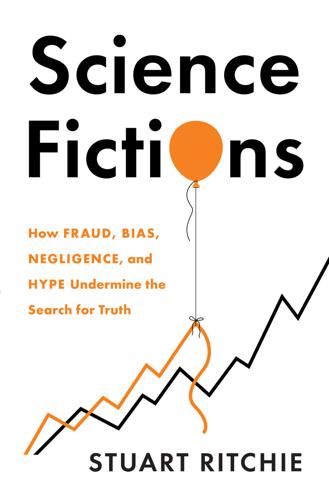
Science Fictions: How Fraud, Bias, Negligence, and Hype Undermine the Search for Truth
by
Stuart Ritchie
Published 20 Jul 2020
Along the same lines, Fisher later noted that some researchers might like to set their significance criterion differently depending on what they were testing.23 The ‘5 sigma evidence’ that CERN physicists famously discussed after the discovery of the Higgs Boson in 2012, for example, was just a fancy-sounding way of talking about the extremely stringent p-value threshold they used for such a crucial result: ‘5 sigmas’ corresponds to a p-value threshold of about 0.0000003.24 Having poured vast resources into constructing the Large Hadron Collider, the physicists really didn’t want to be hoodwinked by noise in their data, so they set a very high standard for the evidence to pass. Outside of exceptions such as the Higgs Boson, though, the 0.05 threshold remains, through conformity, tradition and inertia, the most widely used criterion today.
…
ABC News abortion Abu Ghraib prison abuse (2003) accidental discoveries Acta Crystallographica Section E acupuncture Afghan hounds Agence France-Presse AIDS (acquired immune deficiency syndrome) Alchemist, The (Bega) Alexander, Benita Alexander, Scott algorithms allergies Alzheimer, Aloysius Alzheimer’s Disease Amazon American Journal of Potato Research Amgen amygdala amyloid cascade hypothesis anaesthesia awareness Fujii affair (2012) outcome switching Anaesthesia & Analgesia animal studies antidepressants antipsychotics archaeology Arnold, Frances arsenic artificial tracheas asthma austerity Australia Austria autism aviation Babbage, Charles Bacon, Francis bacteria Bargh, John Bayer Bayes, Thomas Bayesian statistics BDNF gene Before You Know It (Bargh) Bega, Cornelis Begley, Sharon Belgium Bell Labs Bem, Daryl benzodiazepines bias blinding and conflict of interest De Vries’ study (2018) funding and groupthink and meaning well bias Morton’s skull studies p-hacking politics and publication bias randomisation and sexism and Bik, Elisabeth Bill & Melinda Gates Foundation Biomaterials biology amyloid cascade hypothesis Bik’s fake images study (2016) Boldt affair (2010) cell lines China, misconduct in Hwang affair (2005–6) Macchiarini affair (2015–16) meta-scientific research microbiome studies Morton’s skull studies Obokata affair (2014) outcome switching preprints publication bias replication crisis Reuben affair (2009) spin and statistical power and Summerlin affair (1974) Wakefield affair (1998–2010) biomedical papers bird flu bispectral index monitor black holes Black Lives Matter blinding blotting BMJ, The Boldt, Joachim books Borges, Jorge Luis Boulez, Pierre Boyle, Robert brain imaging Brass Eye vii British Medical Journal Brock, Jon bronchoscopy Broockman, David Brown, Nick Bush, George Walker business studies BuzzFeed News California Walnut Commission California wildfires (2017) Canada cancer cell lines collaborative projects faecal transplants food and publication bias and replication crisis and sleep and spin and candidate genes carbon-based transistors Cardiff University cardiovascular disease Carlisle, John Carlsmith, James Carney, Dana cash-for-publication schemes cataracts Cell cell lines Cell Transplantation Center for Open Science CERN (Conseil Européen pour la Recherche Nucléaire) chi-squared tests childbirth China cash-for-publication schemes cell line mix-ups in Great Famine (1959–1961) misconduct cases in randomisation fraud in chrysalis effect Churchill, Winston churnalism Cifu, Adam citations clickbait climate change cloning Clostridium difficile cochlear implants Cochrane Collaboration coercive citation coffee cognitive dissonance cognitive psychology cognitive tests coin flipping Colbert Report, The Cold War collaborative projects colonic irrigation communality COMPare Trials COMT gene confidence interval conflict of interest Conservative Party conspicuous consumption Cooperative Campaign Analysis Project (CCAP) ‘Coping with Chaos’ (Stapel) Cornell University coronavirus (COVID-19) Corps of Engineers correlation versus causation corticosteroids Cotton, Charles Caleb creationism Crowe, Russell Csiszar, Alex Cuddy, Amy CV (curriculum vitae) cyber-bullying cystic fibrosis Daily Mail Daily Telegraph Darwin Memorial, The’ (Huxley) Darwin, Charles Das, Dipak datasets fraudulent Observational publication bias Davies, Phil Dawkins, Richard De Niro, Robert De Vries, Ymkje Anna debt-to-GDP ratio Deer, Brian democratic peace theory Denmark Department of Agriculture, US depression desk rejections Deutsche Bank disabilities discontinuous mind disinterestedness DNA (deoxyribonucleic acid) domestication syndrome doveryai, no proveryai Duarte, José Duke University duloxetine Dutch Golden Age Dutch Organisation for Scientific Research Dweck, Carol economics austerity preprints statistical power and effect size Einstein, Albert Elmo Elsevier engineering epigenetics euthanasia evolutionary biology exaggeration exercise Experiment, The exploratory analyses extrasensory perception faecal transplants false-positive errors Fanelli, Daniele Festinger, Leon file-drawer problem financial crisis (2007–8) Fine, Cordelia Fisher, Ronald 5 sigma evidence 5-HT2a gene 5-HTTLPR gene fixed mindset Food and Drug Administration (FDA) Food Frequency Questionnaires food psychology Formosus, Pope foxes France Francis, Pope Franco, Annie fraud images investigation of motives for numbers Open Science and peer review randomisation Freedom of Information Acts French, Chris Fryer, Roland Fujii, Yoshitaka funding bias and fraud and hype and long-term funding perverse incentive and replication crisis and statistical power and taxpayer money funnel plots Future of Science, The (Nielsen) gay marriage Gelman, Andrew genetically modified crops genetics autocorrect errors candidate genes collaborative projects gene therapy genome-wide association studies (GWASs) hype in salami-slicing in Geneva, Switzerland geoscience Germany Getty Center GFAJ-1 Giner-Sorolla, Roger Glasgow Effect Goldacre, Ben Goldsmiths, University of London Golgi Apparatus good bacteria Good Morning America good scientific citizenship Goodhart’s Law Goodstein, David Google Scholar Górecki, Henryk Gould, Stephen Jay Gran Sasso, Italy grants, see funding Granularity-Related Inconsistency of Means (GRIM) grapes Great Recession (2007–9) Great Red Spot of Jupiter Green, Donald Gross Domestic Product (GDP) Gross, Charles ground-breaking results groupthink ‘Growth in a Time of Debt’ (Reinhart and Rogoff) growth mindset Guzey, Alexey gynaecology h-index H5N1 Haldane, John Burdon Sanderson Hankins, Matthew HARKing Harris, Sidney Harvard University headache pills heart attacks heart disease Heathers, James height Heilongjiang University Heino, Matti Henry IV (Shakespeare) Higgs Boson Hirsch, Jorge HIV (human immunodeficiency viruses) homosexuality Hong Kong Hooke, Robert Hossenfelder, Sabine Houston, Texas Hume, David Huxley, Thomas Henry Hwang, Woo-Suk hydroxyethyl starch hype arsenic life affair (2010) books correlation versus causation cross-species leap language and microbiome studies news stories nutrition and press releases spin unwarranted advice hypotheses Ig Nobel Prize images, fraudulent impact factor India insomnia International Journal of Advanced Computer Technology Ioannidis, John IQ tests Iraq War (2003–11) Italy Japan John, Elton Journal of Cognitive Education and Psychology Journal of Environmental Quality Journal of Negative Results in Biomedicine Journal of Personality and Social Psychology journals conflict of interest disclosure fraud and hype and impact factor language in mega-journals negligence and Open Science and peer review, see peer review predatory journals preprints publication bias rent-seeking replication studies retraction salami slicing subscription fees Jupiter Kahneman, Daniel Kalla, Joshua Karolinska Institute Krasnodar, Russia Krugman, Paul Lacon, or Many Things in Few Words (Cotton) LaCour, Michael Lancet Fine’s ‘feminist science’ article (2018) Macchiarini affair (2015–16) Wakefield affair (1998–2010) language Large Hadron Collider Le Texier, Thibault Lewis, Jason Lexington Herald-Leader Leyser, Ottoline Lilienfeld, Scott Loken, Eric Lost in Math (Hossenfelder) low-fat diet low-powered studies Lumley, Thomas Lysenko, Trofim Macbeth (Shakespeare) Macbeth effect Macchiarini, Paolo MacDonald, Norman machine learning Macleod, Malcolm Macroeconomics major depressive disorder Malaysia Mao Zedong MARCH1 Marcus, Adam marine biology Markowetz, Florian Matthew Effect Maxims and Moral Reflections (MacDonald) McCartney, Gerry McCloskey, Deirdre McElreath, Richard meaning well bias Measles, Mumps & Rubella (MMR) measurement errors Medawar, Peter medical research amyloid cascade hypothesis Boldt affair (2010) cell lines China, misconduct in collaborative projects Fujii affair (2012) Hwang affair (2005–6) Macchiarini affair (2015–16) meta-scientific research Obokata affair (2014) outcome switching pharmaceutical companies preprints pre-registration publication bias replication crisis Reuben affair (2009) spin and statistical power and Summerlin affair (1974) Wakefield affair (1998–2010) medical reversal Medical Science Monitor Mediterranean Diet Merton, Robert Mertonian Norms communality disinterestedness organised scepticism universalism meta-science Boldt affair (2010) chrysalis effect De Vries’ study (2018) Fanelli’s study (2010) Ioannidis’ article (2005) Macleod’s studies mindset studies (2018) saturated fats studies spin and stereotype threat studies mice microbiome Microsoft Excel Milgram, Stanley Mill, John Stuart Mindset (Dweck) mindset concept Mismeasure of Man, The (Gould) Modi, Narendra money priming Mono Lake, California Moon, Hyung-In Morton, Samuel Motyl, Matt multiverse analysis nanotechnology National Academy of Sciences National Aeronautics and Space Administration (NASA) National Institutes of Health National Science Foundation Nature cash-for-publication and cell line editorial (1981) impact factor language in Obokata affair (2014) Open Access and open letter on statistical significance (2019) replication research Schön affair (2002) Stapel affair (2011) Nature Neuroscience Nature Reviews Cancer NBC negligence cell line mix-ups numerical errors statistical power typos Netflix Netherlands replication studies in Stapel’s racism studies statcheck research neuroscience amyloid cascade hypothesis collaborative projects Macleod’s animal research studies replication crisis sexism and statistical significance and Walker’s sleep studies neutrinos New England Journal of Medicine New York Times New Zealand news media Newton, Isaac Nielsen, Michael Nimoy, Leonard No Country for Old Men Nobel Prize northern blots Nosek, Brian Novella, Steven novelty Novum Organum (Bacon) Nuijten, Michèle nullius in verba, numerical errors nutrition Obama, Barack obesity Obokata, Haruko observational datasets obstetrics ocean acidification oesophagus ‘Of Essay-Writing’ (Hume) Office for Research Integrity, US Oldenburg, Henry Open Access Open Science OPERA experiment (2011) Oransky, Ivan Orben, Amy Organic Syntheses organised scepticism Osborne, George outcome-switching overfitting Oxford University p-value/hacking alternatives to Fine and low-powered studies and microbiome studies and nutritional studies and Open Science and outcome-switching perverse incentive and pre-registration and screen time studies and spin and statcheck and papers abstracts citations growth rates h-index introductions method sections results sections salami slicing self-plagiarism university ranks and Parkinson’s disease particle-accelerator experiments peanut allergies peer review coercive citation fraudulent groupthink and LaCour affair (2014–15) Preprints productivity incentives and randomisation and toxoplasma gondii scandal (1961) volunteer Wakefield affair (1998–2010) penicillin Peoria, Illinois Perspectives in Psychological Science perverse incentive cash for publications competition CVs and evolutionary analogy funding impact factor predatory journals salami slicing self-plagiarism Pett, Joel pharmaceutical companies PhDs Philosophical Transactions phlogiston phosphorus Photoshop Physical Review physics placebos plagiarism Plan S Planck, Max plane crashes PLOS ONE pluripotency Poehlman, Eric politics polygenes polyunsaturated fatty acids Popper, Karl populism pornography positive feedback loops positive versus null results, see publication bias post-traumatic stress disorder (PTSD) power posing Prasad, Vinay pre-registration preclinical studies predatory journals preprints Presence (Cuddy) press releases Prevención con Dieta Mediterránea (PREDIMED) priming Princeton University Private Eye probiotics Proceedings of the National Academy of Sciences prosthetic limbs Przybylski, Andrew psychic precognition Psychological Medicine psychology Bargh’s priming study (1996) Bem’s precognition studies books Carney and Cuddy’s power posing studies collaborative projects data sharing study (2006) Dweck’s mindset concept Festinger and Carlsmith’s cognitive dissonance studies Kahneman’s priming studies LaCour’s gay marriage experiment politics and preprints publication bias in Shanks’ priming studies Stanford Prison Experiment Stapel’s racism studies statistical power and Wansink’s food studies publication bias publish or perish Pubpeer Pythagoras’s theorem Qatar quantum entanglement racism Bargh’s priming studies Morton’s skull studies Stapel’s environmental studies randomisation Randy Schekman Reagan, Ronald recommendation algorithms red grapes Redfield, Rosemary Reflections on the Decline of Science in England (Babbage) Reinhart, Carmen Rennie, Drummond rent-seeking replication; replication crisis Bargh’s priming study Bem’s precognition studies biology and Carney and Cuddy’s power posing studies chemistry and economics and engineering and geoscience and journals and Kahneman’s priming studies marine biology and medical research and neuroscience and physics and Schön’s carbon-based transistor Stanford Prison Experiment Stapel’s racism studies Wolfe-Simon’s arsenic life study reproducibility Republican Party research grants research parasites resveratrol retraction Arnold Boldt Fujii LaCour Macchiarini Moon Obokata Reuben Schön Stapel Wakefield Wansink Retraction Watch Reuben, Scott Reuters RIKEN Rogoff, Kenneth romantic priming Royal Society Rundgren, Todd Russia doveryai, no proveryai foxes, domestication of Macchiarini affair (2015–16) plagiarism in salami slicing same-sex marriage sample size sampling errors Sanna, Lawrence Sasai, Yoshiki saturated fats Saturn Saudi Arabia schizophrenia Schoenfeld, Jonathan Schön, Jan Hendrik School Psychology International Schopenhauer, Arthur Science acceptance rate Arnold affair (2020) arsenic life affair (2010) cash-for-publication and Hwang affair (2005) impact factor LaCour affair (2014–15) language in Macbeth effect study (2006) Open Access and pre-registration investigation (2020) replication research Schön affair (2002) Stapel affair (2011) toxoplasma gondii scandal (1961) Science Europe Science Media Centre scientific journals, see journals scientific papers, see papers Scientific World Journal, The Scotland Scottish Socialist Party screen time self-citation self-correction self-plagiarism self-sustaining systems Seoul National University SEPT2 Sesame Street sexism sexual selection Shakespeare, William Shanks, David Shansky, Rebecca Simmons, Joseph Simonsohn, Uri Simpsons, The skin grafts Slate Star Codex Sloan-Kettering Cancer Institute Smaldino, Paul Smeesters, Dirk Smith, Richard Snuppy social media South Korea Southern blot Southern, Edwin Soviet Union space science special relativity specification-curve analysis speed-accuracy trade-off Spies, Jeffrey spin Springer Srivastava, Sanjay Stalin, Joseph Stanford University Dweck’s mindset concept file-drawer project (2014) Prison Experiment (1971) Schön affair (2002) STAP (Stimulus-Triggered Acquisition of Pluripotency) Stapel, Diederik statcheck statistical flukes statistical power statistical significance statistical tests Status Quo stem cells Stephen VI, Pope stereotype threat Sternberg, Robert strokes subscription fees Summerlin, William Sweden Swift, Jonathan Swiss Federal Institute of Technology Sydney Morning Herald Symphony of Sorrowful Songs (Górecki) t-tests Taiwan taps-aff.co.uk tax policies team science TED (Technology, Entertainment, and Design) Texas sharpshooter analogy Thatcher, Margaret theory of special relativity Thinking, Fast and Slow (Kahneman) Thomson Reuters Tilburg University Titan totalitarianism toxoplasma gondii trachea translational research transparency Tribeca Film Festival triplepay system Trump, Donald trust in science ‘trust, but verify’ Tumor Biology Turkey Tuulik, Julia Twitter typos UK Reproducibility Network Ulysses pact United Kingdom austerity cash-for-publication schemes image duplication in multiverse analysis study (2019) National Institute for Health Research pre-registration in Royal Society submarines trust in science university ranks in Wakefield affair (1998–2010) United States Arnold affair (2020) arsenic life affair (2010) austerity Bargh’s priming study (1996) Bem’s precognition studies California wildfires (2017) Carney and Cuddy’s power posing studies Center for Nutrition Policy and Promotion climate science in creationism in Das affair (2012) De Vries’ drug study (2018) Department of Agriculture Dweck’s mindset concept Fryer’s police brutality study (2016) image duplication in Kahneman’s priming studies LaCour affair (2014–15) Morton’s skull studies Office for Research Integrity Poehlman affair (2006) pre-registration in public domain laws Reuben affair (2009) Stanford Prison Experiment Summerlin affair (1974) tenure Walker’s sleep studies Wansink affair (2016) universalism universities cash-for-publication schemes fraud and subscription fees and team science University College London University of British Columbia University of California Berkeley Los Angeles University of Connecticut University of East Anglia University of Edinburgh University of Hertfordshire University of London University of Pennsylvania unsaturated fats unwarranted advice vaccines Vamplew, Peter Vanity Fair Vatican Vaxxed Viagra vibration-of-effects analysis virology Wakefield, Andrew Walker, Matthew Wansink, Brian Washington Post weasel wording Weisberg, Michael Wellcome Trust western blots Westfall, Jake ‘Why Most Published Research Findings Are False’ (Ioannidis) Why We Sleep (Walker) Wiley Wiseman, Richard Wolfe-Simon, Felisa World as Will and Presentation, The (Schopenhauer) World Health Organisation (WHO) Yale University Yarkoni, Tal Yes Men Yezhov, Nikolai Z-tests Ziliak, Stephen Zimbardo, Philip Zola, Émile About the Author Stuart Ritchie is a lecturer in the Social, Genetic and Developmental Psychiatry Centre at King’s College London.
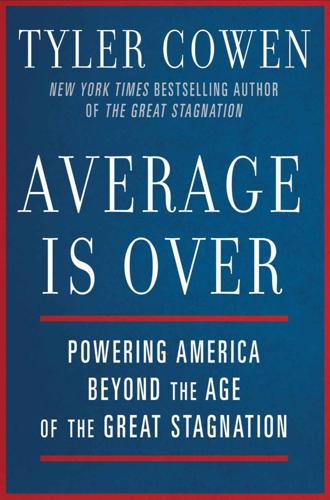
Average Is Over: Powering America Beyond the Age of the Great Stagnation
by
Tyler Cowen
Published 11 Sep 2013
Even the height of a person—a clearly heritable characteristic—seems to involve dozens of distinct genes, with more being found all the time. We’re not going to find a “gay gene” or an “autism gene,” even though genes play major roles in both homosexuality and autism. Or consider the recent detection of the Higgs boson. On one hand it held out the promise of completing previous particle theories and tying up their loose ends with some empirical verification. On the other hand, researchers are already wondering what deeper truths of a “Grand Unified Theory” might lie underneath our current understanding. The candidate approaches here are hardly simple or intuitive, and it’s far from obvious that they will converge to general intelligibility over time.
…
See healthcare domestic oil production, 177 domestic productivity, 169 Dorn, David, 164 Dreber, Anna, 106 driverless automobiles, 8 drone aircraft, 20–21 Duflo, Esther, 222 Dumaine, Erika, 62 Duncan, Arne, 57 dystopian visions, 135 “Economic Growth Given Machine Intelligence” (Hanson), 135–36 economics behavioral economics, 75–76, 99, 105, 110, 149, 227 and “Big Data,” 221–22 changing emphasis in research, 221–28 computational economics, 222 development economics, 226 economic crises, 50–51, 53, 55, 232 and incentive for innovation, 138 Keynesian, 53–54, 56, 226 macroeconomics, 9, 166, 211–12, 226 microeconomics, 212, 225 and online education, 180 economies of scale, 184 Economou, Rona, 61 education and the changing labor market, 37, 168–69 chess as model for, 185–88, 191–92, 202–3 educational standards, 90 in El Paso, 246 Emporium model, 183–84 and face-to-face instruction, 194–202 and foreign competition, 176 and gaming, 185–88 and geographic trends, 171–72 and income polarization, 4 new higher education models, 188–94 online education, 179–85 and the social contract, 231 and “tutor kings,” 200–201 and wage trends, 40–41 egalitarianism, 189–90 eHarmony, 95 Einstein, Albert, 126, 211, 213, 215 El Paso, Texas, 245–46 elderly population, 51–52, 236–37, 258 elections, 10–11, 234–35 electronic shopping, 27 The Elegant Universe (Greene), 212–13 empiricism, 225–26 employer-provided healthcare, 237–38 Emporium education model, 183–84 endowment effect, 99–100 energy costs, 177 Eng, Richard, 200 engineering, 26 English boarding schools, 199 entertainment industry, 22 epigenetics, 212 Equifax, 125 Euclid, 216–17 Europe, 173–75 evolution of machines, 150–51 exclusivity, 36, 95–96, 192–94 expert testimony, 129 “Face time,” 146 Facebook, 26, 209–10, 221, 257 face-to-face education, 194–202 factor price equalization, 163 factories, 92 Fair Isaac Corporation, 124 Felin, Teppo, 139 Feller, Sébastien, 147 FICO scores, 124 financial crisis, 50–51, 53, 55 financial sector, 25, 41, 128–29, 129–30 fiscal crunch, 231–51 Fischer, Bobby, 101, 108, 188 fixed employment costs, 113 Florida, 8, 237, 241, 251–52 Florida, Richard, 256 “Flynn Effect,” 107–8 Foer, Joshua, 152 food prices, 246, 248 Ford, Martin, 6 foreign competition, 161–63, 163–71, 175–77 Foxconn, 7–8 “fracking,” 177 France, 39 Franchise (Asimov), 10–11 Franklin, Benjamin, 148 free trade, 166, 176 freelancing, 59–63 Freestyle chess compared to traditional chess, 77–83 and computer simulations, 227–28 and decision-making models, 129 described, 77–83 impact on human play, 83–86 masters of, 86–87 origin of, 46–47 and other man-machine collaborations, 86–89, 89–93 and risk-taking behavior, 75–76 and self-education, 202–3 spectator interest in, 156–57 Friendster, 209 Fritz (chess program), 68, 78, 109, 114 futurism, 6, 134 “g factor” (general intelligence), 42–44 game theory, 222 Gates, Bill, 25 Gattaca (1997), 13 Gelfand, Boris, 156 gender issues and changing worker profiles, 30–31 and chess, 106, 108 and labor force trends, 51 and wage trends, 52–53 and wealth inequality, 249 General Electric, 38, 87 general relativity theory, 211 “Generation Limbo,” 62 genetics, 17, 211–12 geographic trends, 171–75 Gerdes, Christer, 106 Germany, 39, 173–74 Global Hawk surveillance drones, 20–21 globalization, 10 Go (game), 135 Gobet, Fernand, 76 Google and availability of knowledge, 7 and “Big Data,” 221 and driverless cars, 8 and the labor market, 26, 27, 34–36 and medical diagnosis, 89 and memory, 151–52, 154 and online marketing, 22 and public trust, 217 and regulatory issues, 17 government budgets and spending, 175, 176, 198, 231–51 GPS technology, 7, 14–15, 113–15, 116–17 “Grand Unified Theories,” 212 Gränsmark, Patrik, 106 Great Recession (2008–2009), 54–59 “great stagnation,” 5 Greek symposia, 197 Greene, Brian, 212–13 Grischuk, Alexander, 109 Hanson, Gordon H., 164 Hanson, Robin, 135–36 Harvard University, 192–94, 201 Hauchard, Arnaud, 147 Hayek, Friedrich, 215 healthcare costs of, 59, 60, 113 employer-provided, 59, 113, 237–38 and the fiscal crunch, 232, 234–39, 242, 249–50 and the labor market, 31, 238 and mandates, 237–38 and physician rating systems, 124–25 and protectionism, 176 and rationing, 249–50 and regulatory issues, 16–17 and wealth inequality, 243–44 hermeticism, 153 Hernandez, Nelson, 78–79, 86, 157, 203 Higgs boson, 212 higher education, 168, 188–94, 194–202 hiring costs, 36, 59, 60 Hirschberg, Julia, 12–13 Hitt, Lorin M., 33 Hlatshwayo, Sandile, 176 Hong Kong, 200–201 Houdini (chess program), 68 household incomes, 38 housing costs, 53, 55, 63, 239–40, 244–45 human judgment and error, 102–3, 104, 131 human-machine interface, 91–92 Hydra (chess program), 69 IBM, 7, 47 imitation, 141, 144.
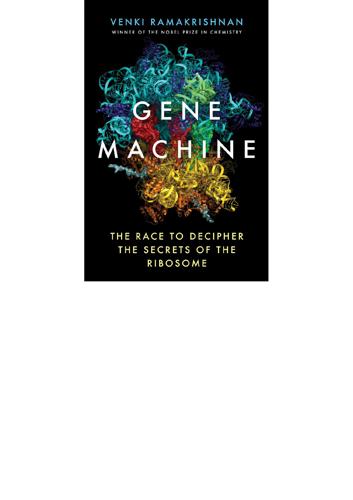
The Gene Machine
by
Venki Ramakrishnan
Also, the explosion of science in the last half century has meant that lots of important advances never get the prize and it has increasingly become a lottery. Increasingly, the rule of three means that year after year, there are complaints about people who have been overlooked. Although many big advances, like the discovery of the Higgs boson or sequencing the human genome, are done by large collaborative teams, the science prizes, unlike the peace prize, are not awarded to institutions. And though the Nobel amount is large, there are now prizes that dwarf it in cash value. For these and other reasons, the Nobel may be in danger of losing its unique, exalted status.
…
As I have mentioned before, collaboration works best when people know each other well and like working together, or when they bring complementary expertise to bear on a problem that no one group can tackle alone. They are also essential for very large-scale projects, like the human genome project or the search for the Higgs boson, that can involve hundreds of people. These days there is a great deal of ideological fervour about the value of collaborations, but the truth is that scientists will collaborate or compete depending on what is in their self-interest. It is not a general rule that collaboration is always good and competition is always bad.

AIQ: How People and Machines Are Smarter Together
by
Nick Polson
and
James Scott
Published 14 May 2018
The underlying model is, again, a complicated equation that describes a complicated pattern: which English phrases tend to go with which Spanish phrases across a huge database of sentences rendered side by side in both languages. Finally, consider a new smartphone app developed by Dr. Elina Berglund Scherwitzl, a Swedish physicist who helped discover the Higgs boson—and who’s now well into her second career as an entrepreneur, having invented a new AI-based contraceptive technology. Berglund Scherwitzl had long sought an alternative to hormonal contraception, yet she had never managed to find an option she liked. In that problem, she saw an opportunity. She and her husband, Raoul Scherwitzl, quit their jobs as physicists and set out to use their data-science skills to build a new variation on an old idea: the “rhythm method,” which involves tracking your menstrual history to predict when you’re most likely to be ovulating.
…
genomic profiling glomerular filtration rate (GFR) Google searches for “how long does flu last” health care policy hospitals ibrutinib (cancer drug) incentives influenza innovation and kidney disease kidney function over time mammogram screening medical imaging Nightingale’s coxcomb diagram (1858) patient-centered social networks PatientsLikeMe privacy and security remote medicine smart medical devices targeted therapy Tiatros See also cancer; Nightingale, Florence Heller, Katherine Herbert, Sidney Herd, Andy Higgs boson Hofstadter, Douglas Hopper, Grace “Amazing Grace” compiler breakthrough death of early years and education final years FLOW-MATIC (data-processing compiler) Google Doodle in honor of Harvard Mark I and top-down, rules-based approach of UNIVAC and World War II and Hotelling, Harold House of Cards (Netflix series) Howard, Dwight Hubble, Edwin Hubble Space Telescope Hunter College IBM early speech-recognition Harvard Mark I Watson supercomputer ImageNet Visual Recognition Challenge image classification image recognition prediction rules and Imperial College London imputation influenza Influenza-like Illness Surveillance Network (ILINet) Infor Instagram data storage hashtags psychology and Insulet investing.
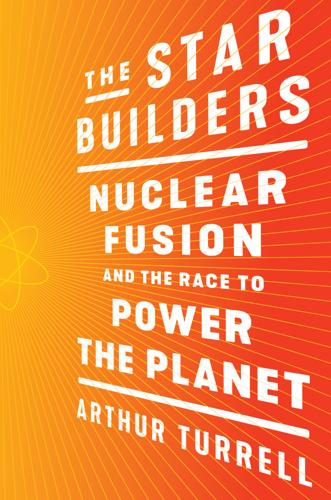
The Star Builders: Nuclear Fusion and the Race to Power the Planet
by
Arthur Turrell
Published 2 Aug 2021
Castelvecchi, “Next-Generation LHC: CERN Lays Out Plans for €21-Billion Supercollider,” Nature (2019), https://www.nature.com/articles/d41586-019-00173-2; E. Gibney and D. Castelvecchi, “CERN Makes Bold Push to Build €21-Billion Supercollider,” Nature (2020), https://www.nature.com/articles/d41586-020-01866-9; A. Knapp, “How Much Does It Cost to Find a Higgs Boson?,” Forbes (2012), https://www.forbes.com/sites/alexknapp/2012/07/05/how-much-does-it-cost-to-find-a-higgs-boson/#28829a2c3948; J. R. Minkel, “Is the International Space Station Worth $100 billion?,” Space.com (2010), https://www.space.com/9435-international-space-station-worth-100-billion.html; E. Cartlidge, “Square Kilometre Array Hit with Further Cost Hike and Delay,” Physics World (2019), https://physicsworld.com/a/square-kilometre-array-hit-with-further-cost-hike-and-delay/. 31.
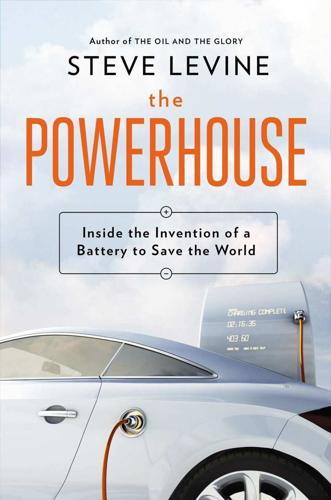
The Powerhouse: Inside the Invention of a Battery to Save the World
by
Steve Levine
Published 5 Feb 2015
“We haven’t done that,” Littlewood said, “which is why we’re in the mess we’re in now and why you see scrambled proposals to try to get something that works in a period of a few years.” He said, “We’re driven because the energy problem is so close to us that we need to solve it. But we don’t understand properly how batteries work.” Littlewood turned up at Bell in 1980, just out of graduate school. His specialty was exotic phenomena such as the Higgs boson, the theoretical particle crucial to quantum physics. Bell had no distractions—no teaching, no pesky students—and researchers enjoyed seemingly limitless resources. New researchers would show up and be told, “Do something interesting.” Not prolific invention, but do one important thing every year.
…
.: Annual Merit Review, 141, 227–28 and ARPA-E, 193–95, 199–206 and auto industry, 105–6, 107 and Battery Hub, 133, 138, 204, 216, 218–19, 224, 226, 245, 247, 249, 250–52, 282 conference held by, 190–91 and En-Caesar, 134–36 and Envia, 165–66, 231–32 and national laboratories, 10, 11, 40, 77, 78, 105, 119, 122, 123, 127, 135, 140, 167, 287 and publication, 166 risk aversion in, 125–26 and Sematech, 129–31 and voltage fade, 158–61, 167, 283 energy outlook, 178–80 Envia Systems: and ARPA-E, 193–95, 201–3, 207, 213 and battery competition, 78, 105–8, 193–95, 197, 201–3, 204–6, 207–8, 213–14 buyout sought by, 108, 201, 205–6 and Croy, 238–41 and DC resistance, 230–31 and GM, 110–17, 205, 206, 230–31, 255–59, 260–67, 272–75, 276–81, 286 and Kumar, see Kumar, Sujeet lawsuits against, 280–81 and licensing, 86–87, 151, 156 and NMC, 72, 111, 156, 162, 169–71, 195, 196, 197–98, 202, 233–34, 286 start-up, 71–72, 78, 86, 165, 201 and venture capital, 86–87, 111–14 and voltage fade, 157–58, 163–65, 171 ExxonMobil, 8, 21, 35, 134 energy outlook by, 178–80, 191, 232 Faguy, Peter, 159–61, 166, 227, 283 Faraday, Michael, 27 Fermi, Enrico, 10, 23 financial meltdown (2008–2009), 7, 181, 190 Ford, Henry, 124 Ford Motor Company, 19–20, 21, 25, 158, 183, 286 fossil fuels, 121, 143, 178, 180, 183, 188 Franklin, Benjamin, 18 Freund, Erwin O., 11–12 Frisch, Damon, 231, 260 Gallagher, Kevin, 100, 185, 207–10, 224, 233 and ARPA-E, 201, 204 and Battery Hub, 212–14, 228, 243–45, 252 and Envia, 201, 208, 213–14, 277, 279 and Nelson-Gallagher model, 212, 213–14, 243–44 and Obama visit, 268–71 and voltage fade, 158, 239, 285–86 Galvani, Luigi, 18 Gates, Bill, 195, 199 Geely, 6, 284 General Electric (GE), 8, 62 General Motors (GM), 71, 183, 188, 196, 284, 285 bankruptcy filing by, 114 and Chevy Spark, 214 and DC resistance, 230–31 and Envia, 110–17, 205, 206, 230–31, 255–59, 260–67, 272–75, 276–81, 286 and EV1, 184 GM Ventures, 109–16, 151, 205 and Volt, see Volt Goldwasser, Eugene, 127 Goodenough, John, 21, 22–26, 91, 113, 210, 269 and Battery Hub, 242–43 leadership style of, 25–26, 30, 101 and lithium-cobalt-oxide battery, 25, 27, 28–29, 31, 35, 38, 44, 45, 52, 58, 119, 152, 154 and Padhi, 37–39 and patents, 33, 36, 38–39, 66 and Thackeray, 30–32, 33, 38 Goodenough-Kanamori rules, 23 Greenberger, Jim, 130–31 Grove, Andrew, 75–76, 129 Gruen, Dieter, 10–11, 13–15, 209 Henriksen, Gary, 236–37 Herschel, William, 27 Higgs boson, 119 Hillebrand, Don, 182–85, 187–89, 228, 284, 286 Honda, 115, 116, 117, 206, 231, 257 Howard, Matt, 268–69 Howell, Dave, 107, 134–35, 160, 167, 210 Hu Jintao, 4 hybrid vehicles, 8, 20, 36, 76, 109, 177–78, 179, 184, 185, 257 Hyundai, 196 IBM, 186, 206 India, Union Carbide leak in, 36 Intel, 75–76, 121, 129 intercalation, use of term, 21 internal combustion engine, 19, 45, 109, 132, 154–55, 179, 181, 183 iPhone, 129, 187, 198, 250–51 Isaacs, Eric, 119, 269, 286 and Battery Hub, 135, 137–38, 216, 218–19, 220–21, 225–26, 243–44, 248, 250, 251, 253, 254 and En-Caesar, 135, 137 Iyer, Hari, 256, 258, 262–66, 274, 276, 277 Jae-kook Kim, 56, 57 Japan: battery production in, 35, 102–3, 136, 178, 192 competition in, 36, 75, 99, 129, 130, 177–78, 214, 280 consumer battery market in, 5, 7, 8, 9, 142 and electric vehicles, 184, 284 patents in, 39, 66, 98–99, 197 U.S. ideas moving to, 36, 187, 205 Jobs, Steve, 202 Johnson, Chris: and lithium-ion, 41, 43, 58, 153 and NMC, 41, 43, 58–59, 72, 153, 159, 236, 278 and patents, 46, 56–57, 72, 153 and Thackeray, 40–41, 42, 43, 46, 287 and voltage fade, 159, 227–28 Johnson, Lady Bird, 179 Johnson Controls, 68, 131, 149, 150 Joshua, Matthus, 266, 273, 276 Jun Lu, 99 Kang Eun Kyung, 100–101 Kapadia, Atul, 91 and Envia/Kumar, 86, 106–7, 114–17, 166, 202–6, 255, 257–58, 261, 262–67, 274, 276–77, 279, 280–81 and venture capital, 85–86, 106–7, 112, 117 Khosla, Vinod, 190–91 Kumar, Sujeet, 83–87, 88–90, 91, 192–98 and Argonne, 83–85, 86, 152 and ARPA-E, 193–98, 201–6, 207, 230, 233, 277 and Chamberlain, 86–87, 88, 115–17, 203–4 and Energy Department, 105, 165–66, 190, 193, 231–32 and Envia, 86, 107–8, 111, 114, 116–17, 162–66, 206, 238–41, 239, 255–59, 260–67, 272–75, 276–81, 286 and GM, 110–14, 165, 205, 230–31, 256–59, 260–67, 276, 278–80, 286 and NanoeXA, 94–95, 267, 280–81 and NMC, 83, 84, 94, 95, 111, 128, 152, 155, 165, 169, 170–71, 193–96, 231, 261, 277, 286 and venture capital, 84–87, 106, 116, 126, 205–6 and voltage fade, 155, 157, 163–64, 168–69, 233–34, 238–39 lattice, 44 Lauckner, Jon, 109–14, 205, 231, 280, 286 Lawrence Berkeley National Laboratory, 132–33, 135–36, 165, 166, 260 Lawroski, Stephen, 13 LG Chemical, 9, 70–72, 110, 113–14, 156, 257, 261, 267, 285 Lindbergh, Erik, 286 Littlewood, Peter, 118–20, 122, 243–44, 286 Madia, Bill, 218–22, 223–24, 226, 253–54 Majumdar, Arun, 195, 199, 200–201, 203–5, 279 Manhattan Project, 10, 11, 129, 143 Mansfield, Mike, 23 Markovic, Nenad, 243 Mathias, Mark, 216, 231 Matsushita, 197 microchips, 75, 186 Microsoft model, 118 MIT, Lincoln Laboratory, 23 mobile phones, 122, 186 Moore’s law, 186 Morse, Edward, 180 Musk, Elon, 232–33 NanoeXa, 83–84, 94–95, 267, 280–81 Naperville, 13 natural gas, 60 Nelson, Paul, 16–17, 210–13 Newman, John, 132, 134–35 Nippon Telegraph and Telephone (NTT), 37–38, 39 Nissan, 107, 115, 116, 158, 183, 202, 284 Leaf, 177, 179, 183, 186 Nitz, Larry, 266–67, 273 nuclear age, 10, 14, 20 Oak Ridge National Lab, 11, 14, 137, 228, 242–43, 260 Obama, Barack: Argonne visit of, 268–71 one-million-car goal, 5, 60 Obama administration, 135, 280 and battery competition, 70–71, 84, 107–8, 130, 187, 252, 253 and economic stimulus, 131, 203 and electric cars, 60, 106, 125, 145, 177, 178, 187, 261 and LG Chemical, 70–71, 113 oil: Arab embargo (1973), 21, 23, 28 demand for, 8, 60–61, 178 electricity as challenge to, 152 and energy security, 142–43, 284 prices of, 8, 35, 60, 178, 179, 180, 183, 189 public image of, 84, 146 shale gas and, 180, 190 Okada, Shigeto, 37–39 omnivorous engine, 188 OPEC (Organization of Petroleum Exporting Countries), 8, 23, 61, 183 Orbach, Ray, 242 Ovshinsky, Stan, 36 Oxford University, 24, 29–30, 32, 33, 36 Padhi, Akshaya, 37–39 Pak, Michael, 84, 94–95, 267 Panasonic, 9, 36, 197, 214, 232, 265 Park Sang-Jin, 102–3 Patel, Anish, 113 patent applications: for NMC, 45, 58–59, 66, 170, 197 race for, 39, 47 for spinel, 33, 38–39 patents: challenges to, 47 contributions described in, 57 enforcement of, 73 failure to patent, 127 government-funded, 68 infringement of, 39, 71 international, 65–69, 98, 153, 197 inventors’ names on, 156 lawsuits for, 39, 197 lead time for, 57–58 and licensing, 36, 68–69, 95 protection of, 78 provisional, 46, 55 and royalties, 36, 98, 149–51 signing away rights to, 36, 77 stealing ideas for, 38, 55 Pentagon, 127 Persson, Kristin, 243 Peters, Mark, 218, 220, 228, 251, 253 Planté, Gaston, 19 plutonium, creation of, 11 Popular Science, 19–20 Preto, Sandy, 16 Prius, 36, 153, 158, 177–78, 179, 185, 186, 188–89 Putin, Vladimir, 8, 284 Ralston Purina, 36 RCA, 62 Reagan, Ronald, 35, 122, 129 Redpoint Ventures, 112 Rickover, Hyman, 14 Riley, Bart, 154–58, 163 RockPort Capital Partners, 84–85 Roosevelt, Franklin D., 11 Russia, oil production in, 61, 183 Sadoway, Donald, 199 SAGE (computer memory), 23 Samsung, 9, 155, 158, 202, 205, 213, 231, 261, 265, 267, 284 Samsung SDI, 102–3, 104 Sattelberger, Al, 5 Schroeder, Dave, 62, 63–65 Seaborg, Glenn, 10 Seegopaul, Purnesh, 202–3, 263, 266, 274–75 Sematech (Semiconductor Manufacturing Technology), 129–31, 133, 282 Sharp, 214 Shin-Etsu, 265, 266, 281 silicon chips, 75–76 Silicon Valley, 129, 150, 201 Asian immigrants in, 90–94 Sinkula, Mike, 83–87, 88, 95, 110, 114, 116–17, 202, 263, 280 Slater, Mike, 207, 209 smart phones, 5, 167, 186, 187 Smil, Vaclav, 199 Solyndra, 203, 240 Sony, 35, 41, 118, 152, 197, 198, 214 South Africa, 27–28, 41–42, 43, 47 South Korea: battery competition in, 99, 103, 114, 136, 214, 280, 284 consumer battery market in, 5, 8, 9, 37, 142 patents filed in, 66, 197 trade alliance with, 70–72 spec sheets, 115–16 spinel, 28–29, 30–32, 33, 38–39, 41–42, 45–46, 110, 113, 152, 153 Spitfire (chip), 85 Srinivasan, Venkat, 91, 120, 149, 220 Straubel, JB, 232 Sun-Ho Kang, 100–104, 155, 157–59, 213, 231 Sun Microsystems, 190 technology: and global financial crises, 7–8 and Moore’s law, 186 usual path of, 185–86, 189, 192, 201 Teller, Edward, 23 Temping Yu, 99 Tennessee Valley Authority (TVA), 11 Tesla Motors, 232–33, 284 Thackeray, Lisa, 42, 217 Thackeray, Mike, 27–33, 40–48, 67, 103, 235–36, 237, 269, 270 and battery competition, 78, 91, 126, 180, 182 and Battery Hub, 132, 135, 137, 141–42, 149, 217–18, 221, 227–28, 248, 251, 254, 269 and Chamberlain, 27, 73–74, 77–78, 128, 141–42, 221 and collaboration, 140–42, 170 and Croy, 168, 170–72, 238, 241, 286, 287 and Envia/Kumar, 78, 85, 166, 168–72, 207, 255–56, 277, 278 and Johnson, 40–41, 42, 43, 46, 287 and lithium-ion, 31–33, 41–42, 45–46, 152, 153 move to Argonne, 41–42, 48, 53, 98, 102 and NMC, 41, 43–47, 55–57, 58, 66, 70–72, 72, 74, 79, 84, 102, 127, 132, 141, 152, 153–57, 160, 197 and patents, 33, 46–47, 73, 78, 84, 127, 153, 156, 170 and spinel, 28–29, 30–32, 33, 38, 41–42, 45–46, 110, 113, 152, 153 and voltage fade, 154–57, 159–60, 210, 238 Thatcher, Margaret, 35 thermodynamics, 154, 169, 170 3M Company, 58, 66, 153, 197–98 Toda, 67, 156 Toyota, 8, 115, 116, 117, 189, 231, 257, 284 and Prius, see Prius Trahey, Lynn, 207, 208–10, 212, 268–71 transistor, 122 Tulgey Wood, 11–12 Ullrick, Brad, 224–25 Union Carbide, 36 Union of Concerned Scientists, 214–15 United States: and battery competition, 5, 6, 7, 9, 68, 71, 74, 107, 151 energy requirements of, 75 industrial decline in, 37, 129 research cutbacks in, 62, 65 University of Chicago, 127 Stagg Field, 10, 11 University of Texas, 39, 242 uranium-235, 11 Vaughey, Jack, 135, 228, 235, 237–38 Vegetabile, Jim, 147 Venkatachalam, Mani, 163, 165 venture capital, 84–87, 106–7, 111–13, 116–17, 126, 128, 190–91, 201, 266, 274 Verbrugge, Mark, 111 Vissers, Don, 41–42, 53, 55, 102 Volt, 109–13, 145–48 batteries for, 3, 4, 5, 47–48, 70, 107, 113, 146–48, 155, 197–98, 233, 257, 266, 272, 280, 285 as concept car, 109, 110, 147 cost of, 72, 107, 109, 257 fires in, 145–46 as hybrid, 109, 185 in the lab, 188 market for, 72, 109, 183 next generation of, 110, 112, 256–57 sales of, 109, 177, 186 Volta, Alessandro, 18, 19, 45 Wan Gang, 60, 76, 96, 178, 180, 280, 282–83, 284 U.S. visit of, 3–6, 7, 9, 27, 79 Wanxiang, 252 Watson, T.
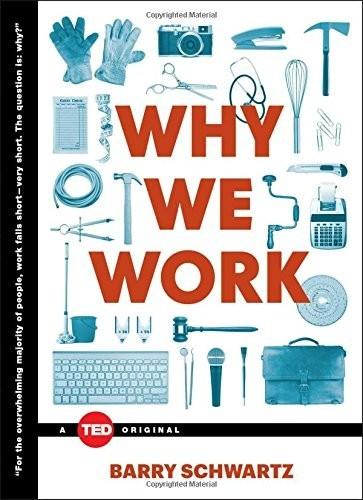
Why We Work
by
Barry Schwartz
Published 31 Aug 2015
The distinction between discovery and invention is crucial, and not just because it affects who gets to earn how much money from what. When a scientist, or anyone else, discovers something, it doesn’t occur to us to ask whether that discovery should exist. In other words, though discoveries often have moral implications, they do not, by themselves, have moral dimensions. If someone were to suggest that the Higgs boson shouldn’t exist, we’d wonder what mind-altering substance he’d ingested. Inventions, in contrast, are a whole other story. Inventions characteristically have moral dimensions. We routinely ask whether they should exist. We wonder what’s good (life improving) about them, and what the drawbacks are.
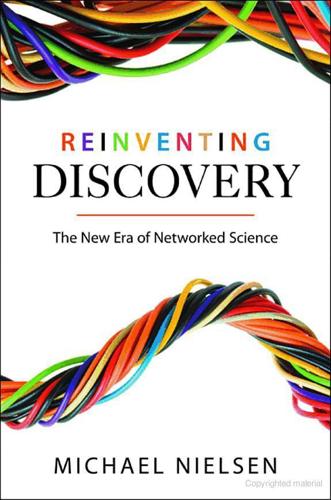
Reinventing Discovery: The New Era of Networked Science
by
Michael Nielsen
Published 2 Oct 2011
[39] Chess Base. PAL / CSS report from the dark horse’s mouth, June 22, 2005. http://www.chessbase.com/newsdetail.asp?newsid=2467. [40] The chess games of Hydra (Computer). http://www.chessgames.com/perl/chessplayer?pid=87303. [41] Tom Chivers. Large Hadron Collider rival Tevatron “has found Higgs boson,” say rumours. Daily Telegraph, July 12, 2010. [42] Hyunyoung Choi and Hal Varian. Predicting the present with Google trends. Google Research blog, April 12, 2009. http://googleresearch.blogspot.com/2009/04/predicting-present-with-google-trends.html. [43] Andy Clark and David J. Chalmers.
…
Hoboker, NJ: IEEE Computer Society, 2006. [46] Seth Cooper, Firas Khatib, Adrien Treuille, Janos Barbero, Jeehyung Lee, Michael Beenen, Andrew Leaver-Fay, David Baker, Zoran Popović & Foldit players. Predicting protein structures with a multiplayer online game. Nature, 466:756–760, August 5, 2010. [47] Rachel Courtland. Higgs boson: Is a result imminent? New Scientist, July 9, 2010. [48] Partha Dasgupta and Paul A. David. Toward a new economics of science. Research Policy, 23:487–521, 1994. [49] Paul A. David. The historical origins of “open science”: An essay on patronage, reputation and common agency contracting in the scientific revolution.

This Is for Everyone: The Captivating Memoir From the Inventor of the World Wide Web
by
Tim Berners-Lee
Published 8 Sep 2025
We woke up in Geneva for a celebration at CERN, where the web was born. Much had changed at CERN in the intervening years. The 27-kilometre ring now housed the finished Large Hadron Collider, by far the most powerful particle accelerator the world has ever seen. One of its objectives was to search for the Higgs boson, a particle which interacts with other particles to give them mass. Without the Higgs, there would be no solid matter – no planets, no stars, just a universe of energy whizzing around. The British physicist Peter Higgs had first proposed the existence of this particle in 1964, when he was thirty-five years old – about the same age I was when I had first proposed the web.
…
Nash ref1, ref2 digital commons ref1 digital divide ref1 Digital Equipment Corporation (DEC) ref1 digital signatures ref1 dishwasher poem (GPT-4) ref1 disinformation ref1, ref2 Ditchley Foundation ref1, ref2, ref3, ref4 DNS (Domain Name System) ref1, ref2, ref3 documentation systems ref1, ref2 documents compared to data ref1 doomscrolling ref1, ref2 dot-com bubble ref1, ref2, ref3 dot-matrix printers ref1 Doubleclick ref1 Dougherty, Dale ref1 Dow Jones ref1 Dropbox ref1 e-commerce ref1 E-Trade ref1 East Sheen, London ref1 ECMAScript ref1 Edelman, Richard ref1 Edelman Trust Barometer ref1 Edge ref1 Egypt ref1 eigenvectors 151n Elbaz, Gil ref1 electromagnets ref1 Electronic Frontier Foundation (EFF) ref1, ref2, ref3 Elizabeth II ref1, ref2, ref3, ref4 email ref1, ref2 Emanuel School ref1, ref2, ref3 encryption ref1, ref2, ref3, ref4 engagement, algorithms ref1, ref2, ref3, ref4 Engelbart, Douglas ref1, ref2 Enigma cipher ref1 ‘Enquire-within’ program ref1, ref2, ref3 Enquire Within Upon Everything ref1 equality ref1 Equifax ref1 error codes ref1 Erwise ref1 Eternal September ref1 Ethiopia ref1 Euler’s formula ref1 European Commission ref1 European Computer Manufacturers Association (ECMA) ref1 European Council for Nuclear Research see CERN European Semiconductor Equipment Company ref1 European Union Brexit ref1 GDPR (General Data Protection Regulation) ref1, ref2 Ex Machina (film, 2014) ref1 Excite ref1 Expedia ref1 Facebook advertisements ref1 Africa ref1 AI training ref1 Arab Spring ref1 collaborative filtering and polarization ref1, ref2 data breaches ref1 data ownership ref1 microtargeting ref1 users as the product ref1, ref2 facts, encoding ref1, ref2 farming ref1 Fediverse ref1, ref2, ref3 Fermilab ref1 Ferranti ref1, ref2, ref3 Ferranti, Basil de ref1 File Transfer Protocol (FTP) ref1, ref2 Filo, David ref1 Finland ref1 Firefox ref1, ref2 First Parish Church, Lexington ref1 Flametree ref1 Flanders ref1, ref2 Fora ref1 Ford Foundation ref1 Forth (programming language) ref1 forums ref1 Foster, Norman ref1 free speech ref1 Freud, Lucien ref1 Friendster ref1 Fry, Stephen ref1 Gal, Yarin ref1 Gallaudet University ref1, ref2 garbage in, garbage out ref1 Gates, Bill ref1, ref2, ref3, ref4 GDPR (General Data Protection Regulation) ref1, ref2 GEC ref1 Gemini ref1 generalization ref1 Geneva ref1, ref2, ref3, ref4, ref5 Geneva Amateur Operatic Society (GAOS) ref1 genome-sequencing providers ref1 Geocities ref1 geospatial mapping ref1 Ghana ref1 Gifford, David ref1 GIFs ref1, ref2 Gilliat, Bruce ref1 Gilmore, John ref1 Gilyard-Beer, Peter ref1 Glasswing ref1, ref2 Global News Network (GNN) ref1 Gmail ref1 Go (game) ref1, ref2 Gods of Literature ref1, ref2 Goldstein, Jono ref1, ref2 Google AJAX ref1 anti-trust lawsuits ref1 Applied Semantics purchase ref1 China ref1 Chrome ref1 DeepMind ref1 Gemini ref1, ref2 Gmail ref1 Google Docs ref1 Google Maps ref1, ref2 Google Meet ref1 hosted web anniversary dinner ref1 HTML and WHATWG ref1 passkeys ref1 search functionality ref1, ref2 standards ref1 start-up ref1 transformers ref1 users as the product ref1 Web Index ref1 Zeitgeist network event ref1 Google Maps ref1, ref2 Gopher ref1, ref2 Gore, Al ref1, ref2, ref3, ref4 government data ref1, ref2, ref3 governments and Contract for the Web ref1, ref2, ref3 GPS data ref1, ref2 GPTs (Generative Pre-trained Transformers) ref1, ref2, ref3, ref4 GPUs (Graphical Processing Units) ref1 Grail ref1 graph structures ref1, ref2 Great Firewall of China ref1, ref2 Greif, Irene ref1 Grisham, John ref1 Grok AI ref1 Grundy, Frank ref1, ref2 hacktivism ref1 Hall, Justin ref1 Halonen, Tarja ref1 Hanamura, Wendy ref1 haptic touch ref1 Harari, Yuval Noah ref1, ref2 Hardin, Joseph ref1, ref2, ref3 Harris, Kamala ref1 Harris, Tristan ref1 Harrison, George ref1 Harvard Berkman Klein Center for Internet and Society ref1, ref2 Institute for Rebooting Social Media ref1 Hassabis, Demis ref1, ref2 Hawke, Sandro ref1 Helsinki ref1 Helsinki University of Technology ref1 Hendler, Jim ref1 Herzberg, Frederick ref1 Heywood, Jeremy ref1 Hickson, Ian (Hixie) ref1, ref2 hierarchies ref1 Higgins, Eliot ref1 Higgs boson ref1 Higgs, Peter ref1 Hinton, Geoffrey ref1 holiday bookings ref1, ref2 Home Depot ref1 home pages ref1 Hoogland, Walter ref1, ref2 Hoschka, Philipp ref1, ref2 HTML (Hypertext Markup Language) ref1, ref2, ref3, ref4, ref5, ref6 HTTP (Hypertext Transfer Protocol) ref1, ref2, ref3, ref4, ref5 HTTPS standard ref1 human first systems ref1 human rights ref1, ref2, ref3, ref4, ref5, ref6 see also civil liberties humans as social animals ref1 HyperCard ref1 hyperlinks ref1, ref2, ref3, ref4, ref5, ref6, ref7, ref8 hypertext ref1, ref2, ref3 see also HTML Hypertext ‘91 conference ref1 Hypertext ‘93 conference ref1 Ibargüen, Alberto ref1 IBM, Watson ref1 identity theft ref1 IETF (Internet Engineering Task Force) ref1, ref2, ref3 images GIFs ref1, ref2 IMG tag ref1 PNG (Portable Network Graphics) ref1 Imitation Game, The (film, 2014) ref1 ‘Imitation Game’ (Turing) ref1, ref2 inclusivity ref1, ref2 India ref1, ref2 indigenous communities, land rights ref1 Industrial Revolution ref1 Inflection.AI ref1 Infosys ref1 infrastructure evolution ref1 INRIA (National Institute for Research in Digital Science and Technology), France ref1, ref2 Inrupt ref1, ref2, ref3, ref4 Instagram ref1, ref2, ref3 Institute for Rebooting Social Media ref1 integrated circuits ref1 intellectual property rights ref1, ref2 intelligence agencies ref1, ref2 intention economy ref1, ref2, ref3, ref4 intercreativity ref1, ref2, ref3, ref4 International Standards Organization (ISO) ref1 internet Al Gore funding bill ref1, ref2 blackouts ref1 deep web ref1 early development ref1 early functionality ref1 free ethos ref1, ref2, ref3 Map of Everything ref1, ref2, ref3 protocols ref1, ref2 size ref1 universal access ref1, ref2 see also World Wide Web Internet Archive ref1, ref2 Internet Explorer ref1, ref2, ref3, ref4, ref5 internet service providers (ISPs) ref1, ref2, ref3 interoperability ref1, ref2, ref3, ref4, ref5 Intuit ref1 invisible pixels ref1 IP addresses ref1, ref2, ref3 iPhone ref1, ref2, ref3 Iran ref1 ITT ref1 Jambon, Jan ref1 Java ref1 JavaScript ref1, ref2, ref3 Jitsi ref1 Jobs, Steve ref1, ref2, ref3, ref4, ref5, ref6, ref7 Jones, Peter ref1 JScript ref1 JSTOR ref1 Justin’s Links from the Underground ref1, ref2 Kagame, Paul ref1 Kahle, Brewster ref1, ref2 Kahn, Bob ref1, ref2 Kapor, Mitch ref1 Keio University, Tokyo ref1 Kendall, Alex ref1 Kenya ref1 killer apps ref1 Kirk, Anna ref1 Kirk, Matthew ref1 Knight Foundation ref1 Kotok, Alan ref1 Krotoski, Aleks ref1 Kubrick, Stanley ref1 Kunz, Paul ref1 Kurzweil, Ray ref1 labelling reality or fakes ref1 land rights ref1 LANs (Local Area Networks) ref1 Larkin, Philip ref1 Lassila, Ora ref1 Last.fm ref1 Le Corbusier ref1 LeCun, Yann ref1 Legal Information Institute (LII) ref1, ref2 Legg, Shane ref1 legislation Data Use and Access Bill ref1 GDPR (General Data Protection Regulation) ref1, ref2 mobile phone spectrum ref1 open data ref1 Leighton, Tom ref1 Leith, Rosemary (wife) Berkman Klein Center for Internet and Society ref1 investments ref1 marriage to Tim ref1 sailing ref1, ref2 visits Beijing ref1 web anniversary speech ref1 Web Foundation ref1, ref2, ref3 Lenat, Doug ref1 Lessig, Lawrence ref1 Lewin, Daniel ref1 Li, Angel ref1 liability of hosts ref1 Library of Alexandria ref1, ref2 Library of Congress ref1 LibreOffice ref1 Libya ref1 Lie, Hakon ref1, ref2, ref3 lifeloggers ref1, ref2 lists ref1 Literature, Gods of ref1, ref2 LLMs (Large Language Models) ref1, ref2, ref3, ref4 LocalFirst Community ref1 location data ref1 logic agents ref1, ref2 logic gates ref1, ref2, ref3 London 2012 Olympics ref1, ref2 Lovett, Adrian ref1 Lycos ref1 Lynx ref1 Ma, Jack ref1, ref2 Mac OS X ref1 MacArthur Fellowship ref1 McBryan, Oliver ref1 McCahill, Mark ref1 McCartney, Paul ref1, ref2 McCourt, Frank ref1 machine learning collaborative filtering ref1 neural networks ref1, ref2 see also artificial intelligence machine translation ref1 McManus, Richard ref1 MacWWW ref1 Malamud, Carl ref1 Mandelbrot ref1 maps geospatial mapping ref1 Google Maps ref1, ref2 Map of Everything on the Internet ref1, ref2, ref3 OpenStreetMap ref1, ref2 World Wide Web Middle Earth ref1 Marcos, Bongbong ref1 Markey, Ed ref1, ref2 Martin, George R.
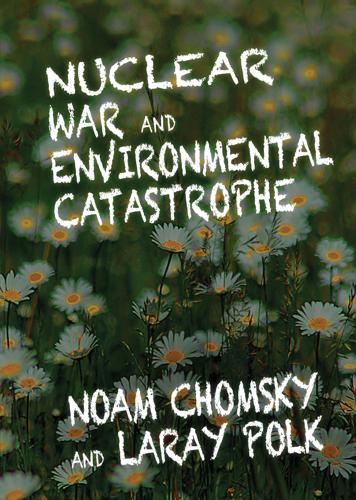
Nuclear War and Environmental Catastrophe
by
Noam Chomsky
and
Laray Polk
Published 29 Apr 2013
I don’t know who Richard Land is, and if he regards Gingrich as a “real intellectual,” I don’t see much reason to explore further. The term “intellectual” is typically used to refer to those who have sufficient privilege to be able to gain some kind of audience when they speak on public issues. The world’s greatest physicists are not called “intellectuals” if they devote themselves, laser-like, to the search for the Higgs boson. A carpenter with little formal schooling who happens to have very deep insight into international affairs and the factors that drive the economy and explains these matters to his family and friends is not called an “intellectual.” There is evidence that the more educated tend to be more indoctrinated and conformist—but nevertheless, or maybe therefore, they tend to provide the recognized “intellectual class.”
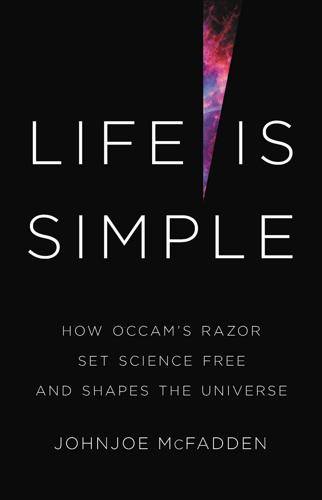
Life Is Simple: How Occam's Razor Set Science Free and Shapes the Universe
by
Johnjoe McFadden
Published 27 Sep 2021
Generations I, II and III differ only in their mass. For example, the muon and the tau are more massive versions of the electron. Then there’s the single generation of the force-carrying bosons, including the photon and the rather strange Higgs boson. The Higgs is something of an outlier but is essential for our existence as its interaction with other particles endows them with mass. In fact it is their differing degree of interaction with the Higgs boson that endows the generation II and III particles with more mass than their generation I counterparts. If the Higgs did not exist, they would all be identical. FIGURE 37: The Standard Model of particle physics.
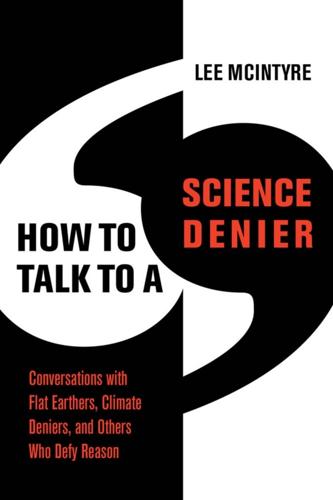
How to Talk to a Science Denier: Conversations With Flat Earthers, Climate Deniers, and Others Who Defy Reason
by
Lee McIntyre
Published 14 Sep 2021
In February 2019, Reuters published a story that said that the evidence for human-caused global warming had reached the “gold standard” of confidence, at the “five-sigma” level. This means that there is only a one-in-a-million chance that the climate change deniers could be right. Granted, this is not the same as certainty. But it is the same level of confidence that was reached in 2012 to announce the discovery of the Higgs boson subatomic particle, which is a basic building block of the universe.37 Of course, someone might continue to doubt the evidence, and claim that you should embrace the science denier’s alternative because it “might” be right. But that is an absurd standard for belief.38 How does one shame the shameless?
…
See also Climate change denial; Maldives, The belief conversion and, 75–76 carbon dioxide emissions and, 42, 82, 117, 119, 220n6 coal dependence, 103–106 coral death, 96–100 government response to, xii, 87, 116 as hoax, 38–39 human activity and, 42, 44–45 moral framing and, 119 popular concern about, 84, 85, 87, 88, 89 rate of climate change, xii, 81–83, 97, 115–116 scientific consensus on, 85–86, 118–120 Golden rice, 126–127, 132, 134, 137, 149–150 Gun control, 22–23, 51–52, 53, 134 Guterres, António, 82 Haelle, Tara, 161, 224n15 Haidt, Jonathan, 130 Hamilton, Lawrence, 154–156, 235n15, 236n20 Hear Yourself Think (nonprofit), 106 Hierarchy of needs, 113, 114–115 Higgs boson subatomic particle, 45 HIV/AIDS denial, 163, 233n82 Hoofnagle, Mark and Chris, 33, 42, 196n2 “How to Convince Someone When Facts Fail” (Shermer), xiv, 66–67, 205n21 “How to Talk to Anti-Maskers” (Warzel), 175–178 Hughes, Mike, 9–10, 21 Huxley, Thomas Henry, 22 Identity belief formation and, 49, 66, 71, 120, 204n9 identity-preventive reasoning, 52 identity-protective cognition, 50–51, 158, 160–161 identity threat, 63–67 identity vs. ideology, 51–53, 66, 121 information deficit model and, 50, 56–57, 64, 71, 73–74, 78, 79, 179 social factors and, 204n9 “Ideologues without Issues” (Mason), 53 Ideology vs. identity, 51–53, 66, 121.
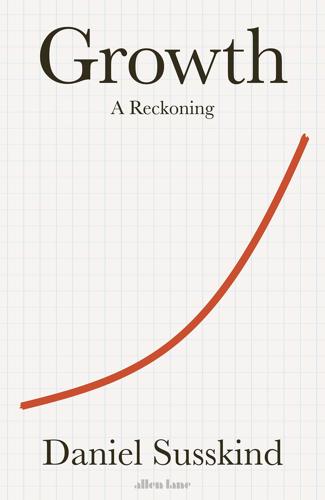
Growth: A Reckoning
by
Daniel Susskind
Published 16 Apr 2024
Not that long ago it was possible to imagine the discipline populated by lone-ranging intellectuals, each making discoveries in solitary contemplation – Isaac Newton resting under the apple tree at Woolsthorpe Manor, Albert Einstein reviewing applications in the Zurich Patent Office, Werner Heisenberg wandering across the sodden crags of Heligoland in the North Sea. Yet if this is an overly romantic conception of the historical field, it bears no relation to the contemporary one at all. Take the discovery of the ‘Higgs boson’, one of the great achievements of our time. Since the 1960s, this elementary particle has played a central role in our understanding of the universe; hence its nickname, the ‘God Particle’. But until recently it only existed in theory, to the frustration of those hunting for it; hence its other nickname, the ‘Goddamn Particle’.69 In 2012 it was finally spotted in the wild, and Peter Higgs and his colleague François Englert were awarded the Nobel Prize in Physics.
…
K., 90, 92, 305n56; The Affluent Society (1958), 154 Galton, Francis, 42 Ganesh, Janan, 93 Gates, Bill, 85–6, 237, 243 Georgescu-Roegen, Nicholas, The Entropy Law and the Economic Process (1971), 152–3, 160 gig economy, 108 Gini coefficients, 102–3 Glennerster, Rachel, 291n65 globalization, costs of, 115–19, 256–7 Glorious Revolution (1688), 46–7 Google, 189 Gordon, Robert, 93, 175 Gorz, André, 160 Great Depression, 62–3, 75–7 Great Stirrup Controversy, 111 ‘green growth’, 162–3, 222–3, 236–7 greenhouse effect, 100 Gross Domestic Product (GDP): adopted by UN, 72; creation of, 56–7, 62, 66–7; and the Marshall Plan, 71–2; moral limits to, 132–9; technical limits to, 127–32 Habakkuk, Hrothgar, 28 Han Fei, 123 Hansen, Alvin, 175 happiness, economics of, 86–8 Harford, Tim, 182 Harrod, Roy, 28 Harrod-Domar model, 28–31, 32, 58, 286n27 Harvard University, 198 Hassabis, Demis, 201 Hayek, Friedrich, 216, 272 Heilbroner, Robert, 26 Heisenberg, Werner, 196 Hemingway, Ernest, 305n51 Hesse, Carla, 322n14 Hickel, Jason, 154, 163 Hicks, John, 210 Higgs, Peter, 197 Higgs boson particle, 196–7 Hobbes, Thomas, 12 Hobsbawm, Eric, 38, 277n4 Hodgson, Godfrey, 89, 304n48 Holmes, Oliver Wendell, 193 Hoover Institution, 216, 218 Huawei (company), R&D (Research & Development), 188 Hugo, Victor, 181 human capital, 36–7 Hume, David, 272 hunter-gatherer communities, high standard of living, 12–13 IBM, patents, 182 illegal activities, and GDP, 134–5 immigration, and new ideas, 190–1 Industrial Revolution, 209–10 inequality: and accumulated wealth, 256; and economic growth, 101–6; and innovation, 191–4 intellectual property (IP), 178–86 intergeneration equity, 257 Intergovernmental Panel on Climate Change, 151 International Energy Agency (IEA), 238–9, 241 International Monetary Fund (IMF), 66, 115 inventors, and inequality, 191–4 iPhone, 190 Ireland, citizen assemblies, 266 Irish Potato Famine, 19–20 Italy, GDP ranking, 130–1 J.
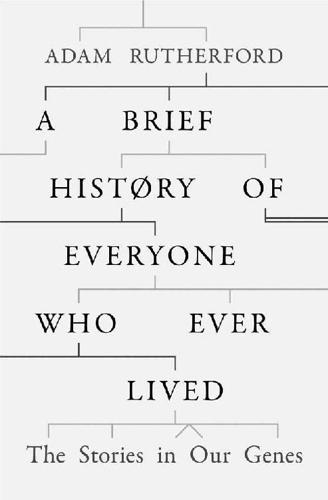
A Brief History of Everyone Who Ever Lived
by
Adam Rutherford
Published 7 Sep 2016
Lifelong collaborations and friendships are made, bitter squabbles and permanent enmities are forged.1 In May 2000, many of the best geneticists in the world had assembled at Cold Spring Harbor on the north shore of Long Island. They were there getting ready for the final furlong of the largest, grandest, most expensive project in the history of biology, and in the history of science, second only to the twenty-seven-mile-round particle accelerator at CERN that would later unveil the Higgs boson to the world. While the physicists were busying themselves trying to understand the fundamental structure of the universe, the geneticists were putting together the most difficult jigsaw puzzle ever attempted. The Human Genome Project had been running for eight years, and an end (though not ‘the’ end) was in sight.
…
However, humans are complex: so why would anyone think that human genetics would be simple? Physics has a natural tendency to reduce the universe into simple models that describe everything. We have the Standard Model – a bunch of equations that describe the twelve fundamental particles that all matter is made of, quarks, electrons and the all-important Higgs boson. It will be refined in time, as new discoveries are made, but most physicists think, based on previous results, that the model of the universe will become simpler again. Biologists sometimes get physics envy, because every time we find out one of our big rules – universal genetics, evolution by natural selection – things look more complex within them as soon as we begin to look.
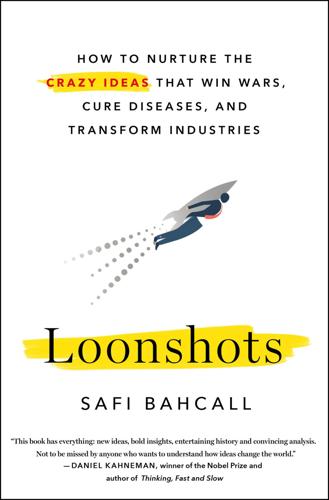
Loonshots: How to Nurture the Crazy Ideas That Win Wars, Cure Diseases, and Transform Industries
by
Safi Bahcall
Published 19 Mar 2019
A handful of particle physicists applied Anderson’s ideas to solve another long-standing mystery: how we should think about the origin of mass in the universe. They jointly came up with the idea for what is now called the Higgs boson. (Murray Gell-Mann, who coined the term “quark” and helped create the standard model of particle physics, for which he earned the 1969 Nobel Prize, has argued it should be called the Anderson-Higgs boson.) Histories of superconductivity: Schmalian; Cooper. Popular histories of the Higgs search: Carroll, 135–62; Gell-Mann, 193–94; and Lederman. Technical histories of the Anderson-Higgs mechanism: Brown; Hoddeson, 478–522; Anderson, 4–49, 115–19; Witten.
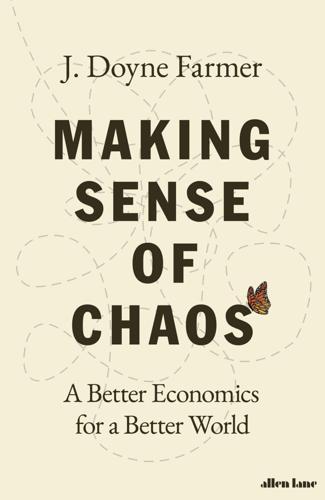
Making Sense of Chaos: A Better Economics for a Better World
by
J. Doyne Farmer
Published 24 Apr 2024
It is 27 kilometers in circumference and consumes 1.3 terawatt-hours of electricity a year. The electricity alone costs $23.5 million annually, enough to power 300,000 homes. But this is only a small part of its cost – it employs about 2,200 people, with an operating budget of about $1 billion per year. Its crowning achievement to date was the observation of the Higgs boson in 2012, which confirmed theoretical predictions published in 1964. This observation required a forty-year effort and cost about $13 billion.1 Gathering the data needed to understand the origins of dark matter and dark energy requires even higher energies. Building an accelerator that could do this would require such a massive expenditure of resources that it’s unlikely to ever happen.
…
See also Covid-19 equilibrium 17, 29 behavioral economics and 103, 104, 105 Beveridge curve and 71 ‘Beyond Equilibrium and Efficiency’ conference (2000) 168–9 bounded rationality and 116, 117, 128 chaos and 36, 37, 128–35 clustered volatility and 164–5, 170 complexity-economics and xvi, 8, 55, 63 Computable General Equilibrium models 102 disequilibrium xiii, 71, 116, 117 DSGE models and 99–101 financial crises and 197, 198–9, 201, 215 market efficiency and 157 markets moods and 171, 173, 176 Nash equilibrium 130–32 origins and definition of 15–16 Standard economic models and xvi, 8, 17, 93, 95–6, 97, 98, 99–101 ‘The Virtues and Vices of Equilibrium and the Future of Financial Economics’ (paper, 2009) 17 EURACE model 257 European Central Bank 2, 50, 188 evolution, theory of 7, 176–9, 183, 188–9 excess profits 180–81, 198 experience curve 239 experiments 6, 28 agent-based models and 278 behavioral economics and 103–4, 106, 110, 115 chaos 33, 36 counterfactual 87–8 fluid-turbulence 39, 217–18 market 171–2, 181 ‘what-if’ 102, 181 expert opinions 6, 115 Explorer Post 114 25 Fama, Eugene 111, 143–4, 146, 148–9, 160, 177, 180 Federal Reserve Bank, US 257 Federal Reserve Bank US model (FRB/US) 2, 82 Feigenbaum, Mitchell 41 financial crises 1, 2, 11, 142, 233, 280 Asian financial crisis (1997) 195, 219, 232 avoiding future 261–2 credit, leverage and 191–8 dot-com bubble 180, 200 global financial crisis (2008) see global financial crisis Great Depression 2, 162, 191 Greek debt crisis 22 stock market crash (1987) 161–4, 165, 166, 167, 168, 187 Financial Policy Committee, UK 90 financial system credit and 191–220 see also credit disruptions that flow back and forth between the economy and, understanding 262 ecology and evolution 175–90 see also ecology markets, inefficient 139–60 see also markets self-referential market 161–74 see also markets Fisher, Adlai 216 FitzRoy, Robert 223–4 fixed-leverage caps 205 fixed-point attractor 30–31, 33, 34, 36–7, 182 floor costs 250–51, 250 fluid turbulence chaos and 34, 35, 36, 38, 39, 143, 229 intermittency in xii, 129, 216–20, 217 resemblance between financial and 216–20, 217 food chain 57–8 Ford Motor Company 238 forecast, etymology of 223 fortuitous phenomena 33 free parameters 86–7, 273–4 French, Kenneth 180 Frey, Carl 68 friction 101–3, 127, 153 Friedman, Milton 9, 106, 177 ‘Frontiers of Finance: Evolution and Efficient Markets’ (paper, 1999) 183 fundamentals 171, 175–6, 186 Gabaix, Xavier 23, 56, 104, 120–21 Gallegati, Mauro 257–8 Galla, Tobias 132 game theory 128–35 Gatti, Domenico delli 257–8 GDP (Gross Domestic Product) balance sheets and 47 business cycles and 28–9 Covid-19 and xv, xvii, xviii credit network and 191–2 economic inequality and 259 energy sector and 221 financial system size and 141 global 279 Greek debt crisis and 22 growth and 268 trophic structure of the U.S. and Chinese economies, comparison of xi, 59–63, 59 Geanakoplos, John 17, 82, 168, 193–200, 207, 214, 215 Gennaioli, Nicola 104 ‘Geometry from a Time Series’ (paper, 1980) 36 George Mason University 82, 274 Ghashghaie, Shoaleh 217 Gigerenzer, Gerd 111, 113, 114 Gillemot, László 154 global financial crisis (2008) 191 agent-based models and 190, 198–204, 206–16, 206, 209, 211 business cycle for 69, 70–71 change in the economy and 8–9 complex-systems thinking and 50 credit/leverage and 191–216, 206, 209, 211, 219 economic inequality and 259 Federal Reserve Bank US model (FRB/US) and 2, 82 GDP and 279 housing market and xi, 2, 80–90, 88, 89n, 203–4, 237 market inefficiency and 170 modeling failures and 1–2, 8–9, 121 mortgage-backed securities and 81–2, 160, 178, 187, 189–90, 193–4, 196, 202–3 risk management and 206–16, 206, 209, 211 Gode, Dhananjay 156 golden rule 125, 126–7 Goodhart, Charles 205 Google 49, 224 Google Maps 149 Granovetter, Mark 48 grass food chain and 57–8 specialists and 10–11, 44 gravity, theory of 3, 74, 153 Great Depression, The 2, 162, 191 Greece 22–3 green-energy transition 222 Climate Policy Laboratory and see Climate Policy Laboratory ‘Empirically Grounded Technology Forecasts and the Energy Transition’ (paper, 2022) 251 Fast Transition scenario 237, 252–4 labor transitions 64–72, 266 modeling evolution and 263–8, 264, 279 No Transition scenario 251–4 Slow Transition scenario 252–3 speed of 245–54, 246, 250 technological progress and 234–54, 237, 243, 246, 250 greenhouse gases 221, 229–31, 235 Greenwald, Diana 245 Gurley, John 15, 152, 154 gut brain 139–40, 142, 277 Haan, Wouter den 122 Harry (first wearable computer) 27 Harvard Mark II 55 Harvard University 17, 23, 54, 55, 141, 166 hedge fund 142, 144–5, 155, 174, 194 Heinrich, Torsten 135 Heitzig, Jobst 124 heterogeneity 7, 102–3, 260 Heterogeneous Agent New Keynesian (HANK) models 102–3, 260 heuristics 109–15 ‘adaptive toolbox’ of 113–14 agent-based simulation and 121 bounded rationality and 117, 118, 118n, 202, 206 defined 109–12 gaze heuristic 109–10 ‘imitate the best’ 124, 125–6, 127 modeling behavior directly and 112–15 risk management and 210–11 weather forecasts and 224 Higgs boson 271 high-dimensional chaos 219 Hoermann, Ingrid R. 28 Holland, John 170, 171 Hommes, Cars 172–3, 200 Homo economicus 6, 11, 103 households as agents 4, 6 agent-based models and 121, 124–7, 258, 272 Asano model and 124–7, 135 balance sheets and 46 business cycles and 124–7, 126 Climate Policy Laboratory and 264, 264, 265, 266 DSGE models and 99–100, 127, 258, 260 Heterogeneous Agent New Keynesian (HANK) models 102, 260 housing market and 81, 83–9 myopic 104 production network and 58, 60 RCK model and 124–7 savings 81 Solow model and see Solow mode synthetic 260, 267 housing market 16, 142, 189–90, 269 global financial crisis (2008) and xi, 2, 80–90, 88, 89n, 203–4, 237 London, housing prices in 89–90 Washington DC simulation xi, 80–90, 88, 89n, 110, 115, 121 Howitt, Peter 82 hydrogen-based fuels 248, 252, 253 IHS Markit xvii imitation 7, 110 ‘imitate the best’ 124, 125–6, 127 index arbitrage 163, 179 Industrial and Corporate Change 183 industries agent-based modeling and xiii, xiv–xviii, 263, 274–5 climate change and 221, 222, 254, 264, 265, 266 Covid-19 model and xiii, xiv–xviii, 263 Heterogeneous Agent New Keynesian (HANK) models and 102 households as 51 labor demand and 65–6 non-essential xiii, xiv–xv production networks 53–63, 59, 76 service 58, 60, 62 sustainable growth and 267, 268 inefficiencies, market arbitrageur and 155, 156–7 defined 141, 179–80 emergence of 160 institutional structure and 198 market crashes and 161–70, 199–200, 202 market ecology and 141, 177, 179–80, 185 Prediction Company and 147, 155, 156–7 signals and 157–9 slow path to market efficiency and 156–60 technological progress and 159 inequality, economic 1, 3, 11, 49, 124, 233, 255, 257, 258, 259–61, 279, 280 inflation 3, 28, 47, 98, 101, 123, 238, 257–8, 261 information, theory of 20 Ingerson, Thomas Edward v, 25, 27 innovation 4, 11, 12, 17 agent-based models and testing for side-effects of 187–8 balance sheets and 46 climate change and 234–54, 237, 243, 246, 250, 266 evolutionary perspective 43, 44 specialization and 63 stock market crash (1987) and 163–4 technological 3, 6, 13, 27, 28, 42, 50, 57, 60–61, 63, 100, 149, 159, 234–54, 237, 243, 246, 250, 266, 278 input-output models 55, 56 Institute for New Economic Thinking, Oxford Martin School 64, 82 institutional support, complexity economics and 13–14, 274–6 integrated-assessment models 248–51, 250 interbank-lending network 49–50 interest rates 24, 47, 82, 84, 87, 89, 98, 167, 171, 185, 194, 195, 257, 259–60, 261 International Energy Agency (IEA) 249–50, 250, 251 investment banks 142, 189–90, 195, 207, 208, 210–11, 212–13, 215 Iori, Giulia 154 Iphigenia (mythical character) 22 Ives, Matt 246 Jackson, Matthew 49 Jackson, Tim 267 Jevons, William Stanley 95–6 job space for the United States, network view of xi, 66–8, 66 Joshi, Shareen 183 Kahneman, Daniel 103–4 Kauffman, Stuart 51, 187–8 Keynes, John Maynard 97–9, 102, 257 Keynes-Schumpeter model 257 Kidder-Peabody 175, 194 Kleinnijenhuis, Alissa 216 Knight, Frank 106–7 Koh, Heebyung 238 Kolb, Jakob 124 Koopmans, Tjalling 100 Krugman, Paul 22, 42 labor transitions 64–7, 66, 266 Lafond, François 242, 244, 245 Laibson, David 23, 120–21 laptop, supply chain of xi, 51, 52, 53–4, 60–61, 121 Large Hadron Collider at CERN 271 law of large numbers 56 Lawrence, Karen 189 learning 114–15 algorithms 114–16, 117, 134–5, 171 machine learning see machine learning reinforcement 114, 131, 133–5 Wright’s law/learning by doing 239–45, 249 LeBaron, Blake 38, 39–40, 170–71 lending contracts and 140 housing bubbles/financial crises and 8–9, 80–89, 190, 191–9, 202, 203 inflation and 257 interbank-lending network 49–50 Leontief, Wassily Wassilyevich 54–7, 63 less-is-more effect 111 leverage 188, 191–216 agent-based models of the leverage cycle 198–216, 211, 219 assets and 192, 193, 196, 197, 199, 200, 204–5, 208, 210, 211–12, 211 Basel leverage-cycle model xii, 204–16, 211, 219 broker-dealer leverage and volatility, comparison of the U.S. xi, 206–7, 206 cycle 198–9, 201–2, 208, 209, 211, 213, 215–16 definition of 192–3 financial crisis (2008) and 192, 202–16, 206, 209, 211 fixed-leverage caps 205 Geanakoplos and see Geanakoplos, John Long-Term Capital Management (LCTM) and 194–8 mortgages and 84 news and 198–202 passive 208, 209, 209 prices and 196–205, 208, 209, 210–12, 211, 214, 215 risk management and 204–16, 206, 209, 211 stat-arb funds and 190 ‘The Dynamics of the Leverage Cycle’ (paper) 210 U.S broker-dealer leverage and volatility, comparison of xi, 206–7, 206 Levin, Simon 184 liabilities 45–7, 141 limit cycle 30–31, 33, 34, 37, 40 limit-order book 154–6 links 45–6, 48, 49–50, 51, 52, 53, 55, 57, 58, 59, 66–7, 66, 67, 73, 191 Lloyd, Seth 159 Lo, Andrew 183, 184 London, housing prices in 89–90 Long-Term Capital Management (LCTM) 194–8 Lorenz attractor xi, 30–36, 32 Lorenz, Edward xi, 30–36, 32, 38–40, 217, 219, 223, 228 Lotka-Volterra equations 182–3 Lucas critique 4, 116 Lucas, Robert 98–9 machine learning xix, 3, 11, 76, 170 agent-based models and 114–15 analogs and 224 firm-level network and 273 stock market and 145, 170, 171 Mackintosh, David xi, 119 Macrocosm 276 macroeconomics 3, 7, 9, 29, 47, 56, 102, 103, 107, 128 evolution of contemporary 97–9 Macrofinancial Seminar, London School of Economics (2018) 122 Magee, Christopher 238 malfunction, market 11, 141, 161, 170, 174, 178, 179, 180, 185, 201 market ecology predicting 184–6 Manhattan Project 41 Mantegna, Rosario: Econophysics 153 manufacturing xi, 51–63, 52, 59, 79, 98, 121, 239, 277 margin calls 193–7, 199–202 markets complexity economics and mood of 170–74 crashes see individual crash name econophysics and 56, 152–3, 155, 168–9, 183 efficiency/inefficiency see efficiency, market fat tails 165, 173, 199–200, 215, 217, 218 financial system and 139–42 leverage and see leverage market ecology see market ecology market-impact function 150–56, 163, 178–81, 189–90, 195 Prediction Company and see Prediction Company rational expectations and see rationality regulation see regulation risk and see risk self-referential 161–74 signals and see signals stock market see stock market technological progress and 149, 159 thin tails 165, 218 Markowitz, Harry 111–12 Marshall, Alfred 95–6; Principles of Economics 43 Marx, Karl 48 McCarthy, Joe 25 McGill, Jim 144 McNerney, James 57–8, 239–40, 245 Mealy, Penny xi, xiv, 64, 246 Meriweather, John 194 Merton, Robert 150, 194 meta-dynamical systems 50–51 metabolism, economy as 43, 50–54, 55, 139, 277 method of analogs 224–5, 229, 231 Metropolis, Nicholas 41 Mexico 65, 259 microdata 72, 87, 229 microeconomics 9, 47, 97, 99 micro-founded models 99–103, 122, 124 micro-simulation 1, 260–61 Milgram, Stanley 45 Miller, Merton 196, 215 Minsky, Hyman 193, 196, 214 MIT 183, 238 modeling, future 255–69 climate change and 263–7, 264 disasters and 262–3 economic inequality and 259–61 financial crises and 261–2 steady course of economy and 257–9 sustainable growth and 267–9 models.
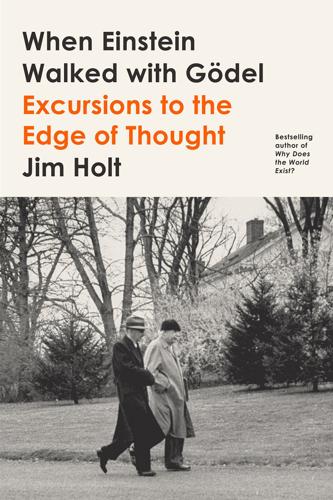
When Einstein Walked With Gödel: Excursions to the Edge of Thought
by
Jim Holt
Published 14 May 2018
Still, the standard model has proved to be splendidly useful, predicting the result of every subsequent experiment in particle physics with exquisite accuracy, often down to the eleventh decimal place. As Feynman once observed, that’s like calculating the distance from Los Angeles to New York to within a hairbreadth. The standard model was hammered out by the mid-1970s and has not had to be seriously revised since. (A crowning confirmation came in 2012 when the Higgs boson, the last missing piece, was discovered thanks to the Large Hadron Collider at CERN, the European center for experimental physics.) The standard model tells how nature behaves on the scale of molecules, atoms, electrons, and on down, where the force of gravity is weak enough to be overlooked. General relativity tells how nature behaves on the scale of apples, planets, galaxies, and on up, where quantum uncertainties average out and can be ignored.
…
harmonic analysis harmonic series Harper’s Magazine Harrington, John Harris, Michael Harvard Business Review Harvard University; Faculty Club; Frenkel at; Law School; Mandelbrot at; string theory at Harvey, William Hawking, Stephen Heaviside, Oliver Heawood, Percy “Pussy” Hebrew University Hegel, Georg Wilhelm Friedrich Heidegger, Martin Heine, Heinrich Heisenberg, Werner Heisenberg’s War (Powers) Henry II, King of England Hereditary Genius (Galton) heredity Higgs boson higher dimensions Hilbert, David; formalism of; on twenty-three most important problems in mathematics Hinduism Hintikka, Jaakko Hinton, Charles Hiroshima, atomic bombing of Hitchcock, Alfred Hitchens, Christopher Hitler, Adolf Ho Chi Minh Hodges, Andrew Holmes, Oliver Wendell, Jr. Holocaust Holy Family (Raphael) Homo erectus homologous evolution Homo sapiens homosexuality Hornby, Nick How to Be Good (Hornby) Hoyle, Fred human flourishing human genome humanitarianism Hume, David hydrogen bomb IBM ideas, theory of Ilarion Illinois, University of imaging technologies Imitation Game, The (film) “Implications of the Copernican Principle for Our Future Prospects” (Gott) implosion lens Incompleteness (Goldstein) incompleteness theorem; mathematical logic contradicted by Incredible Shrinking Man, The (movie) “In Defense of Distraction” (Anderson) Industrial Revolution Infinite Jest (Wallace) infinitesimal infinity; Cantor v.
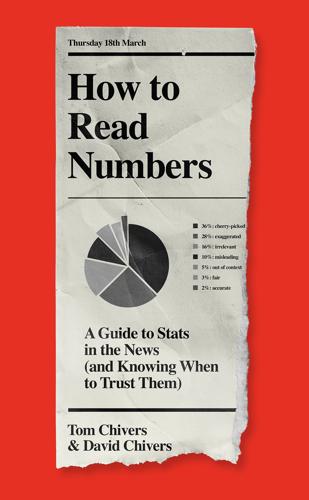
How to Read Numbers: A Guide to Statistics in the News (And Knowing When to Trust Them)
by
Tom Chivers
and
David Chivers
Published 18 Mar 2021
And be wary of reporting on how ‘fast-growing’ something is: a political party, for instance, can easily be the ‘fastest-growing’ party in Britain if it has doubled in size from one member to two members. See Chapter 11 for more information. 3) Check whether the study you’re reporting on is a fair representation of the literature Not all scientific papers are born equal. When CERN found the Higgs boson, or LIGO detected gravitational waves, those findings were worth reporting on in their own right. But if you’re reporting on a new study that finds that red wine is good for you, it should be presented in the context that there are lots of other studies, and that any individual study can only be part of the overall picture.

Model Thinker: What You Need to Know to Make Data Work for You
by
Scott E. Page
Published 27 Nov 2018
Physicists, though, might not reject the hypothesis, at least not if the data came from a physics experiment. Physicists impose stricter standards because they have larger data sets—there are a lot more atoms than people, and cleaner data. The evidence physicists relied on for the existence of the Higgs boson in 2012 would occur randomly less than once in 7 million trials were the Higgs boson not to exist. The drug approval process used by the United States Food and Drug Administration (FDA) also uses tests of significance. If a pharmaceutical company claims that a new drug reduces the severity of eczema, that company must run two randomized controlled trials.

50 Future Ideas You Really Need to Know
by
Richard Watson
Published 5 Nov 2013
This currently sounds ridiculous to some, but if one day we understand what consciousness is, perhaps we’ll be able to isolate it and put it somewhere else, thereby creating creatures of pure consciousness—spirits by another name. The God Particle Could something that many people strongly believe in, but nobody has ever seen, change how we think about life on Earth? The Higgs boson is a subatomic particle that scientists predicted would one day be discovered. It just has, and may soon go some way to explaining why things exist in the way that they do. It certainly explains where mass comes from, which should, in turn, explain why things exist the way they do in the universe.
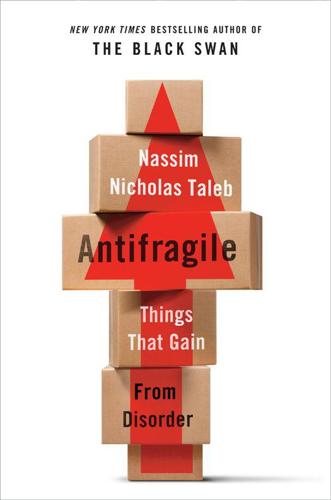
Antifragile: Things That Gain From Disorder
by
Nassim Nicholas Taleb
Published 27 Nov 2012
Cooking schools are entirely apprenticeship based. On the other side, we have pure physics, with theories used to generate theories with some empirical validation. There the “epistemic base” can play a role. The discovery of the Higgs Boson is a modern case of a particle entirely expected from theoretical derivations. So was Einstein’s relativity. (Prior to the Higgs Boson, one spectacular case of a discovery with a small number of existing external data is that of the French astronomer Le Verrier’s derivation of the existence of the planet Neptune. He did that on the basis of solitary computation, from the behavior of the surrounding planets.

How Emotions Are Made: The New Science of the Mind and Brain
by
Lisa Feldman Barrett
Published 6 Mar 2017
The riddle forces us to confront our assumptions about the nature of reality and our role in creating it. But here, the answer is a bit more complex, because it depends on what we mean by “real.” If you talk to a chemist, “real” is a molecule, an atom, a proton. To a physicist, “real” is a quark, a Higgs boson, or maybe a collection of little strings vibrating in eleven dimensions. They are supposed to exist in the natural world whether or not humans are present—that is, they are thought to be perceiver-independent categories. If all human life left this planet tomorrow, subatomic particles would still be here.4 But evolution has provided the human mind with the ability to create another kind of real, one that is completely dependent on human observers.
…
Albert Einstein illustrated this point nicely when he wrote, “Physical concepts are free creations of the human mind, and are not, however it may seem, uniquely determined by the external world.”5 Common sense leads us to believe that emotions are real in nature and exist independent of any observer, in the same manner as Higgs bosons and plants. Emotions seem to be present in wiggling eyebrows and wrinkled noses, in sagging shoulders and sweaty palms, in racing hearts and squirts of cortisol, and in silence, screams, and sighs. Science, however, tells us that emotions require a perceiver, just as colors and sounds do. When you experience or perceive emotion, sensory input is transformed into patterns of firing neurons.
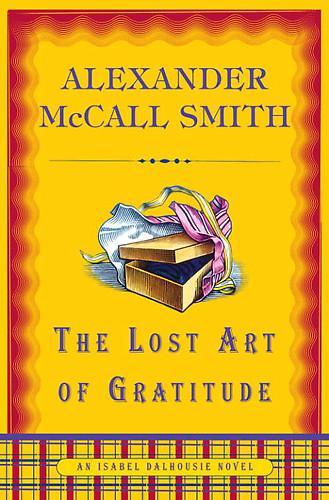
The Lost Art of Gratitude
by
Alexander McCall Smith
Published 21 Sep 2009
The debates about olives and chi forces were minutely intertwined. Grace had stood her ground during that discussion. “There are plenty of things nobody can see,” she said. “What about that particle thingy that they’re trying to find. That Higgs bison, or whatever.” “Boson,” Jamie had interjected. “Higgs boson. It’s a sort of …” “Boson,” said Isabel. “I saw Professor Higgs the other day, you know. He was walking along Heriot Row looking down at the pavement.” “He won’t find his boson down there,” said Grace. “He wouldn’t have been looking for it,” said Jamie. “It exists only in the mathematics he did.
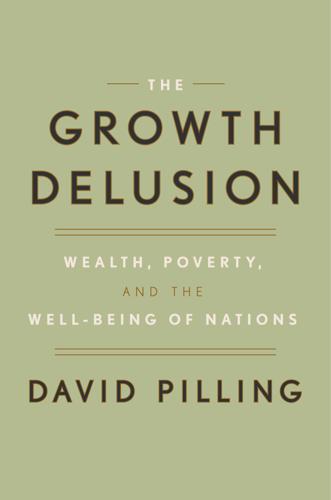
The Growth Delusion: Wealth, Poverty, and the Well-Being of Nations
by
David Pilling
Published 30 Jan 2018
In a shameless bid to win the professionals over to the cause of this book, here is a plea: give them more money and power. The UK contributes about £127 million each year to the particle accelerator at CERN, the European Organization for Nuclear Research in Geneva. “For that, we get a share in measuring the mass of the Higgs boson to I don’t know how many decimal places,” says Nick Oulton of the London School of Economics, referring to the elementary particle. “All very exciting stuff. But the Office for National Statistics’ budget—and that’s not just for GDP, of course, that’s for registering births, marriages and deaths and to track migration, employment, unemployment, all the components of GDP as well as GDP itself—its budget this year is £173 million.
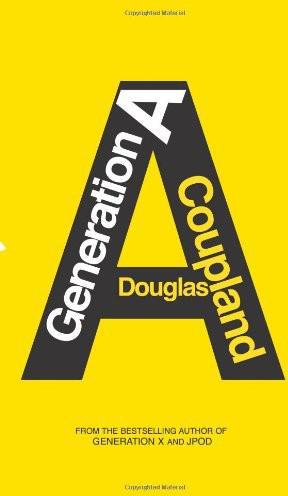
Generation A
by
Douglas Coupland
Published 2 Jan 2009
It’s a 12,500-ton digital camera with 100 million pixels that takes 3-D pictures of Large Hadron Collider collisions 40 million times per second. Want more? There were twenty people with me in the group—a few scientists, my father and a polytechnic school group from Marseilles. The adults were arguing about whether we were technically in France or Switzerland, while the students were discussing Higgs Boson particles and their stamp collections and staring at me like I was a rare animal. I needed to find a pissoir in the worst way, so I ducked down a steel rampway and into a promising-looking hallway in pursuit of relief. I was wearing a hard hat and a lab coat and fit right in. Suddenly there was an explosion so loud that I was deaf for a few seconds afterwards.
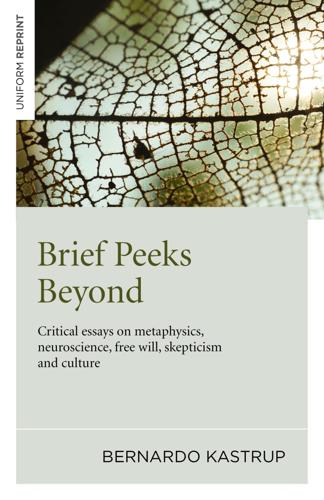
Brief Peeks Beyond: Critical Essays on Metaphysics, Neuroscience, Free Will, Skepticism and Culture
by
Bernardo Kastrup
Published 28 May 2015
One is the field of existence, or ontology, which looks into what ‘real’ means at the most basic level of being. The other is the field of knowledge, or epistemology, which looks into how it happens that reality allows itself to be known in the first place. Bernardo isn’t fortunate by the standards of mass media, which breathlessly announces the discovery of the Higgs boson but remains silent about metaphysics. But he’s very fortunate to discover many cutting-edge topics that push the envelope of both science and philosophy. To be frank, unless a philosopher can satisfy the demands of science, meeting it halfway about the brain, the nature of time, the existence of multiple universes, dark matter and energy, etc., the whole enterprise will just be zombie philosophy.
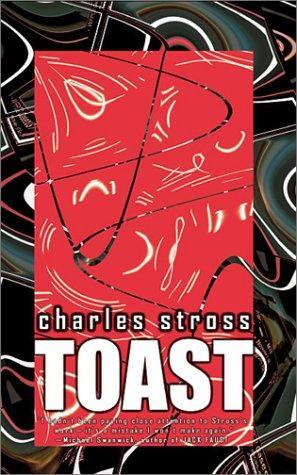
Toast
by
Stross, Charles
Published 1 Jan 2002
I don’t really understand how to create a pocket universe, or what it means. I’m just repeating what I heard there. These dudes are beyond it. Way beyond it. Whatever it is. I wandered back into the banquet hall to see the grrrls demonstrate top quark decay characteristics. It went smoothly and for an encore they manufactured some W’s and a handful of Higgs bosons. Then one of their laser stages failed and they shut the rig down. I got chatting to one of them afterwards and it turned out they were using home-brewed chirped-pulse amplifiers bolted straight in front of simple high-gigahertz network driver diodes—lasers produced by the million for wavelength multiplexed networks like your cable video system.
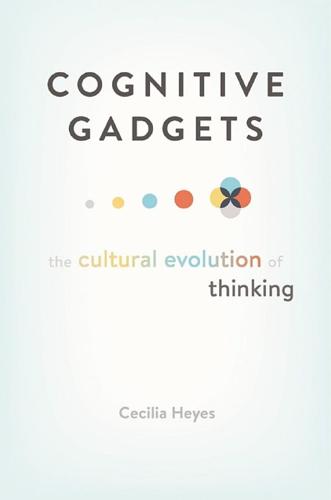
Cognitive Gadgets: The Cultural Evolution of Thinking
by
Cecilia Heyes
Published 15 Apr 2018
In the case of cultural evolution, they are typically said to be mechanisms of social learning (Boyd and Richerson, 1985; Richerson and Boyd, 2005). Episodes of social learning, in which one person learns behavior or ideas (grist) from another, are ubiquitous in everyday life—I learn to avoid eating certain mushrooms by noticing that you avoid them; you show me how to knead dough to make bread; or you tell me about the Higgs boson. Describing such episodes as examples of “copying” or “transmission” can give the misleading impression that social learning is exactly analogous to genetic replication, but it is now widely recognized that social learning is seldom, if ever, a process in which pellets of information are duplicated and moved from one place to another.
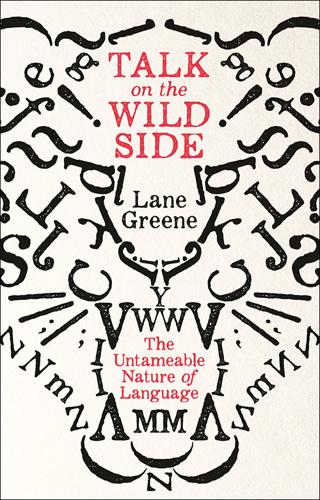
Talk on the Wild Side
by
Lane Greene
Published 15 Dec 2018
But in general linguists agree that speakers of all languages (including non-written ones, the vast majority of the world’s languages) are capable of a vast range of thought. Scientists have yet to locate a language in the world that makes certain kinds of thought impossible. Of course, certain words may be missing in a language – Cherokee may lack a word for “Higgs boson” – but words can easily be coined or borrowed. European languages constantly borrow English terms of science, technology or business. What most linguistic “technologies” like numbers and advanced vocabulary do is make certain thoughts (and the communication of those thoughts) more efficient, not make them possible in the first place.

New Dark Age: Technology and the End of the Future
by
James Bridle
Published 18 Jun 2018
When it was announced in 1990, the human genome project was regarded as the greatest single data-gathering project in history, but the plunging cost of DNA sequencing means that multiples of its data are now churned out every year. This data is increasing rapidly and is widely distributed, making it impossible to study all of it comprehensively.22 The Large Hadron Collider generates too much data to even store on site, meaning that only certain kinds of events can be stored, leading to criticisms that once the Higgs boson particle was discovered, the data was unsuitable for discovering anything else.23 All science is becoming the science of big data. It’s this realisation that brings us back to Moore’s law – and Eroom’s. As in the other sciences, despite the proliferation of research institutions, academic journals and positions (and the vast amounts of money being thrown at the problem), the actual results are degrading.
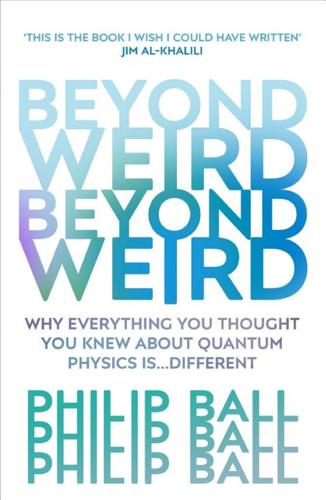
Beyond Weird
by
Philip Ball
Published 22 Mar 2018
It turns out that there are two distinct classes of fundamental particle: those with spin quantum numbers that are integers (0, 1, 2 …) and those with half-integer spin (½).fn2 The former are called bosons, and they constitute all the ‘carrier’ particles of fundamental forces: gluons (carrying the strong nuclear force that binds together the constituents of atomic nuclei), so-called W and Z mesons (carrying the weak nuclear force involved in radioactive beta decay) and photons (carrying the electromagnetic force). You will probably have heard also of the Higgs boson, which is involved in the way particles acquire some of their mass and is unique in being the only fundamental particle so far known that has zero spin. The particles with half-integer spin, meanwhile, are called fermions, and they are what make up everyday matter: electrons, protons, neutrons (those latter two are composites of fermions called quarks) and others.
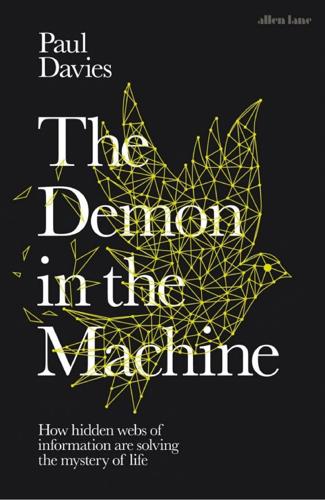
The Demon in the Machine: How Hidden Webs of Information Are Finally Solving the Mystery of Life
by
Paul Davies
Published 31 Jan 2019
I fully realize that what I have just written is in no sense a scientific argument; it is a philosophical (some might say theological) one. I raise it because in my experience as a theoretical physicist I have found that if well-established physical theory predicts that something is possible, then nature invariably seems to make use of it. One need think no further than the Higgs boson, predicted by theory in 1963 and discovered really to exist in 2012. Other examples include antiparticles and the omega minus particle. In all cases there was a well-defined place for such a thing in nature and, sure enough, they are out there. Of course, there are many speculative theories that make predictions not borne out by experiment, so my argument is only as good as the reliability of the theory concerned.

Accessory to War: The Unspoken Alliance Between Astrophysics and the Military
by
Neil Degrasse Tyson
and
Avis Lang
Published 10 Sep 2018
Today, unless they’re lucky enough to have been hired there or to have European collaborators, American particle physicists wistfully gaze across the Atlantic Ocean and over the Alps at the Large Hadron Collider near Geneva, Switzerland—the most powerful accelerator ever built, in which controlled conditions that rival the earliest high-energy moments of the Big Bang have yielded evidence of the long-sought subatomic particle called the Higgs boson. They’re wistful because Europe’s collider is only a fifth as powerful as America’s Superconducting Super Collider would have been, had Congress not cut the entire project in 1993, a few short years after peace broke out between the United States and the Soviet Union. A tale worth telling. In the 1970s, astrophysicists came to realize that the dense, hot conditions of the infant universe, fourteen billion years in the past, could be recreated within a particle accelerator.
…
Brian, 91–92 Harman, Jane, 412n Harriot, Thomas, 102 Harrison, John, 95, 96–97, 441n Harvey, Brian, 374 Harwit, Martin, 151, 223, 457n, 475n Hayabusa spacecraft (Japan), 355 Hayden Planetarium, 15, 132, 366, 451n healing, vision of future avenue to, 383–86 heat signatures, 219–20 Hecataeus of Miletus, 70 helium, discovery of, 148 Hellfire missiles, 20, 332 Henry, Paul-Pierre and Matthieu-Prosper, 148, 456–57n Henry (Prince Frederick Henry of Nassau), 104 Henry the Navigator, 79–81, 83 Herodotus, 45, 70, 423n, 434n, 440n Herschel, John Frederick William, 142 Herschel, William discovery of infrared light, 167–68, 220, 461n discovery of Uranus, 52, 167, 444n “photography” named, 142 study of sunlight, color, and heat, 167–68, 220, 461n telescope design, 444n Hertz, Heinrich, 168, 184 Hess, Rudolf, 58–59, 428n Hevelius, Johannes, 444n, 455n HEXAGON (KH-9) satellites, 205, 228–29, 230 Higgs boson, 28 hijackings of commercial airplanes, 226 Hindu astronomy and astrology, 40, 54 Hipparchus, 72, 73, 87, 93, 440n Hiroshima, Japan, 263, 301, 302, 303, 457n, 474n, 505n Historia rerum ubique gestarum (Pius II), 86 Histories (Polybius), 46–47, 119, 423–24n Hitler, Adolf appointment as chancellor of the Third Reich, 58 astrology and mysticism, 40–41, 60–62, 421n becoming Führer, 186 Beer Hall Putsch (1923), 57–58 horoscopes of, 57–58, 61, 62–63, 428n HMS Beagle, 97 Homer, 67–68 Hondius, Jocodus, 439n Hong Fan Zhuan (“Account of the Great Plan”), 43 Hooke, Robert, 109, 120 Hornsby, Thomas, 440n House Committee on Un-American Activities, 265 Howe, Ellic, 57, 58, 428n, 429n Hoyle, Fred, 402 Hubble Space Telescope civilian ownership, 233 high-resolution images of star fields, 154, 203 jitter problem, 229–30 links to KH-9 HEXAGON satellite, 227–29, 230–31 mission and discoveries, 232–33, 398 most distant galaxy, 199 proposed by Spitzer, 262 retrieval by Canadarm, 520n Hubble Wars, The (Chaisson), 227 Hughes Aircraft, 222 Hu Jintao, 376 Hulse, Russell A., 182 Hülsmeyer, Christian, 184 human body parts as measuring tools, 74–75, 93 Humboldt, Alexander von, 456n Hunter, Duncan, 412n Hurricane Maria, 181 Hussein, Saddam, 19, 20, 24, 331, 348 Huygens, Christiaan, 5–6, 36, 103, 169 Hyten, John E., 324–25, 531n ibn Mājid, Ahmad, 73, 74, 432n, 434n Iceland Christopher Columbus and, 85, 437n discovery by Irish monks, 65 Flóki saga, 430–31n Pytheas and, 71, 72, 433n Reagan-Gorbachev summit, 359 IEEE High Performance Extreme Computing Conference (2014), 224 Imago Mundi (d’Ailly), 86 immigrants in science and engineering, 21–22 Imperial America: Reflections of the United States of Amnesia (Vidal), 35 India ASATs (antisatellite weapons), 259 astrology in, 54 Bharatiya Janata Party, 54 education and life expectancy, 519n Giant Metrewave Radio Telescope, 182–83 launch services provided, 352 military spending, 353, 519n RISAT-2 satellite, 159 science and technology degrees awarded, 22 space program, 351–52 TES (Technology Experiment Satellite), 159 Indian Space Research Organisation (ISRO), 159, 352, 533n industry unity, 25, 26 Infrared Celestial Backgrounds program, 219, 221 infrared light detection of, 169–70, 199, 219–25 detector technology, 223–24, 475–76n discovery of, 146, 167–68, 220, 461n Earth’s atmosphere and, 199 emission of, 170 heat signatures, 219–20 missile detection, 219–20 nonlethal weapons using, 201 sky surveys, 219, 220–22, 223, 224–25 insulation (polyethylene), 186 Inter-Allied Military Control Commission (IAMCC), 137, 454n interferometers (radio telescopes), 182–83 Intermediate Nuclear Forces Treaty, 307 International Charter: Space and Major Disasters, 206–7 International Conference on High Performance Computing, Networking, Storage and Analysis (2012), 224 International Council of Scientific Unions, 261 international dateline, 88–89 International Geophysical Year (IGY), 261, 264, 267, 269, 292 International Launch Services, 363 International Meridian Conference, 89, 92, 98–99 International Politics of Space, The (Sheehan), 151, 522n International Space Station (ISS) ACES (Atomic Clock Ensemble in Space), 339 American astronauts ferried by Russia, 27–28, 363, 370, 372, 389 Canada and, 352, 353, 365, 368, 520n China’s exclusion from, 366, 373–74, 376–77 Columbus laboratory, 368 cost, 366, 367–68, 524n early concepts for, 352 failure of supply missions, 364, 389 history, 365–72 Japan and, 352, 355, 365, 368, 520n Kibo space laboratory, 355, 368, 520n oneness of Earth viewed from, 15, 316, 414n opposition to, 368–69 Russian service module, 363, 364, 368, 372 scheduled end of operation, 370–71, 377 Soyuz transport to, 363, 364, 370, 372, 389 spacefarer collaboration on, 316, 366 time dilation on, 218 United States as “hegemonic partner,” 370, 525n International Telecommunications Satellite Organization (Intelsat), 340, 501n invisibility, 165, 172, 175, 459–60n ionosphere ballistic missile passage through, 181, 183, 192 GPS satellites and, 333 Project Defender and, 181 and radar research, 183, 187, 190, 191–92, 465n reflection of radio waves, 176–77, 187 turbulence in, 183 Iran, 3, 299, 310, 378 Iran Deal, 378 Iraq, disintegration after Iraq War, 348, 518n Iraq Veterans Against the War (IVAW), 410n Iraq War American troops in, 24–25, 416nn antiwar movement, 10, 410n battle for Baghdad, 19–20, 348 costs of, 25, 416–17n Global Positioning System (GPS) use in, 336, 346, 348 Iraqi civilian deaths, 25, 416n military deaths and injuries, 25, 416n military satellites and, 10, 19 Operation Iraqi Freedom, 16–17, 19, 24, 197, 346–47 organizational improvements, 346–48 private contractors in, 24–25, 416n reasons for war, 11, 336, 515n space technology advancements and, 10, 344 use of military force authorized by Congress, 10–11, 410n US “troop surge,” 34 “victory” declared, 348, 518n Iraq War: Strategy, Tactics, and Military Lessons, The (Cordesman), 348 isba, 73 Ishango bone, 420n ISIS (Islamic State of Iraq and Greater Syria), 34, 514–15n Isle of Man, 71, 72 Israel, ASATs (antisatellite weapons), 259 ISR (intelligence, surveillance, and reconnaissance), 157–59, 204 ITAR (International Traffic in Arms Regulations), 374, 375, 376 It Can’t Happen Here (Lewis), 274, 315 James Webb Space Telescope, 23, 232, 233, 246–47, 533n jamming, 260, 333, 515n, 516n Jansky, Karl, 178–79, 180, 463n Japan Christianity banned in, 111 education and life expectancy, 519n firebombing of Tokyo, 301, 304 Hiroshima, 263, 301, 302, 303, 457n, 474n, 505n increasing civilian space workforce, 22, 27 and International Space Station, 352, 355, 365, 368, 520n Kibo space laboratory, 355, 368 microwave radar in World War II, 189 military spending, 353, 519n Nagasaki, 111, 263, 301, 302, 303, 474n, 505n Pearl Harbor attack in World War II, 189, 466–67n rocket development, 264, 355 Space Basic Law, 356 space program, 354–56 space spending, 354, 520n telescopes in seventeenth century, 111 Jasons, 154–55 JAXA (Japan Aerospace Exploration Agency), 32, 354–55, 520n, 533n J Dollond & Son, 130 Jena, Germany, 130, 131–32, 139, 454n Jerome, Aaron B., 126–27 João II (king), 83 Jodrell Bank Observatory, 181, 183, 191–92, 209–13, 468n see also Mark I radio telescope Johnson, Chalmers, 35 Johnson-Freese, Joan alarming US space assets, 300, 504–5n China’s space program, 373, 374, 376–77 connectivity and national security, 350 dual-use satellites, 159 International Space Station, 368 space shuttle as ASAT, 258 US space dominance prospects, 32, 396 Johnson, Lyndon B.
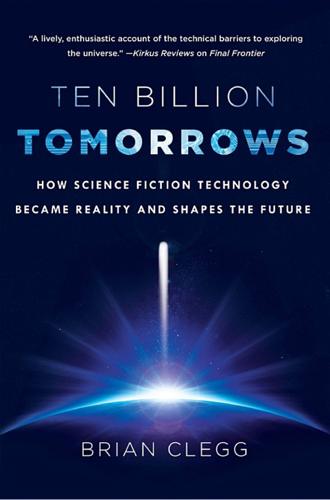
Ten Billion Tomorrows: How Science Fiction Technology Became Reality and Shapes the Future
by
Brian Clegg
Published 8 Dec 2015
But the field description is just as valid, and can be more useful for some types of calculation. Modern physics makes a lot of use of fields, both in dealing with the four forces of nature and also in the model that describes the nature and interaction of fundamental particles (the so-called Standard Model). Even the famous Higgs boson is just a manifestation of another field that is thought to stretch through all space and time, the Higgs field. There’s a tendency for those who aren’t involved in day-to-day physics to think of fields as somehow less “real” than the particles or waves we are more familiar with, but they are all just ways of describing what is observed—models, as scientists call them.
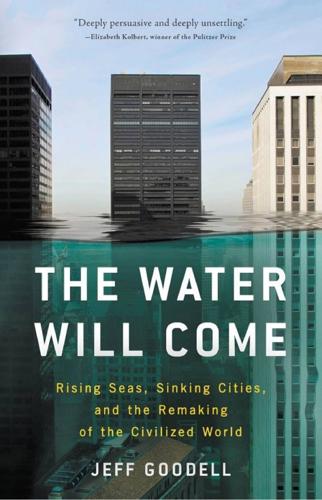
The Water Will Come: Rising Seas, Sinking Cities, and the Remaking of the Civilized World
by
Jeff Goodell
Published 23 Oct 2017
He is the child of Cuban refugees and, before he became an artist in his late twenties, had been a law school student, a street gang counselor, and a mental health counselor. He thinks of art as a continuation of that work—a way to raise awareness and make people think differently about the world around them. He has painted mangroves on city overpasses, created banners that celebrate the discovery of the Higgs boson at the Large Hadron Collider in Switzerland, and led a ten-year tree-planting campaign for schoolchildren in Miami. Given his background, it’s not surprising that Cortada was acutely aware of the parallels between political refugees of the past and climate refugees of the future. In his painting called Testamento, words from the will of a Cuban grandfather and words from the property deed of a Cuban-American granddaughter are depicted sinking beneath the waves.
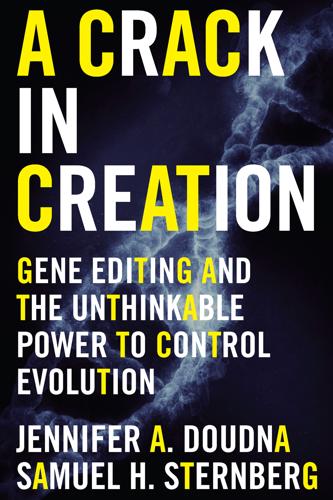
A Crack in Creation: Gene Editing and the Unthinkable Power to Control Evolution
by
Jennifer A. Doudna
and
Samuel H. Sternberg
Published 15 Mar 2017
Whereas our first 2012 manuscript had contained a clear directive to apply CRISPR in cells as a novel gene-editing platform, our second was a clear demonstration and confirmation of the power of this newfound system. As 2012 came to a close, I viewed it with considerable irony that Science magazine, which had published our previous CRISPR paper just six months prior, named genome editing one of the runner-up breakthroughs of the year (first prize went to the Higgs boson) but highlighted an older technology—TALEN—that had been discovered just before our work with CRISPR. I wondered what else CRISPR might have in store for the scientific community. Much to my delight, the first few weeks of 2013 were marked by the publication of a whopping five articles on CRISPR besides our own, all describing similar kinds of experiments in which the system had been used to edit genes in cells, just as we had proposed in 2012.

How to Spend a Trillion Dollars
by
Rowan Hooper
Published 15 Jan 2020
It has 10,000 superconducting magnets in a circular tunnel 27 kilometres in diameter, cooled by 100 tonnes of liquid helium, spewing so much data it requires the world’s largest computing grid, across 36 countries, to process it. But it is one simple point that takes the breath away. The LHC smashes particles together so hard as to rend the fabric of reality. It amazes me that the last bit of that sentence isn’t a metaphor: we can break the very building blocks of matter, and measure what happens. $ $ $ WHEN THE HIGGS BOSON was discovered at the LHC in 2012, at an estimated cost of $13.25 billion,* there was huge celebration and worldwide media acclaim. The existence of the Higgs had been predicted by our best theory of reality, the boringly named (if wildly successful) ‘standard model’. This term was coined in 1975, building on work by many scientists from the early 1960s onwards, combining three of the four known fundamental forces of nature: electromagnetism, weak and strong forces (but not gravity).
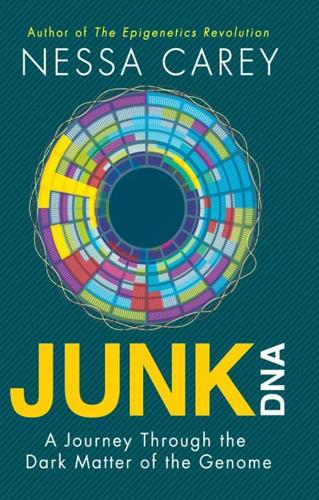
Junk DNA: A Journey Through the Dark Matter of the Genome
by
Nessa Carey
Published 5 Mar 2015
One day science will probably be able to interpret all the possible epigenetic modifications that are found in the genome and predict precisely what their consequences will be for gene expression. We’ll work out how to capture carbon, and how to establish colonies on Mars. Tuberculosis will be a distant memory and we’ll all have a good grasp of the Higgs boson. But unravelling the reasons behind the triumph of hope over experience in the investment community? Be realistic. Footnotes a The protein is called transthyretin. b The virus was cytomegalovirus (CMV). c The protein that is targeted is called apolipoprotein B100. d The drug is called Mipomersen, also known as Kynamro. 20.
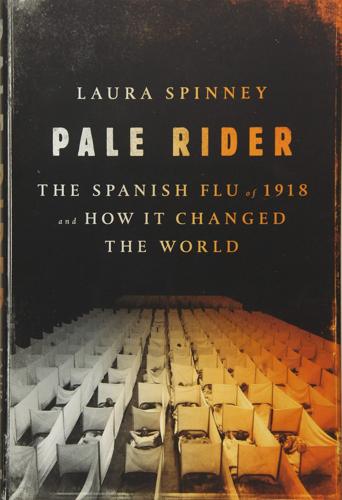
Pale Rider: The Spanish Flu of 1918 and How It Changed the World
by
Laura Spinney
Published 31 May 2017
By the 1940s, therefore, scientists had classified flu, they had introduced it to all manner of unsuspecting animals, they had even–in a tribute to human ingenuity–developed vaccines against it. But even after all doubts had been silenced as to the existence of the flu virus, it remained a mythical beast–something like a leprechaun, or the Higgs boson before it was outed in 2012–because nobody had ever seen it. It belonged to that category of creature that, in a premonitory article written in 1903, Émile Roux had labelled êtres de raison, or theoretical beings: organisms whose existence can be deduced from their effects, though they have never been detected directly.4 The problem was that, even with the help of an optical microscope, there was a limit to the tininess of objects that could be seen.
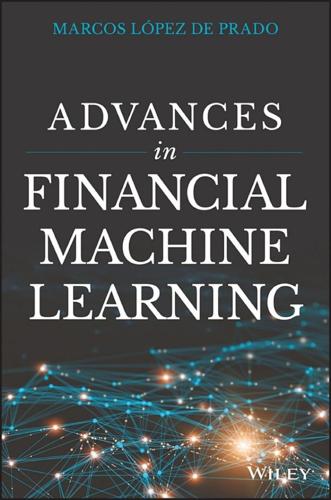
Advances in Financial Machine Learning
by
Marcos Lopez de Prado
Published 2 Feb 2018
This work is supported in part by the Office of Advanced Scientific Computing Research, Office of Science, of the U.S. Department of Energy under Contract No. DE-AC02-05CH11231. This research also uses resources of the National Energy Research Scientific Computing Center supported under the same contract. References Aad, G., et al. (2016): “Measurements of the Higgs boson production and decay rates and coupling strengths using pp collision data at and 8 TeV in the ATLAS experiment.” The European Physical Journal C, Vol. 76, No. 1, p. 6. Abbott, B.P. et al. (2016): “Observation of gravitational waves from a binary black hole merger.” Physical Review Letters, Vol. 116, No. 6, p. 061102.

A Short Ride in the Jungle
by
Antonia Bolingbroke-Kent
Published 6 Apr 2014
'I've never ridden the Trail two-up,' Digby had admitted on the phone the day before I left. 'I'm not even sure it's possible. But we'll give it a go. Just be prepared to get a very sore backside.' The next thing I knew I was pouring myself into the tiny space between Digby and our bundle of luggage, barely room for a Higgs boson between us. For six exhilarating, bottom-numbing days we rode through south-eastern Laos, mapping a route for the programme. Charismatic, mercurial and possessing eagle-like acuity, Digby's knowledge of the Trail was impressive. After almost two decades of studying it, it seemed there was nothing he didn't know.
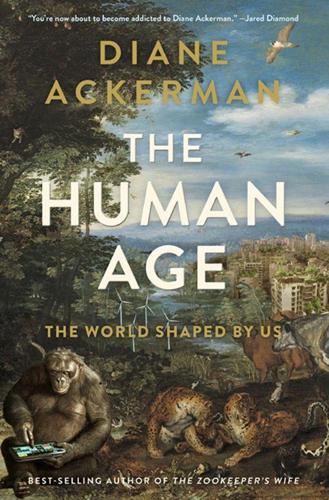
The Human Age: The World Shaped by Us
by
Diane Ackerman
Published 9 Sep 2014
Though I knew it was a long shot, I found the app doesn’t register the calls of my homely New York variety of cicada. The Buddhist mandala-makers may live in a cosmos dancing with colorful deities, just as they always have. But now they and the Dalai Lama (a science aficionado) are also aware, from mindful moment to moment, of an invisible dimension that includes neurons, quarks, Higgs bosons, MRIs, condensation nuclei, white dwarfs, DNA, and a googolplex of others. Elsewhere on Earth, over 5.2 million Internet-connected computers, citizen scientists are helping SETI (Search for Extraterrestrial Intelligence) monitor radio telescope data through the SETI@home project, hoping to catch a message from alien life forms in some distant star system.

This Will Make You Smarter: 150 New Scientific Concepts to Improve Your Thinking
by
John Brockman
Published 14 Feb 2012
Measurement and the “science” or theories it spawns must be treated with humility precisely because they are powerful ways of understanding and manipulating the world. Observations can be replicated—even if imperfectly—and others can agree on how to make the measurements on which they depend, be they measurements of intelligence, the mass of the Higgs boson, poverty, the speed at which proteins can fold into their three-dimensional structures, or how big gorillas are. No other system for acquiring knowledge even comes close to science, but this is precisely why we must treat its conclusions with humility. Einstein knew this when he said that “all our science measured against reality is primitive and childlike, and yet,” he added, “it is the most precious thing we have.”

Corduroy Mansions
by
Alexander McCall Smith
Published 1 Jan 2009
“How do you know, Oedipus? How do you know the yeti doesn’t exist?” “For the same reason I know that Father Christmas doesn’t exist,” he said. “Or the Tooth Fairy.” “Or Higgs’s boson?” Oedipus Snark’s eyes flashed. If Barbara imagines she can pull particle physics on me, he thought, she’s in for a surprise. “Higgs boson?” he snapped. “There’s mathematics for that. Where is the mathematics for the Tooth Fairy? And anyway, what about the W and Z bosons?” Barbara wondered whether she could ask for more scallops. “The W and Z bosons?” she repeated. Oedipus held her gaze. “Yes.” “I haven’t got the first clue,” she said.

Age of Discovery: Navigating the Risks and Rewards of Our New Renaissance
by
Ian Goldin
and
Chris Kutarna
Published 23 May 2016
OldWeather asks the public’s help to transcribe ships’ logs going back to the mid-nineteenth century (old logs form the most complete set of long-term climate data in existence, but like ancient Greek texts in Aldus’s day, they lie scattered, gathering dust, in maritime museums and archives the world over). Ancient Lives assembles archeology buffs to help translate thousands of 2,000-year-old Egyptian papyri (no knowledge of hieroglyphics required). Higgs Hunters invites anyone to help sift through data from the Large Hadron Collider for more evidence of the Higgs boson and other exotic particles. Zooniverse is only one citizen science platform. Others include Tomnod (tomnod.com), where volunteers scour satellite photos to help stop illegal fishing or search for missing aircraft, and EyeWire (eyewire.org), a game that helps to map the human brain. Around the world millions more volunteers are taking part in thousands of ambitious projects that would not otherwise be feasible.30 Citizen science has become a force multiplier in field after field of research.
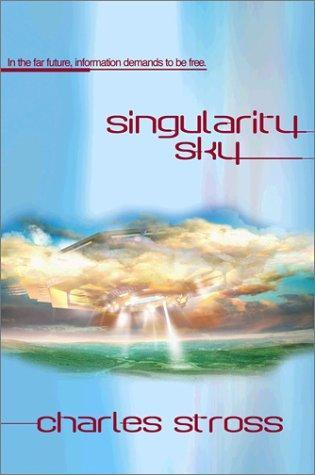
Singularity Sky
by
Stross, Charles
Published 28 Oct 2003
Sister Seventh lost herself for a while in the flux of knowledge from the Festival. It let a filtered feed of its awareness escape, titillating the Critic colony in orbit, who relayed choice tidbits her way. The Festival propagated by starwisp, that much was true. It also relied on causal channels to relay its discoveries home. Now, great Higgs boson factories were taking shape in the rings of machinery orbiting Sputnik, icy gas and dust congealing into beat-wave particle accelerators on the edge of planetary space. Thousands of huge fusion reactors were coming on-stream, each pumping out enough energy to run a continental civilization. The first batch of new starwisps was nearing readiness, and they had a voracious appetite, a tonne of stabilized antimatter each; then there were the causal channels, petabytes and exabytes of entangled particles to manufacture and laboriously, non-observationally, separate into matching batches.

The Blockchain Alternative: Rethinking Macroeconomic Policy and Economic Theory
by
Kariappa Bheemaiah
Published 26 Feb 2017
The LHC is a 27- kilometre ring of superconducting magnets that accelerates particles such as protons to the speed of light before colliding them to study the quantum particles that are inside the protons. On the 4th of July 2012, the ATLAS and CMS experiments at CERN’s Large Hadron Collider discovered the Higgs boson, the elementary particle that explains why particles have mass. It was, and will be, one of the most important scientific discoveries of the century. 11Some of the early trailblazers who combined the study of complexity theory with economics include, Kenneth Arrow (economist), Philip Anderson (physicist), Larry Summers (economist), John Holland (physicist), Tom Sargent (economist), Stuart Kauffman (physicist), David Pines (physicist), José Scheinkman (economist), William Brock (economist) and of course, W.
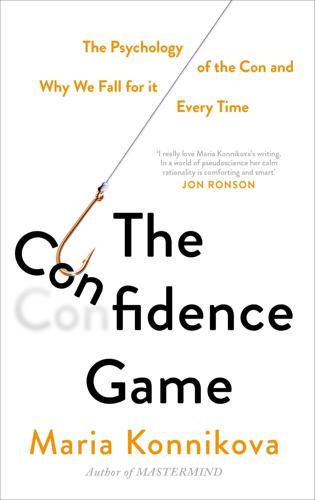
The Confidence Game: The Psychology of the Con and Why We Fall for It Every Time
by
Maria Konnikova
Published 28 Jan 2016
He had a lung condition that left him coughing amidst the smoke-filled air, and an elevated blood pressure that the stress of cell life did little to alleviate. But, he said, although it was a “very dehumanizing experience to be in prison,” adding that he and his fellow inmates were “treated like cattle,” he was staying creative, using the computer at Villa Devoto to continue with his research and follow field developments, like the Higgs boson discovery. He continued to post works in progress on ArXiv, an Internet repository of preprints in mathematical and scientific fields. Over the phone, he persisted in supervising two graduate students. He even found time to referee some journal articles. In October 2012, Frampton was allowed to leave the prison and instead spend his days under house arrest at an old friend’s home.

The Evolution of Everything: How New Ideas Emerge
by
Matt Ridley
‘The industrialised nations whose governments invested least in science did best economically,’ says Kealey, ‘and they didn’t do so badly in science either.’ To most people, the argument for public funding of science rests on a list of the discoveries made with public funds, from the internet (defence science in the United States) to the Higgs boson (particle physics at CERN in Switzerland). But that’s highly misleading. Given that government has funded science munificently, it would be odd if it had not found out something. We learn nothing about what would have been discovered by alternative funding arrangements. And we can never know what discoveries were not made, because government funding of science inevitably crowded out much of the philanthropic and commercial funding, which might have had different priorities.
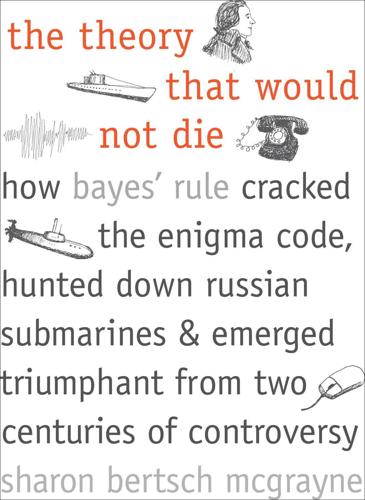
The Theory That Would Not Die: How Bayes' Rule Cracked the Enigma Code, Hunted Down Russian Submarines, and Emerged Triumphant From Two Centuries of Controversy
by
Sharon Bertsch McGrayne
Published 16 May 2011
His Ph.D. thesis from 1990 wound up introducing modern Bayesian methods to astronomy. Since then, Bayes has found a comfortable niche in high-energy astrophysics, x-ray astronomy, gamma ray astronomy, cosmic ray astronomy, neutrino astrophysics, and image analysis. In physics, Bayes is hunting for elusive neutrinos, Higgs-Boson particles, and top quarks. All these problems deal with needles in haystacks, and Loredo now uses Bayes at Cornell University in a new field, astrostatistics. In much the same way, biologists who study genetic variation are limited to tiny snippets of information almost lost among huge amounts of meaningless and highly variable data in the chromosomes.

The Most Powerful Idea in the World: A Story of Steam, Industry, and Invention
by
William Rosen
Published 31 May 2010
By the middle of the eighteenth century, despite some truly passionate devotees, most especially the English chemist Joseph Priestley, phlogiston theory was displaced, largely by the work of the French scientist Antoine Lavoisier. Which is why phlogiston theory deserves a bit more respect than it is generally given. It is a goofy theory, to be sure, with funny-sounding names for its fundamental concepts (though no funnier-sounding than quarks, Higgs bosons, or other notions from the world of quantum physics). But it is a theory, in a way that the four elements of antiquity were not. Phlogiston was incorrect in its particulars: The relationship between fire and rust is that both are examples of what happens when oxygen, which would not be discovered for another century, reacts with another substance.

Giving the Devil His Due: Reflections of a Scientific Humanist
by
Michael Shermer
Published 8 Apr 2020
Take the Core Theory of the forces and particles that make up the universe. This includes the four forces of gravity, electromagnetism, and the strong and weak nuclear forces, along with the Standard Model of elementary particles making up the nucleus of the atom: quarks, leptons, and bosons, plus the underlying Higgs boson. Carroll says this Core Theory is “indisputably accurate within a very wide domain of applicability,” such that “a thousand or a million years from now, whatever amazing discoveries science will have made, our descendants are not going to be saying ‘Ha-ha, those silly twenty-first-century scientists, believing in “neutrons” and “electromagnetism”’.”
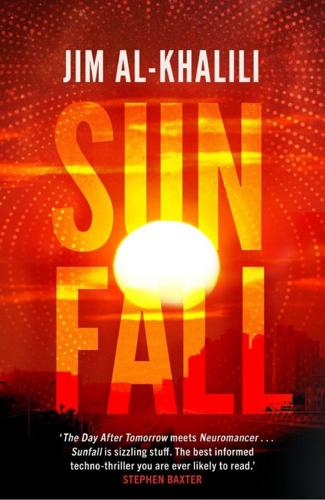
Sunfall
by
Jim Al-Khalili
Published 17 Apr 2019
Maybe it was more to do with the anticipation of seeing his daughter Evie after the conference. Their brief online exchange had brought back memories of those heady days in the late twenties when the two men had made the biggest breakthrough in particle physics research since the discovery of the Higgs boson, that dark matter self-interacts, creating normal matter in a burst of high energy. He spotted Marc striding purposefully across the grass towards him and waved. Marc waved back and grinned broadly. As soon as he was close enough Qiang extended his hand, but Marc pulled him into a bear hug. Qiang smiled, feeling a little awkward.
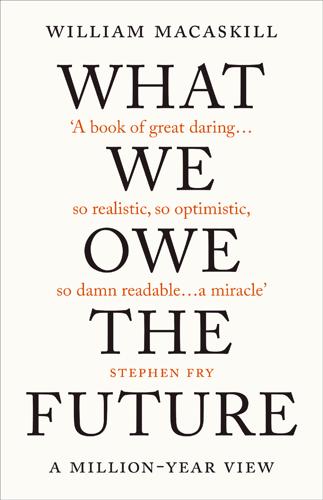
What We Owe the Future: A Million-Year View
by
William MacAskill
Published 31 Aug 2022
He was twenty-six at the time and did all this while working as a patent clerk. Compared to Einstein’s day, progress in physics is now much harder to achieve. The Large Hadron Collider cost about $5 billion, and thousands of people were involved in its design, construction, and operation.21 It enabled us to discover the Higgs boson—a worthy discovery for sure, but a small and incremental one compared to Einstein’s contributions.22 In a recent article called “Are Ideas Getting Harder to Find?,” economists from Stanford and LSE analysed this phenomenon quantitatively.23 Across a range of industries, across firms, and in the aggregate economic data they found the same thing: progress becomes harder and harder.
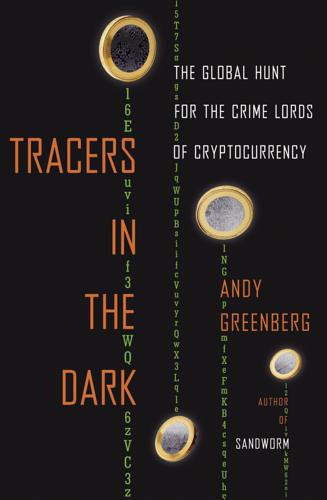
Tracers in the Dark: The Global Hunt for the Crime Lords of Cryptocurrency
by
Andy Greenberg
Published 15 Nov 2022
That drive to create a kind of hive-mind calculator of epic proportions—how to efficiently split problems of gargantuan complexity between dozens, hundreds, or thousands of normal computers—carried him through a PhD and into a career working on quantum physics visualizations and early virtual reality demonstrations. By the time he was forty, he was managing a group of computer scientists who worked with the European Organization for Nuclear Research—also known as CERN—tasked with storing and interpreting the petabytes of results from the Large Hadron Collider’s search for the Higgs boson, which produced hundreds of times as much data as the entire collection of the Library of Congress every year. Gronager was now building computer systems to grapple with some of the most massive data sets in the world. But he wasn’t particularly interested in solving the mysteries of the universe’s subatomic composition.
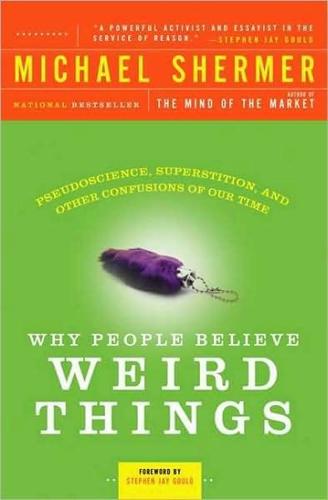
Why People Believe Weird Things: Pseudoscience, Superstition, and Other Confusions of Our Time
by
Michael Shermer
Published 1 Jan 1997
And can we really predict what beings in the far future are going to do based on what we think (and hope) they will do? 3. The If-Then Argument Problem. Tipler's theory runs something like this: if the density parameter is greater than 1 and thus the universe is closed and will collapse; if the Bekenstein bound is correct; if the Higgs boson is 220 ± 20 GeV; if humans do not cause their own extinction before developing the technology to permanently leave the planet; if humans leave the planet; if humans develop the technology to travel interstellar distances at the required speeds; if humans find other habitable planets; if humans develop the technology to slow down the collapse of the universe; if humans do not encounter forms of life hostile to their goals; if humans build a computer that approaches omniscience and omnipotence at the end of time; if Omega/God wants to resurrect all previous lives; if. . . ; then his theory is right.

Blockchain Revolution: How the Technology Behind Bitcoin Is Changing Money, Business, and the World
by
Don Tapscott
and
Alex Tapscott
Published 9 May 2016
It was perfectly suited to sending electronic pennies, nickels, and dimes over the Internet.”2 It was so perfect that Microsoft and others were interested in including eCash as a feature in their software.3 The trouble was, online shoppers didn’t care about privacy and security online then. Chaum’s Dutch company DigiCash went bankrupt in 1998. Around that time, one of Chaum’s associates, Nick Szabo, wrote a short paper entitled “The God Protocol,” a twist on Nobel laureate Leon Lederman’s phrase “the God particle,” referring to the importance of the Higgs boson to modern physics. In his paper, Szabo mused about the creation of a be-all end-all technology protocol, one that designated God the trusted third party in the middle of all transactions: “All the parties would send their inputs to God. God would reliably determine the results and return the outputs.
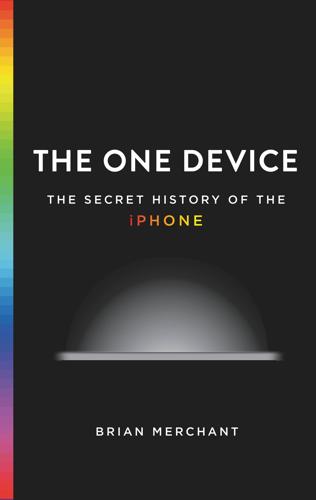
The One Device: The Secret History of the iPhone
by
Brian Merchant
Published 19 Jun 2017
We’re currently in building 1, but the structure next door is building 50. “So someone finally made an app for iPhone to help people find their way. I use it all the time.” CERN is best known for its Large Hadron Collider, the particle accelerator that runs under the premises in a seventeen-mile subterranean ring. It’s the facility where scientists found the Higgs boson, the so-called God particle. For decades, CERN has been host to a twenty-plus-nation collaboration, a haven that transcends geopolitical tensions to foster collaborative research. Major advances in our understanding of the nature of the universe have been made here. Almost as a by-product, so have major advances in more mundane areas, like engineering and computing.

Terms of Service: Social Media and the Price of Constant Connection
by
Jacob Silverman
Published 17 Mar 2015
If you were to succumb and click on one of Know More’s curiosity-gap headlines, you’d be served up a small dose of shareable media—a video, an image macro—along with the opportunity to click in order to “know more”—that is, to learn the real backstory behind a congressman’s crazy statements or the Higgs boson particle. The real story is another click away, but the site has already gotten your page view. By this point, the language of viral media had already infiltrated Wonkblog. The day it unveiled Know More, it also published Wonkblog posts titled “The 13 Reasons Washington Is Failing” and “This One Photo Shows How Humiliating the Government Shutdown Is for the United States,” the latter a textbook curiosity-gap headline.

The Precipice: Existential Risk and the Future of Humanity
by
Toby Ord
Published 24 Mar 2020
National Security Archive. Butler, D., and Ledford, H. (2012). “US Biosecurity Board Revises Stance on Mutant-Flu Studies.” Nature. Butler, S. (June 13, 1863). Darwin Among the Machines. The Press. —(1872). Erewhon. Ballantyne and Co. Buttazzo, D., et al. (2013). “Investigating the Near-Criticality of the Higgs Boson.” Journal of High Energy Physics, 2013(12), 89. BWC ISU (2019). Biological Weapons Convention—Budgetary and Financial Matters (January 21, 2019, Letter from BWC Implementation Support Unit to BWC Representatives). https://www.unog.ch/80256EDD006B8954/(httpAssets)/1FE92995054B8108C1258394004233AD/$file/2019-0131+2018+MSP+Chair+letter+on+financial+measures.pdf.
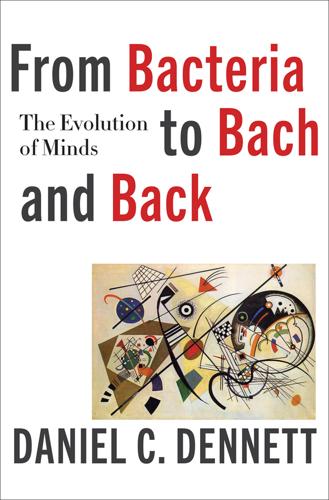
From Bacteria to Bach and Back: The Evolution of Minds
by
Daniel C. Dennett
Published 7 Feb 2017
Google Translate no doubt has a rich body of data about the contexts in which “knife” appears, a neighborhood that features “cut,” “sharp,” “weapon” but also “wield,” “hold,” “thrust,” “stab,” “carve,” “whittle,” “drop,” and “bread,” “butter,” “meat” and “pocket,” “sharpen,” “edge,” and many more terms, with their own neighborhoods. Doesn’t all this refined and digested information about linguistic contexts amount to a sort of grounding of the word “knife” after all? Isn’t it, in fact, the only sort of grounding most of us have for technical terms such as “messenger RNA” and “Higgs boson”? It does guide the translation process down ever more appropriate channels. If you rely on Google Translate to be your bilingual interpreter, it will hardly ever let you down. Doesn’t that demonstrate a serious degree of comprehension? Many will say NO! But if we are to keep this adamant denial from being a mere ritualistic defiance of the machine, there had better be something the real comprehender can do with his or her (or its) comprehension that is beyond the powers of Google Translate.

Politics on the Edge: The Instant #1 Sunday Times Bestseller From the Host of Hit Podcast the Rest Is Politics
by
Rory Stewart
Published 13 Sep 2023
He had found his two years as Foreign Secretary humiliating. A man who enjoyed the improbable, the incongruous and the comically overstated had been trapped in a department whose religion was tact and caution. He had not enjoyed measuring and managing British diplomatic influence, which often felt to him as infinitesimal, unpredictable and elusive as a Higgs boson. Perhaps only being an abbot of a Trappist monastery would have suited him less. And he didn’t think Theresa May needed to compromise. Boris wanted Britain to be able to trade freely with the world, set its own import duties and regulations, and have an open border, strong trade with Europe and peace in Ireland.
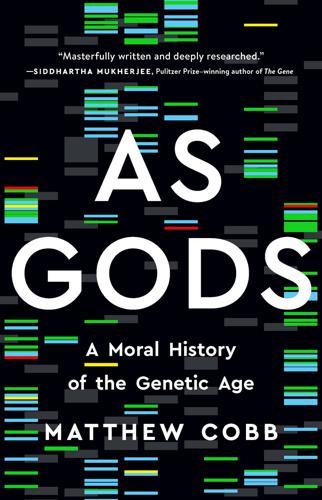
As Gods: A Moral History of the Genetic Age
by
Matthew Cobb
Published 15 Nov 2022
v In fact, Brenner did not quite say this, and he spent some time tracking down what exactly he did say where and when. As with ‘Play it again, Sam’, ‘Alas, poor Yorick, I knew him well’ and so on, the inaccurate popular version is better. Brenner, S. (2002), Genome Biology 3:comment1013.1–1013.2. vi Science magazine’s 2012 Breakthrough was the detection of the Higgs boson at CERN; CRISPR was not even a runner-up, overshadowed by the application of TALENs – luridly described as ‘genomic cruise missiles’ – to pigs. CRISPR finally became Science’s Breakthrough of the Year in 2015, three years after … the breakthrough. In a simultaneous public vote, CRISPR was beaten by the New Horizons mission to Pluto.

A Generation of Sociopaths: How the Baby Boomers Betrayed America
by
Bruce Cannon Gibney
Published 7 Mar 2017
For many on the Boomer Right, there is nothing to like about the phrase “government-funded science” and research suffers accordingly. This is especially the case for research that might call into question any preexisting beliefs, violate Norquist’s tax pledge, or disturb the evangelical or business sensibilities of core constituencies, which is to say, most research. The Higgs boson may be the “god particle,” but it is not God, and definitely costly, so: super-colliders canceled. Alternative energy being “alternative” to conventional energy: out. And so on. The Boomer Right ruled out areas of research as a matter of prejudice and convenience, which is no way to create a future.

The Singularity Is Nearer: When We Merge with AI
by
Ray Kurzweil
Published 25 Jun 2024
Zalta (Winter 2018), https://plato.stanford.edu/entries/fine-tuning/#FineTuneCondEarlUniv. BACK TO NOTE REFERENCE 55 According to the Standard Model, there are six kinds of quarks, six antiquarks, six leptons, six antileptons, eight gluons, photons, W+ bosons, W- bosons, Z bosons, and the Higgs boson. For more on the Standard Model’s so-called particle zoo, see Julian Huguet, “Subatomic Particles Explained in Under 4 Minutes,” Seeker, YouTube video, December 18, 2014, https://www.youtube.com/watch?v=eD7hXLRqWWM; Peter Kalmus, “The Physics of Elementary Particles: Part I,” Plus Magazine, April 21, 2015, https://plus.maths.org/content/physics-elementary-particles; Guido Altarelli and James Wells, “Gauge Theories and the Standard Model,” in Collider Physics Within the Standard Model, vol. 937 of Lecture Notes in Physics, ed.

Lonely Planet Switzerland
by
Lonely Planet
Other great Swiss science forays include the ground-breaking glacial research carried out by courageous 19th-century scientists on the extraordinary 23km-long Aletsch Glacier in the Upper Valais, and a chemist in Basel called Albert Hofmann inadvertently embarking on the world’s first acid trip – ingesting lysergic acid diethylamide (LSD) – in 1943. CERN's most recent headline-grabbing breakthrough came in 2012, when scientists revealed that they had identified the subatomic particle known as the Higgs boson (aka the 'God particle'). Science Trips CERN, Geneva Technorama, Winterthur Einstein-Haus, Bern ON GUARD ‘The Swiss are most armed and most free’, wrote Machiavelli. Yet more than 400 years after their last major military excursion, even the Swiss are losing enthusiasm for ‘armed neutrality’.
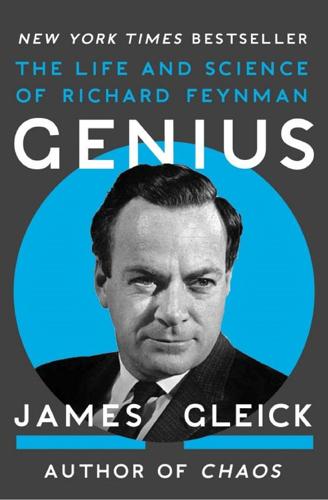
Genius: The Life and Science of Richard Feynman
by
James Gleick
Published 1 Jan 1992
Quarks and Partons In 1983, looking back on the evolution of particle physics since the now-historic Shelter Island conference, Murray Gell-Mann said, uncontroversially, that he and his colleagues had developed a theory that “works.” He summed it up in one intricately crafted sentence (rather more refined than “All things are made of atoms …”): It is of course a Yang-Mills theory, based on color SU(3) and electroweak SU(2) U(1), with three families of spin ½ leptons and quarks, their antiparticles, and some spinless Higgs bosons in doublets and antidoublets of the weak isotopic spin to break the electroweak group down to U1 of electromagnetism. His listeners recognized vintage Gell-Mann, from the “of course” onward. For aficionados there was a poetry in the jargon, much of which Gell-Mann had invented personally.
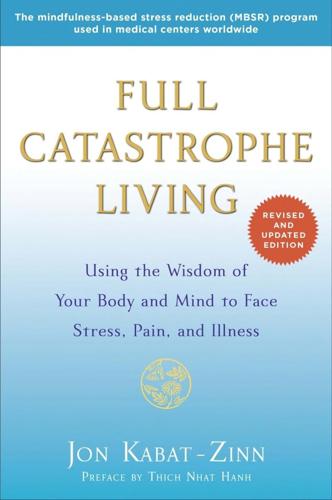
Full Catastrophe Living (Revised Edition): Using the Wisdom of Your Body and Mind to Face Stress, Pain, and Illness
by
Jon Kabat-Zinn
Published 23 Sep 2013
Bringing mindfulness to your interactions with your doctors, both before you see them and during your encounters with them, can help you to formulate and ask the questions you most want answers to, and to advocate more effectively for yourself. Another influence that pushed medicine toward a new paradigm, if only indirectly, stemmed from the revolution in the science of physics that started around the beginning of the twentieth century and is still continuing, with the recent discovery of the Higgs Boson, and in the form of ongoing debates on string theory, supersymmetry, and the ultimate nature of matter, energy, and space itself, including the question of whether there is a single universe or many universes, of which ours is only one. The most rigorous of the physical sciences has had to come to terms with new discoveries showing that, at the deepest and most fundamental level, the natural world is neither describable nor understandable in conventional terms.